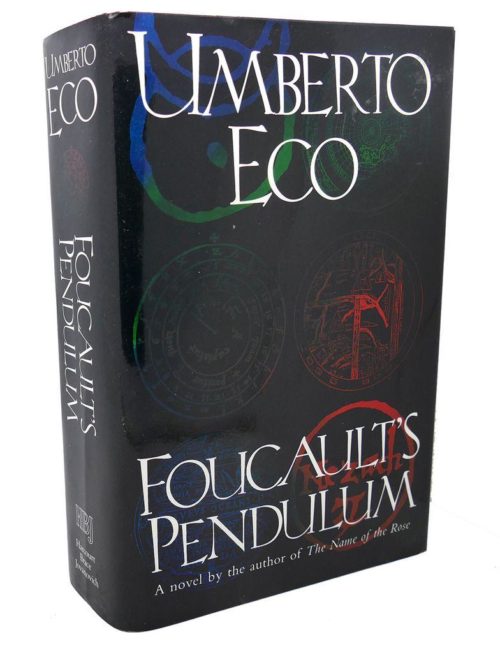
This page lists my 100 favorite adventures published during the cultural era known as the Eighties (1984–1993, according to HILOBROW’s periodization schema). This BEST ADVENTURES OF THE EIGHTIES list is a work in progress, and is subject to change. I hope that the information and opinions below are helpful to your own reading; please let me know what I’ve overlooked.
JOSH GLENN’S *BEST ADVENTURES* LISTS: BEST 250 ADVENTURES OF THE 20TH CENTURY | 100 BEST OUGHTS ADVENTURES | 100 BEST RADIUM AGE (PROTO-)SCI-FI ADVENTURES | 100 BEST TEENS ADVENTURES | 100 BEST TWENTIES ADVENTURES | 100 BEST THIRTIES ADVENTURES | 75 BEST GOLDEN AGE SCI-FI ADVENTURES | 100 BEST FORTIES ADVENTURES | 100 BEST FIFTIES ADVENTURES | 100 BEST SIXTIES ADVENTURES | 75 BEST NEW WAVE SCI FI ADVENTURES | 100 BEST SEVENTIES ADVENTURES | 100 BEST EIGHTIES ADVENTURES | 75 BEST DIAMOND AGE SCI-FI ADVENTURES | 100 BEST NINETIES ADVENTURES | NOTES ON 21st-CENTURY ADVENTURES.
Once I’ve completed my research and reading for the Eighties, I’ll add an introductory note about what I enjoy and admire about this era’s adventure lit. For the moment, I’ll paste in something I’ve written elsewhere about what I don’t like about Eighties (and Nineties) adventure….
If the Eighties began in a good way with Neuromancer, they began in a shitty way with The Hunt for Red October — which, alas, was a vastly more popular and influential novel.
I haven’t enjoyed the post-1983 adventures I’ve tried to read by Tom Clancy. Not to mention those by: Robert Ludlum, Robert Jordan, or Robert Crais; James Patterson, James Redfield, James Rollins, or James Dashner; R.A. Salvatore, L.J. Smith, J.D. Robb, V.C. Andrews, J.R. Ward, P.C. Cast, or R.L. Stine; Scott Turow, Scott Westerfeld, Scott Bakker, or Orson Scott Card. Also: Jeffrey Archer, Dan Brown, Thomas Harris, Sue Grafton, John Grisham, Sidney Sheldon, Dean Koontz, Daniel Silva, Vince Flynn, Stieg Larsson, Gillian Flynn, Michael Connelly, Clive Barker, Greg Iles, Robin Hobb, Ted Dekker, Margaret Weis, Tess Gerritsen, Mark Z. Danielewski, Patricia C. Wrede, Christopher Paolini, Richelle Mead, Alexander McCall Smith, Stephenie Meyer, Matthew Pearl, Holly Black, Terry Brooks, Pittacus Lore, Jim Butcher, Angie Sage, Anthony Horowitz, Megan Whalen Turner, Gregory Maguire, Bernard Cornwell, David Baldacci, Mary Higgins Clark, Cornelia Funke, Tami Hoag, Lemony Snicket (except when illustrated by Seth), Alyson Noel, Brandon Mull, Tana French, Laurell K. Hamilton, Erin Hunter, Terry Goodkind, Rick Riordan, Kate Mosse, Jeff Lindsay, Christine Feehan, Neal Shusterman, Patricia Briggs, Veronica Roth, Joe Hill, Lee Child, Clive Cussler, Julie Kagawa, Harlan Coben, Lisa Gardner, Michael Scott, Ilona Andrews, William Paul Young, Cassandra Clare, and David Eddings.
Although I like (or sorta like) the pre-1984 writings of Frederick Forsyth, Stephen King/Richard Bachman, Robert Heinlein, Robert B. Parker, Robin Cook, Larry Niven and Jerry Pournelle, Stephen R Donaldson, Ken Follett, Lawrence Block, Mario Puzo, Anne Rice, Dick Francis, Michael Crichton, Frank Herbert, Isaac Asimov, Douglas Adams, Piers Anthony, Marion Zimmer Bradley, Jean M. Auel, Roger Zelazny, and Anne McCaffrey, their post-1983 adventures don’t do it for me.
I find it more difficult to identify 10 great adventure novels (or comics) from each year of the Eighties than it was to do so for earlier periods. But it’s not impossible! I’ve developed a preliminary list, and my research and reading continues apace. During 2020, I’m confident that I’ll be able to complete this page.
— JOSH GLENN (2020)
- William Gibson‘s Diamond Age sci-fi adventure Neuromancer. Gibson may not have invented “cyberspace,” prototypes of which we can find in James Tiptree Jr.’s The Girl Who Was Plugged In (1973) and John Brunner’s The Shockwave Rider (1975), but he coined the term; and Neuromancer — which describes cyberspace as “a consensual hallucination experienced daily by billions of legitimate operators, in every nation, by children being taught mathematical concepts […] A graphic representation of data abstracted from banks of every computer in the human system […] Lines of light ranged in the nonspace of the mind, clusters and constellations of data” — single-handedly popularized the concept. Case (a computer hacker), Molly Millions (a cyborg mercenary), and Peter (a thief and illusionist) are hired by a mysterious employer to commit a series of virtual-reality crimes that eventually lead to their assault on an orbiting data-fortress that houses two vastly powerful AIs. The plot is thrilling, but it’s the novel’s endstage-of-capitalism context — a near-future dystopian world dominated by corporations and inescapable technology, Chandler-esque noir cityscapes populated by colorful lowlifes, a virtual reality global network known as “the Matrix” — that earned it a richly deserved cult following. It’s an extraordinary debut novel, well worth revisiting. Fun facts: Neuromancer was the first novel to win the Nebula, the Philip K. Dick, and the Hugo Awards. Its sequels are Count Zero (1986) and Mona Lisa Overdrive (1988). Tim Miller, who made the Deadpool movie, has signed on to direct the film adaptation, currently in development.
- Stan Sakai’s talking-animal ronin comic Usagi Yojimbo (serialized 1984 – present). Miyamoto Usagi, a masterless samurai (that is to say, a ronin), roams a civil war-plagued 17th-century Japan, contending and cooperating with anthropomorphic cats, snakes, and other creatures — such as the evil Lord Hikiji, a rhino bounty hunter, a blind sword-pig, and the occasional ninja mole. Sakai, a Japanese-born American cartoonist who formerly worked on Sergio Aragone’s Groo, inserts his perapatetic rabbit yojimbo (bodyguard) into fanciful Japanese myths and legends… with plenty of references to his favorite samurai movies. I wasn’t attracted to Usagi Yojimbo when it first appeared, I think primarily because it was in black and white — and it seemed cutesy. Now, however, I appreciate its blend of humor, violence, and heartfelt emotion. The landscapes are beautifully rendered, the architecture and costumes appear to be faithfully rendered, the mythical creatures are fun, and the serial installments in Usagi’s musha shugyō (warrior’s pilgrimage) is gripping. Over the years, Sakai has given us long extended storylines and a few novel-length narratives; on the whole, I prefer to episodic stories — which are the most like a Kurosawa movie. Fun facts: Miyamoto Usagi, whom Sakai based partially on the famous swordsman Miyamoto Musashi, first appeared in the 1984 anthology Albedo Anthropomorphics in 1984, before landing his own series in 1987. The Usagi Yojimbo saga has been pubished by Fantagraphics, Mirage, and Dark Horse. Usagi, by the way, is Japanese for “rabbit.”
- Martin Amis‘s picaresque/crime adventure Money. Subtitled A Suicide Note, Amis’s fifth novel concerns the misadventures of John Self, a vile British director of TV ads who heads to New York to shoot a film. Set in the summer of 1981, with the Brixton riots and the royal wedding going on in the background, it’s a novel about how pear-shaped and porno-fied American culture has become, and how Americanized British culture has become. (Self eats a lot of fast food, with monikers like Rumpburger, Big Thick Juicy Hot One, and Long Whopper.) Everything goes wrong with the shoot — one begins to suspect that Fielding Goodney, the producer, is for some reason intentionally sabotaging things. But Self doesn’t need any help getting into trouble. His eating, drinking, pill-popping, smoking, whoring, gambling, shitting, and — above all else — spending spiral out of control. As with London Fields, Amis’s 1989 murder mystery, Money is a blackly comic puzzle — the twisted lineaments of which we cannot begin to comprehend until the novel’s surprise denouement. Nothing is as it seems. An arrogant character, a novelist named Martin Amis who lives nearby in Notting Hill, appears as a kind of confidant in Self’s final breakdown; Self himself is not himself! What he is, is: misanthropic, misogynistic, and quite amusing. He’s a Kingsley Amis character without any restraints. Fun facts: Time Magazine named Money one of the top 100 novels of all time. It was adapted as a two-part TV series — starring the excellent Nick Frost as John Self — by the BBC in 2010.
- Ross Thomas’s political thriller Briarpatch. Benjamin “Pick” Dill, a Washington, DC-based investigator working for a U.S. Senate investigations subcommittee, returns to his (unnamed, Oklahoma City-like) hometown when his sister Felicity, a homicide detective, is killed in a car bombing. While he’s there, Dill is also tasked with taking a deposition from his boyhood friend Jake Spivey, an ex-CIA op who — in the aftermath of the Vietnam War — made an illicit fortune as an arms dealer. Spivey, it seems, is the only person who can take down Clyde Brattle, another ex-Agency man who is suspected of having committed crimes against the state. Dill discovers evidence suggesting that his sister was a crooked cop, but he doesn’t believe it. His investigation brings him into contact with his sister’s friend Anna Maud Singe, a beautiful lawyer, who is convinced of Felicity’s innocence; and with Felicity’s boss, the chief of detectives, who is not so sure. The titular briarpatch is Spivey’s mansion, which is guarded by a trio of Mexican thugs. Several homicides ensue. Who’s to blame — the friendly ex-spook, the sinister ex-spook, or someone else? Fun facts: Briarpatch was awarded the 1985 Edgar for Best Novel. The USA Network has adapted the novel as a TV show, which will debut in February 2020; it stars Rosario Dawson, cast as the returning investigator.
- Robin McKinley’s Damar YA fantasy adventure The Hero and the Crown. Aerin, heroine of this prequel to The Blue Sword (1982), isn’t your usual princess. She’s considered ugly — because she’s tall, awkward, fair-skinned, redheaded; other inhabitants of Damar, a remote region of an empire called Homeland, are bronzed and black-haired. Worse, she is the only young member of the royal family whose magical Gift has never manifested. Still, her cousin Tor — who is heir to the throne — is in love with her, though she doesn’t realize it. She trains herself, secretly and stubbornly, to become a warrior; and she develops a balm that protects its user against flame — which will come in handy when she heads out, on her lame but trusty steed Talat, to kill a few of the minor dragons who’ve infested Damar. Left behind when Damar’s armed forces march to battle against their Northern neighbors, Aerin must deal with a great dragon, the dread Maur. Meanwhile, her dreams are haunted by Luthe, the pale-skinned mage of the mountains, the Edward to Tor’s Jacob. Whom will she choose? Fun facts: Winner of the Newbery Medal. Short stories set in Damar include: “The Healer” (1982), “The Stagman” (1984), “The Stone Fey” (1998), and “A Pool in the Desert” (2004).
- Octavia E. Butler’s Patternist sci-fi adventure Clay’s Ark. In the year 2021, a doctor named Blake and his teenage daughters are captured by Eli Doyle, the only survivor of Clay’s Ark, a spaceship that — upon its return from the first manned mission to Proxima Centauri — has crash-landed in southeastern California’s Mojave Desert. Infected with an alien microorganism that gives him heightened sensory and physical powers, but which compels him to transmit the infection to others via sexual contact, Eli has isolated himself on an isolated ranch… where he and others whom he’s captured (all of whom have been altered, by the microorganism, in ways that allow them to survive and thrive) are raising their sphinx-like offspring — intelligent quadruped mutants who perceive uninfected humans as food, and who can spread the microorganism through their bite. Society, meanwhile, has devolved into armed enclaves, marauding “car families,” and other post-apocalyptic phenomena. Blake and his daughters must decide whether to resign themselves to living within Eli’s enclave… or escape, and risk not only being captured by even worse predators, but aso creating an uncontrollable epidemic that could forever transform humankind. Though written last, Clay’s Ark is chronologically the third in the Patternist series. Fun facts: With the exception of Kindred in 1979, all of Butler’s earlier books are set in the Patternist universe. The first Patternist installment, Patternmaster, was published in 1976.
- Alan Moore’s Saga of the Swamp Thing comic series (1984–1987). The Swamp Thing — an anthropomorphic mound of vegetable matter, originally a scientist named Alec Holland — first appeared in House of Secrets in 1971, before getting his own series. In 1982, DC Comics revived the moribund series, attempting to capitalize on the Wes Craven film of the same name; however, the series was headed for cancelation when Alan Moore — then a relatively unknown writer for the British comics magazine 2000 AD — was given free rein to revamp the character. Moore’s Swamp Thing is not a transformed human, but a monster — albeit one which has absorbed Alec Holland’s knowledge, memories, and skills. What’s more, this Swamp Thing is the latest in a long line of designated defenders of “the Green,” an elemental community connecting all plant life on Earth. Moore’s run on the title — the first mainstream comic book series to completely abandon the Comics Code Authority — is a horror story on a semi-mythic level. Swamp Thing Annual #2, during which the Swamp Thing encounters the occult DC characters Deadman, the Phantom Stranger, the Spectre, and Etrigan in the Underworld, is modeled on Dante’s Inferno. Moore has a lot of fun, here: Human/plant romance and intercourse; vampires, zombies, and a werewolf; and a crossover with Walt Kelly’s Pogo and his swamp-dwelling friends. Fun facts: In the wake of Moore’s run on Swamp Thing and his Watchmen series, the visionary DC editor Karen Berger recruited Neil Gaiman, Dave McKean, Peter Milligan, and Grant Morrison, among other artists later described as the “British Invasion.” Characters spun off from Moore’s Swamp Thing — e.g., The Sandman, Hellblazer, The Books of Magic — gave rise to DC’s Vertigo comic book line.
- K.W. Jeter’s Diamond Age sci-fi adventure Dr. Adder. Jeter’s debut novel was written in 1972, the year that Pink Flamingos — John Waters’s trashy, hyperbolic, violent movie that notoriously features a live chicken being crushed between copulating weirdos — was released. Dr. Adder wasn’t published until 1984, because of the weird sex (it begins in a mutated-chicken-whore brothel managed by our protagonist, the disaffected Limmit) and hyperbolic violence, at which point it gained a cult following. It has been hailed as perhaps the first cyberpunk novel, which to me suggests that John Waters is the godfather of cyberpunk! The titular Dr. Adder is a Doctor Moreau-like surgeon who dwells in the ruins of future Los Angeles, reshaping the body parts of Orange County’s perverted teen runaways. Adder has become an unlikely symbol of freedom to LA and OC denizens, who are oppressed by the puritanism of John Mox, a financial titan and would-be ayatollah — whose daily TV sermons are opposed by the freaky ramblings of DJ KCID, a pirate-radio operator. What does the Internet-like space occupied by Mox and KCID have to do with the Interface, LA’s seediest neighborhood? Once a WMD-toting Limmit comes to town, we’ll find out. Dr. Adder is often funny, but it’s also misogynistic and disturbing. Fun facts: The character KCID is modeled after Jeter’s friend, the legendary sci-fi author Philip K. Dick. Dick contributed an Afterword to Dr. Adder, in which he claimed that had its publication not been delayed, its impact on science fiction would have been enormous.
- Jim Shooter, Mike Zeck, and Bob Layton’s Marvel Super Heroes Secret Wars (Marvel Comics, serialized 1984–1985). Secret Wars is a twelve-issue crossover limited series, written by Marvel Comics’ editor-in-chief Jim Shooter, with art by Mike Zeck and Bob Layton. Fascinated by the presence of super-powered beings on Earth, a cosmic entity known as the Beyonder kidnaps members of the Avengers (including Captain America, Iron Man, She-Hulk, and Thor), the Fantastic Four (Human Torch, Mister Fantastic, The Thing), and the X-Men (including Nightcrawler, Rogue, Storm, Wolverine), as well as Spider-Man, Spider-Woman, and the Hulk, and teleports them to “Battleworld,” a purpose-built arena stocked with alien weapons and technology. There, he pits the superheroes against Doctor Doom, Doctor Octopus, the Enchantress, Kang the Conqueror, Klaw, the Lizard, Molecule Man, Ultron, and other supervillains — including the newly minted villainesses Titania and Volcana. A thrilling, goofy battle royale ensued, with sub-plots: Spider-Man finds and wears the black costume for the first time; Colossus breaks up with Kitty Pryde; etc. The scenario, which is reminiscent of Marion Zimmer Bradley’s now-obscure 1974 sci-fi novel Hunters of the Red Moon, is considered one of the first “Event Comics” ever, and is considered second only to DC Comics’ Crisis on Infinite Earths event in terms of its significance. Fun facts: Aware that Mattel was interested in licensing Marvel’s characters, Jim Shooter proposed staging the Secret Wars event as a platform around which Mattel could build a theme. It was Mattel — which would release three waves of action figures, vehicles, and accessories in the Secret Wars toyline from 1984 to 1985 — who suggested the word “secret” be included in the title.
- Sarah Caudwell’s Hilary Tamar crime adventure The Shortest Way to Hades. In her second and most entertaining outing, Hilary Tamar, a snobbish Oxford professor of Legal History, is called in by former students — Cantrip, Ragwort, Selina and Julia, the junior members of a London legal firm — to investigate the drowning death of a young woman. The victim, it seems, had stood in the way of her beautiful cousin Camilla’s inheritance. Was she murderered? Tamar flies to the Greek island of Corfu, where the drowning took place; the Edmund Crispin-like farcical murder mystery involves not only arcane aspects of British inheritance law but erudite interpretations of Greek mythology. The cool-headed Selena narrates much of the adventure. At one point, finding herself at an orgy, Selena instead produces a copy of Pride and Prejudice and begins to read it. The book is drily witty, never more so than when it reverse gender stereotypes; for example: “Young men … like to be thought of as people, not as mere physical objects: you should therefore begin by seeming to admire their fine souls and splendid intellects and showing a warm interest in their hopes, dreams and aspirations.” Fun facts: Sarah Caudwell was the pseudonym of barrister and insurance exec Sarah Cockburn, who wrote three other Hilary Tamar novels — Thus Was Adonis Murdered, The Sirens Sang of Murder, The Sibyl in Her Grave.
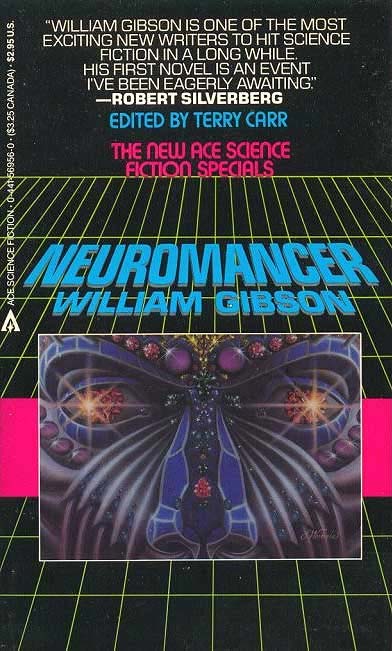
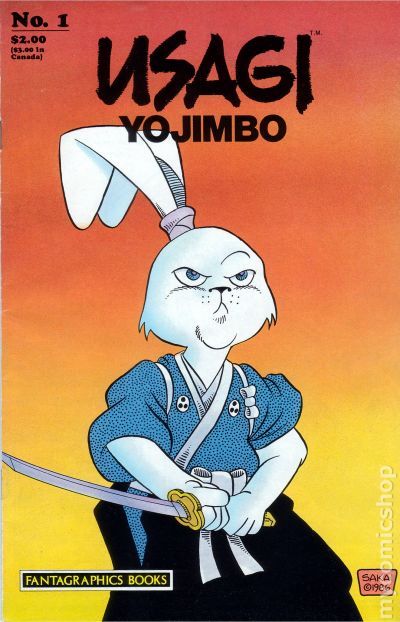
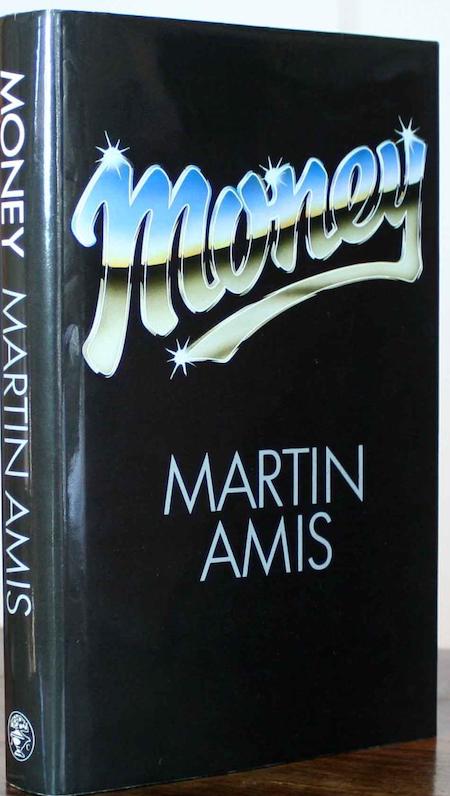
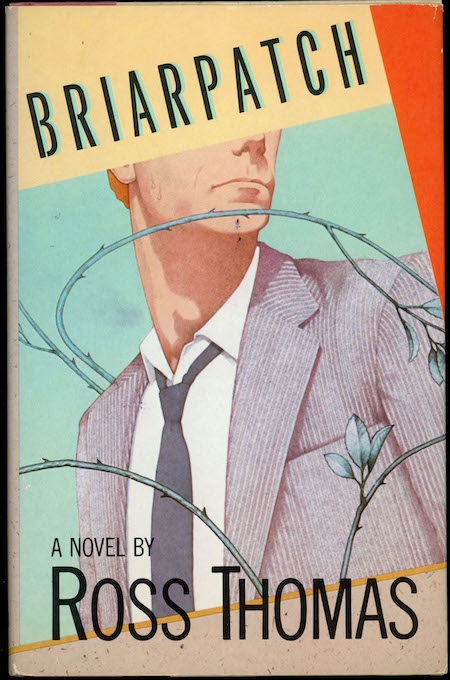
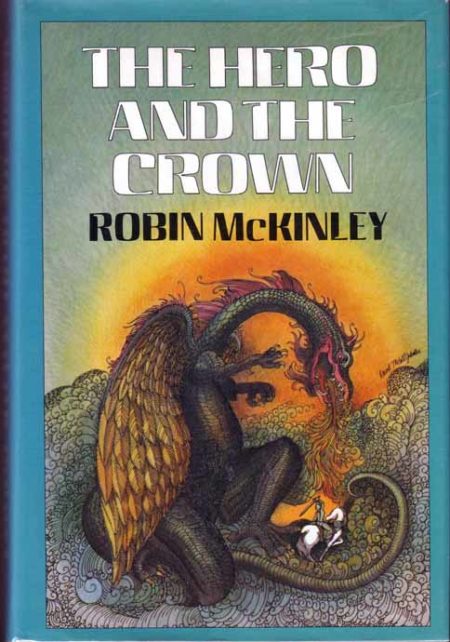

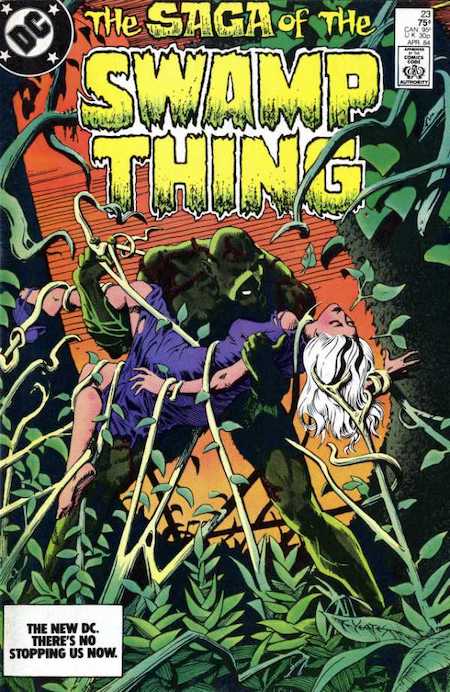
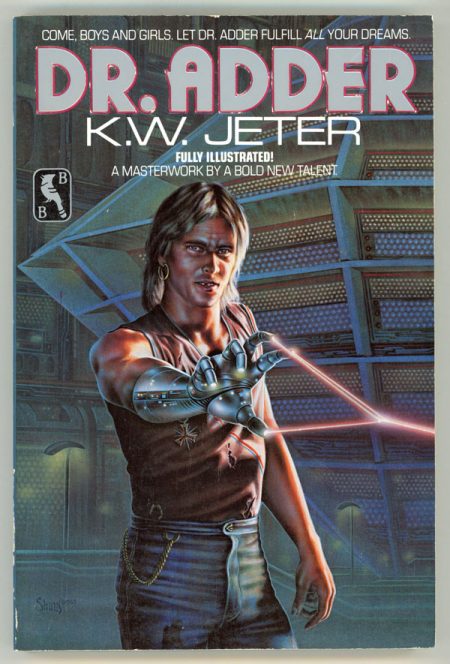
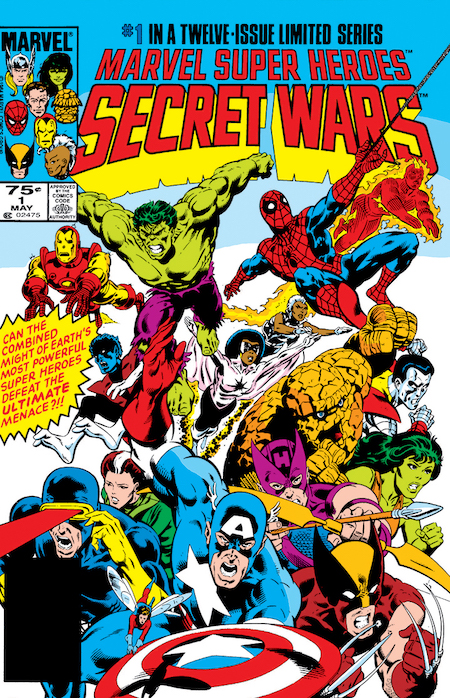
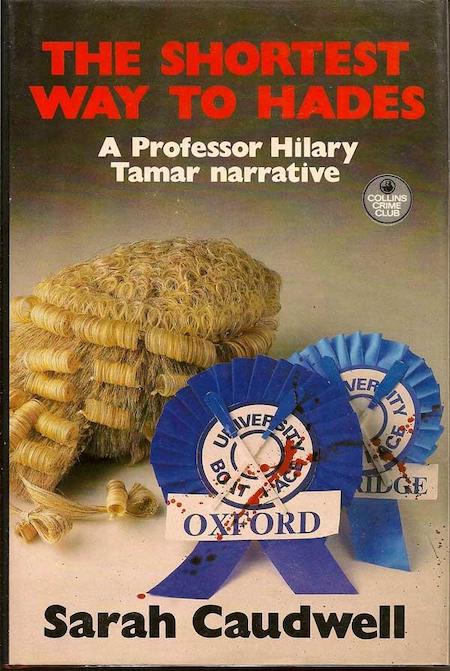
- Margaret Atwood‘s sci-fi adventure The Handmaid’s Tale. In the not-too-distant future, perhaps 20 years from the time of the book’s writing, the United States has suffered a coup transforming an erstwhile liberal democracy into a theocratic dictatorship. Because the American population is shrinking due to a toxic environment and man-made viruses, the ability to have viable babies is at a premium. A puritanical Republic of Gilead, whose capital is Cambridge, Mass., has been established — and the regime’s elite have fertile females assigned to them as Old Testament-style “handmaids.” Drawing on historical atrocities from sumptuary laws, book burnings, the child-stealing of the Argentine generals, and the history of American polygamy, Atwood depicts a dystopia in which social control is perpetuated not only by violence but through everything from clothing to language. “Offred,” the central character, whose journal we are reading, used to be named something else; now she is “of” (belongs to) Fred, a former market researcher who has become one of the architects of the new republic; Fred’s wife, a former televangelist, is presumed barren — and bitterly resents Offred, while yearning for Offred’s child. Offred and some of her fellow handmaids attempt to reclaim their lost individualism and independence; some of this experimentalist novel’s sections describe the lives of handmaids who may or may not be Offred. Interspersed with these snapshots are Offred’s memories of her life from before and during the beginning of the revolution, including her indoctrination at the hands of government “Aunts.” The ending is ambiguous — will Offred escape? Will anyone? Fun facts: Gilead’s Secret Service is headquartered in Harvard’s Widener Library, where Atwood once researched the Salem witchcraft trials. The Handmaid’s Tale won the first Arthur C. Clarke Award; it has been adapted into a 1990 film, a graphic novel, and a much-discussed 2017–present TV show created by Bruce Miller. Atwood has announced a sequel, The Testaments, which appeared in 2019.
- Orson Scott Card’s sci-fi adventure Ender’s Game. I found this book troubling, when I first read it — and that’s before I learned that the author is a right-wing homophobe. But it’s so influential that I must include it in this series! Card’s premise, that children playing videogames and laser tag in an orbiting battle school are training to fight alien invaders, seems designed to appeal to gamers whose grasp on reality is already a tenuous one. And the depiction of the protagonist, Ender Wiggin, as a genius warrior-child who has had the empathy trained out of him by adults looking for a savior is also disturbing: If you enjoy reading about kids who hospitalize and kill other kids, then this is the book for you. There’s also a sexist suggestion that females are inherently too empathetic to become true warriors; however, there are strong female characters. All of this having been said, it is thrilling to watch Ender master the tactics of his school’s antigravity war games — although it feels at times, like you’re watching somebody else play a videogame. There’s a subplot about Ender’s sister and brother, whose online screeds become incredibly influential: Again, one gets the sense that the author is pandering to Internet trolls with delusions of grandeur. The final chapter is, however, exciting — even moving. If you like Starship Troopers and The Forever War, then you’ll like this one. But don’t let your kids read it. Fun facts: Based on a 1977 story published in Analog, Ender’s Game won the Nebula and the Hugo; and its sequel, Speaker for the Dead, did as well. The novel has sold millions of copies, been translated into 25+ languages, and was voted onto both The Modern Library’s “100 Best Novels: The Reader’s List” and the American Library Association’s “100 Best Books for Teens” list. A film adaptation starring Asa Butterfield was released in 2013.
- Bruce Sterling‘s Shaper/Mechanist sci-fi adventure Schismatrix. Humankind — now dwelling in off-world colonies, around the Solar System, far from their ruined home planet — has divided into two warring schisms. Shapers evolve themselves via genetic modification and mental training, Mechanists through cyborgian upgrades; together, these factions make up the Schismatrix: extraterrestrial humanity. Our protagonist, Abelard Lindsay, is an aristocratic Mechanist who has received Shaper training; seeking to preserve Earth-bound human culture, he and his friends lead a rebellion against the Mechanists. Lindsay is exiled to a lunar colony populated by criminals, dissidents, nomads, and “wireheads” who ignore or abandon their physical bodies in favor of virtual reality; this is the most cyberpunk part of the story, which otherwise is a Foundation-like, semi-psychedelic space opera taking place over the course of nearly two centuries. When an assassin comes after Lindsay, sent by a former insurgent comrade, he is rescued by Mechanist pirates. There is much more to the plot: espionage, murder, sabotage, not to mention the arrival of the “Investors,” an alien race who are only interested in making a profit off of humankind. There is also a Robinsonade plot — of the Unalienated Work variety — in which Lindsay works for decades to develop the richest and most powerful state in the solar system. And much more — for better and worse this is a sprawling, Asimovian novel of ideas. Many ideas! Fun facts: Sterling wrote five Shaper/Mechanist stories before this novel; together, they were collected in a 1996 edition entitled Schismatrix Plus.
- Larry McMurtry’s Western adventure Lonesome Dove. A revisionist Western that has been received, by critics and the American public alike, as “the great cowboy novel” — an idealization of the Old West. In the late 1870s, two retired Texas Rangers, Captain Woodrow F. Call and Captain Augustus “Gus” McCrae, decide to abandon the small Texas border town of Lonesome Dove and drive their herd of cattle to the wilds of Montana. Accompanied by Deets, an African American tracker and scout, Pea Eye, a former Ranger, Bolivar, a retired Mexican bandit, and the teenaged Newt, the crusty Call and philosophical Gus head north. They’re trailed by Jake Spoon (another former Ranger, who is wanted for murder) and the prostitute Lorena Wood; Jake, meanwhile, is being trailed by July Johnson, a sheriff from Arkansas, and his stepson; and Johnson is followed by Roscoe Brown, his inept deputy sheriff, and Janey — a girl who takes Roscoe under her wing. It’s a saga! There are sordid, thrilling, horrific encounters with: an Indian bandit named Blue Duck, and his gang; the murderous Suggs brothers; and Blood Indians. Characters drop like flies. Themes of old age, death, unrequited love, and friendship are explored — however, as in all the best sagas, there are no happy endings. The writing is rich, intelligent, entertaining, sorrowful — never sentimental. Fun facts: McMurtry and Peter Bogdanovich (whose 1971 movie The Last Picture Show was based on McMurtry’s novel) developed a screenplay for a Western written for John Wayne, James Stewart, and Henry Fonda. The movie was never made, so McMurtry reworked the script into Lonesome Dove, which won the Pulitzer Prize. It was adapted as a 1989 TV miniseries starring Robert Duvall and Tommy Lee Jones as Gus and Call, as well as Rick Schroder, Danny Glover, Robert Urich, Diane Lane, Chris Cooper, and Anjelica Huston. The sequel is Streets of Laredo (1993); there are also two prequels.
- Gavin Lyall’s political thriller The Crocus List. In his third outing, Major Harry Maxim — a former SAS man skilled in covert reconnaissance, counter-terrorism, and direct action — is assigned to head up a security detail at Westminster Abbey for a royal funeral. When an assassin fires on the visiting US president, killing a low-ranking British government minister instead, Maxim is the only witness as the man falls on a grenade. The gun, the grenade, papers found on the dead man’d person point to the KGB; but, since Britain is about to hold unilateral talks with the Russians over Berlin, why would Moscow order such a hit? Maxim and his friend and mentor at Defence, George Harbinger, investigate. The trail leads to: an ex-WWII British Intelligence officer, now retired in Gloucestershire, who is killed; adilapidated boatyard on the Thames; the British consulate in Washington, DC; a small town in the American midwest; and finally to Berlin. MI5 liaison officer Agnes Algar, whom we met in The Secret Servant (1980) and The Conduct of Major Maxim (1982), proves an invaluable ally in the escapade. Who is attempting to sabotage the prospects of peace in Europe — the KGB? the CIA? Or a clandestine group closer to home? Fun facts: If I haven’t included any of Lyall’s popular aviation thrillers, e.g., The Wrong Side of the Sky (1961), The Most Dangerous Game (1963), and Judas Country (1975), or his international crime thrillers, e.g., Midnight Plus One (1965), Venus With Pistol (1969), on my Best Adventures lists, before now, it’s not because I don’t enjoy them — I do! Alas, they’ve been crowded out by thrillers from the likes of John Le Carré, Len Deighton, Lionel Davidson, Victor Canning, Francis Clifford, Anthony Price, Adam Hall, Joseph Hone, et al. The BBC filmed The Secret Servant in 1984, with Charles Dance as Maxim.
- Greg Bear’s sci-fi adventure Blood Music. Transhumanism — the premise that humankind can/will evolve beyond our current physical and mental limitations — had previously been explored by sci-fi authors such as S. Fowler Wright (The Amphibians), Olaf Stapledon (Odd John), and Arthur C. Clarke (Childhood’s End); Bear was among the first to explore — in the 1983 story that was developed into this novel — the role of “wet” nanotechnology in accelerating our evolution. Ordered to destroy the “noocytes” (simple biological computers) that he’s created from his own lymphocytes, the biotechnologist Vergil Ulam instead injects them into his own bloodstream. Inside his body, the noocytes become self-aware, alter their own genetic material, form a nanoscale civilization… and begin to transform their host. What begins as a kind of horror story along the lines of David Cronenberg’s The Fly (which appeared the following year) rapidly turns into a post-apocalyptic dreamscape, as all life in the North American biosphere is infected and assimilated. There’s an amazing chapter in which a news reporter flying over America reports on the surreal scene; it’s worth noting that Bear began as a sci-fi artist. As if all of this weren’t enough, Bear trots out a pet theory that the nature of reality is affected by its observers… so the sudden introduction of billions of new intelligences throws reality out of whack. Fun facts: Originally published as a novelette in 1983 in Analog Science Fact & Fiction, winning the Nebula and Hugo Awards.
- Marv Wolfman and George Pérez’s Crisis on Infinite Earths (DC Comics, serialized 1985–1986). Since 1963, DC has frequently used the word “Crisis” to describe important crossovers within its Multiverse — that is to say, within the unwieldy agglomeration of “Earths” spawned by writers who, over the course of half a century at that point, had made only cursory attempts to align their story-lines. After two years of research, writer Marv Wolfman and artist George Pérez, whose 1980 New Teen Titans series was a hit, produced a 12-issue limited series with the ambitious goal of unifying DC’s universe. The series — which concerns the destruction of the Multiverse’s many Earths, by the Anti-Monitor, as well as Brainiac’s efforts to conquer the remaining Earths — is infamous for its death count. Wolfman killed off DC icons Kara Zor-El (the original Supergirl), Barry Allen (the Flash of the Silver Age), and many other heroes and villains. There is time travel; there is a portal between the positive and antimatter universes; Superman and Darkseid team up. The series concludes with the creation of a single, unified Earth. DC’s history would henceforth be divided into “Pre-Crisis” and “Post-Crisis.” Fun facts: Followed by the stories Infinite Crisis (2005–2006) and Final Crisis (2008–2009), Crisis on Infinite Earths popularized the idea of a large-scale comic book crossover. The DC Universe has never been the same.
- Philip K. Dick‘s sci-fi adventure Radio Free Albemuth. Unlike Dick’s many stories set in a dystopian future, this one is set in a dystopian present — one in which an opportunistic incompetent, the mouthpiece for a crackpot conspiracy theory and front-man of a right-wing populist movement, becomes president of the United States with the secret support of the KGB and the FBI. (“Why should disparate groups such as the Soviet Union and the U.S. intelligence community back the same man? … They both like figureheads who are corrupt. So they can govern from behind.”) As he wages war against “Aramchek,” an imaginary subversive organization, President Fremont abrogates American civil liberties; this leads to the emergence of a resistance movement… organized through transmissions from a superintelligent, extraterrestrial being or network known as VALIS. (See Dick’s 1981 novel VALIS.) Nicholas Brady, a record store employee, is the recipient of these transmissions, and a kind of subliminal organizer of the resistance; his experiences are a lightly fictionalized version of Dick’s own infamous “2–3–74” gnostic freak-out. As Brady becomes a successful record producer (encoding anti-Fremont messages into folk songs), his best friend, science-fiction writer Philip K. Dick, struggles in vain to stay out of the clutches of the right-wing populists. Brady’s ultimate song-message is written by a woman named Aramchek; it is recorded by a band called, yes, Alexander Hamilton. Fun facts: Drafted in 1976, published posthumously despite not being finalized. The novel was adapted by John Alan Simon in 2010; the film stars Jonathan Scarfe as Brady, Shea Whigham as Dick, and Alanis Morissette as Sylvia Aramchek.
- Ursula K. Le Guin‘s sci-fi adventure Always Coming Home. A difficult but rewarding post-apocalyptic text reminiscent of Engine Summer (1979) and Riddley Walker (1980), Le Guin’s Always Coming Home isn’t exactly a novel; instead, it’s the coming-of-age story of a young Kesh woman, Stone Telling, interleaved with a Silmarillion-esque ethnological account of the cultural facts, legends, poetry and song of the Kesh people. The Kesh are a peaceful community who inhabit an isolated island in what used to be California’s Napa Valley; at some point in the distant past, they seceded from the rest of America in order to cultivate a mindful approach to technology use, ecological systems, and everything else. An Internet-like computer system survives whatever catastrophe befell America; so does solar power, California’s Route 29 (“the old straight road”), steam engines, modern medicine, and flotsam and jetsam like styrofoam. As with the social order depicted in the author’s The Dispossessed (1974), Kesh society is an ambiguous utopia: Stone Telling rebels against the culture’s taboo against scientific and technological progress. Although she recognizes the flaws of the patriarchal, hierarchical, militaristic neighboring society in which she spent some years growing up, she is attracted to some aspects of that culture. Fun facts: Le Guin’s parents were noted anthropologists who studied the native peoples of Alta California; this book — early editions of which included a cassette tape of Kesh music — is a tribute to their life’s work. It is also, according to one character,”a mere dream dreamed in a bad time, an Up Yours to the people who ride snowmobiles, make nuclear weapons, and run prison camps by a middle-aged housewife, a critique of civilization possible only to the civilized, an affirmation pretending to be a rejection, a glass of milk for the soul ulcered by acid rain, a piece of pacifist jeanjacquerie, and a cannibal dance among the savages in the ungodly garden of the farthest West.”
- Cormac McCarthy’s western adventure Blood Meridian or the Evening Redness in the West. McCarthy’s first Western — his previous four novels were in the Southern Gothic genre — is an extraordinary piece of writing. A teenager described only as “the kid,” a runaway from Tennessee, winds up in southeastern Texas in the late 1840s. There, our protagonist encounters Judge Holden — a physically massive, highly educated, completely bald socipath who eventually becomes the novel’s antagonist. (This reader is strongly reminded of Marlo Brando’s turn as bounty hunter Robert E. Lee Clayton, in the now-forgotten 1976 Western movie The Missouri Breaks.) The kid joins a party of Army irregulars on a mission to claim Mexican land; their party is wiped out by Comanche warriors. Arrested in Chihuahua, the kid — along with a cellmate named Toadvine — join a scalp-hunting operation, financed by Mexican authorities and led by a violent owlhoot named Glanton. Glanton’s gang is paid by the scalp, so soon enough they begin killing peaceful agrarian Indians, unprotected Mexican villagers, even American soldiers. Judge Holden, a member of Glanton’s gang, becomes a kind of mythic figure — all-knowing, omnicompetent, evil. There are many more killings, and a flight through the Arizona desert during which the kid and a fellow gang member are pursued relentlessly by the judge. Some years later, the kid — now described as “the man” — encounters the judge one final time. Fun facts: Blood Meridian was initially met with a lukewarm reception by critics; but it has since been described as McCarthy’s masterpiece. Harold Bloom has compared the book favorably with Moby-Dick; and it has appeared on numerous lists of the best 20th-century American novels.
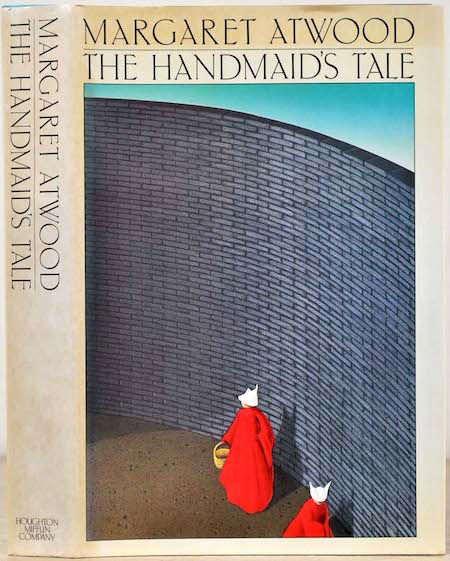
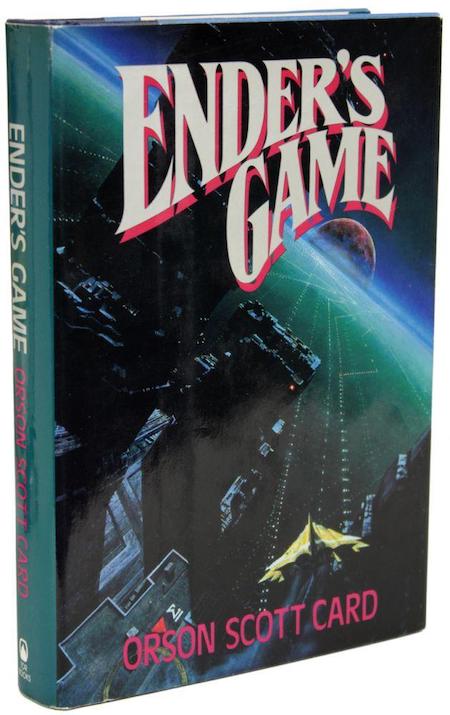
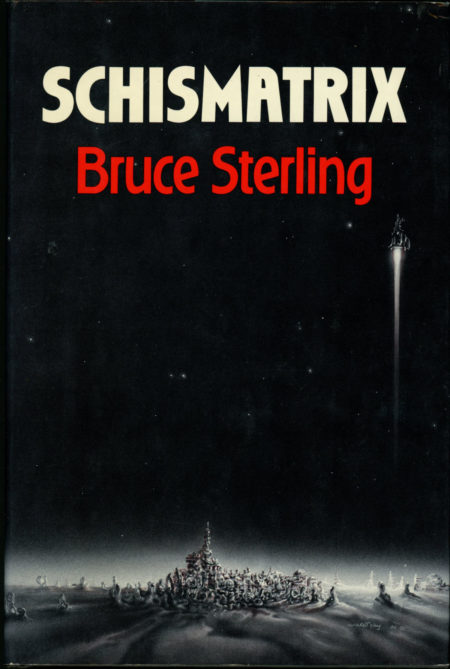
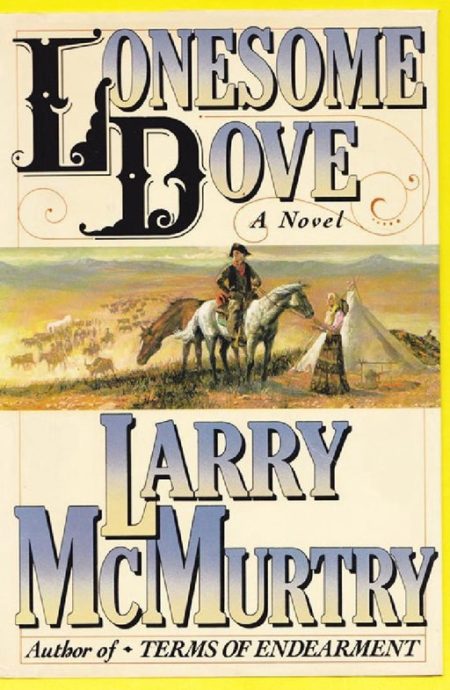
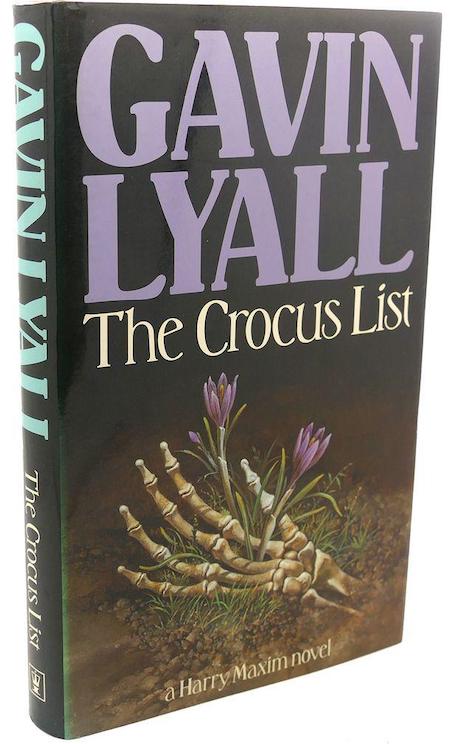

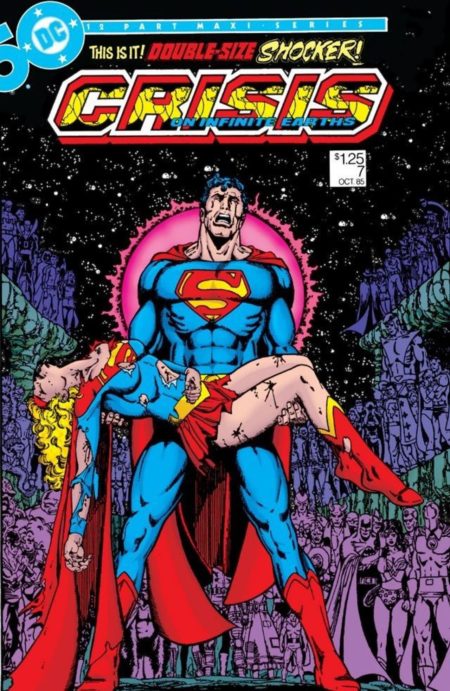
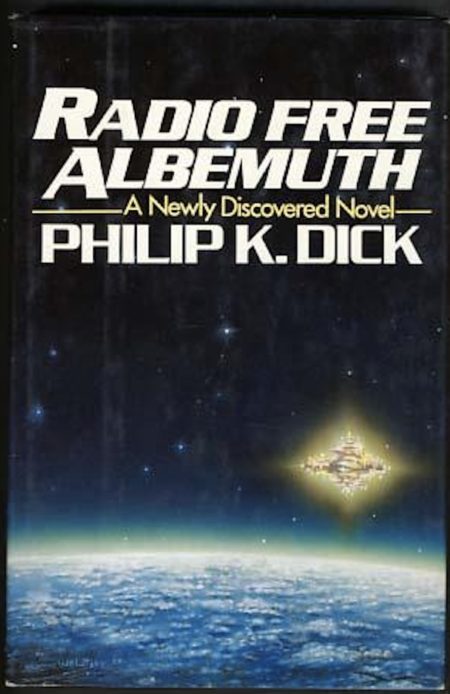
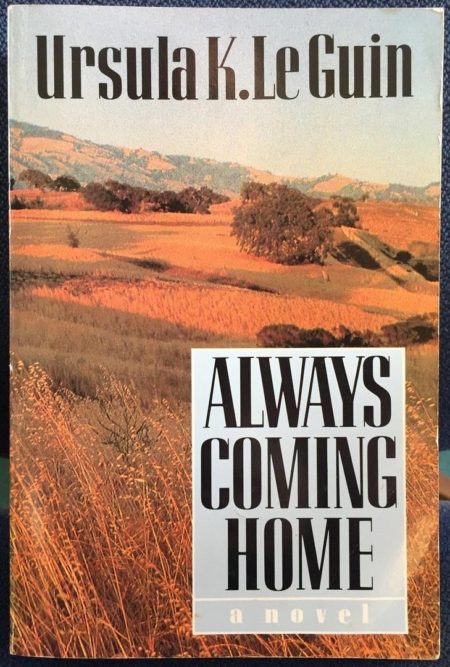

- Chester Brown‘s picaresque graphic novel Ed the Happy Clown (serialized 1986–1989). Chet, a janitor, loses his hand. Ed the Happy Clown, having just been punched in the face by a punk rocker, finds the hand under his pillow; he’s arrested, and his head is shaved. A man who can’t stop defecating causes the jail to burst open, and Ed escapes. Chet’s religious mania leads him to murder his sexy lover, Josie; Ed is beaten up by the punk, again, and abandoned in the woods… near Josie’s body. Ooga-booga-speaking pygmies, who live in the sewer system, retrieve both bodies (for food), at which point they discover that the tip of Ed’s penis has been replaced by the head of Ronald Reagan. As they prepared to sever Ed’s penis, Josie comes back from the dead and rescues him; via a flashback, we learn that she has become a vampire! Back in Dimension X, it turns out that scientists have been pouring fecal matter through a dimensional hole… which, as we know, led to the shitting man’s asshole. But then (their) Reagan falls into the fecal matter, which is how his head ends up on Ed’s penis. Ed and Josie escape from a laboratory and take it on the lam…. A bizarre, hilarious, vile adventure. Fun facts: Ed the Happy Clown began in 1982, as an experiment in spontaneous creation; there was no script.In 1983, Brown began self-publishing the strip in his Yummy Fur minicomic. In 1986–1987, Vortex comics reprinted the seven issues of Yummy Fur, at which point Brown began to think of Ed the Happy Clown as a graphic novel. Drawn & Quarterly published a definitive, annotated edition in 2012.
- Alan Moore and Dave Gibbons’s graphic novel Watchmen (serialized 1986–1987). In an alternate-history version of the present day, nearly all freelance costumed vigilantes have been outlawed; so the superheroes who’d emerged from the 1940s through the 1960s are now dead or retired. However, when Edward Blake, a right-wing, gun-toting Vietnam vet and paramilitary agent, is murdered, one of his former comrades — the ruthless crime-fighter Rorschach, who is the only remaining active masked vigilante — begins an investigation. Against a backdrop of impending nuclear war between the US and the USSR, Rorshach’s efforts bring Nite Owl, Rorschach’s former crime-fighting partner, and Silk Spectre. Though flashbacks, we learn the sometimes sordid history of the Minutemen, a 1940s superhero group whose number included Captain Metropolis, the original Silk Spectre, Hooded Justice, the original Nite Owl, Silhouette, Dollar Bill, Mothman, and The Comedian; and we learn about the origin of Dr. Manhattan, the only truly superhuman character in the story — whose godlike powers, and ability to perceive time in a non-linear fashion, causes him to grow increasingly detached from human affairs. Slowly it becomes evident that the former hero known as Ozymandias (Adrian Veidt), known as “the smartest man on the planet,” is up to something that may change the course of history… but for better or worse? Moore and Gibbons rely heavily on synchronicity, coincidence, and repeated imagery to create an atmosphere of paranoia, nostalgia, and cosmic awe… and it’s also a thrilling mystery. Fun facts: Moore’s original idea used superhero characters that DC had acquired from Charlton Comics. Watchmen, which has been called one of the best and most influential graphic novels of all time, was adapted as an OK 2009 movie and a 2019–2020 TV show that, so far, is pretty great.
- Larry Hancock and Michael Cherkas’s sci-fi mystery comic The Silent Invasion (1986–1988). This 12-issue series, written by Larry Hancock and drawn — in stylized black and white — by Michael Cherkas, begins in 1952. It’s set in the fictional Union City. FBI agent Phil Housley is assigned to investigate the disappearance of private investigator Dick Mallett; dissolute but stubborn journalist Matt Sinkage, meanwhile, has become obsessed with UFOs after a close encounter. Sinkage’s new neighbor, Ivan Kalashnikov, seems suspicious. The comic portrays the era as a time of conspircacy and paranoia; nobody knows who to trust. Also, we’re never sure whether or not Sinkage is onto a real UFO story, or if he’s deluded. When Kalashnikov’s secretary bursts into his apartment, chased by threatening men, Sinkage takes her to his brother’s place in the country — why? By the middle of the series, Sinkage has been accused of being a communist; he’s moved to a small town; and he’s discovered that his girlfriend isn’t what she seemed. Phil Housley, now a private eye himself, shows up unexpectedly. And an old lady is hosting a UFO-centric community/cult on her farm property… what’s going on? Things get really twisted, by the end. Fun facts: Hancock and Cherkas would revisit 1950s America in Suburban Nightmares, a series of shorter stories.
- John le Carré’s espionage adventure A Perfect Spy. Magnus Pym, a debonair career officer of British Intelligence, disappears — along with important intel — after attending his father’s funeral. As his mentor and friend Jack Brotherhood leads the search for him, it becomes apparent that Pym was a double agent — a spy for the Czechoslovak secret service. Through flashbacks, as well as through the missing spy’s memoir, written to explain to his family and friends why he betrayed his country, we learn that Pym was a “perfect spy” because he never had an authentic persona. Under the influence of his father Rick, a charismatic but narcissistic con artist, Magnus learned to adapt to whatever context he found himself in. We meet Pym’s friend, the Czech spy Axel, as well as various double agents and ex-lovers; but this is much more than an espionage story. In fact, it’s a wry, partially autobiographical account of Le Carre’s (David Cornwell’s) own life, spent assisting his con artist father (Ronnie Cornwell) in postwr Britain, spying on Oxford college Communists for the MI5, and so forth. In a milieu in which everyone manipulated everyone else for strategic adventure, how does one develop something resembling a soul? This is the author’s cri de couer. Some readers will complain that this isn’t really a thriller; others, however, have described A Perfect Spy as “devastating.” Fun facts: Ronnie Cornwell has been described as an “epic con man of little education, immense charm, extravagant tastes, but no social values”. An associate of the Kray twins, he masqueraded as a successful entrepreneur, made and lost several fortunes, and was twice imprisoned for fraud. Philip Roth has called A Perfect Spy “the best English novel since the war.”
- Brian Jacques’s Redwall talking-animal adventure Redwall. When Redwall Abbey is surrounded by the army of the evil rat Cluny the Scourge, an inexperienced novice, the mouse Matthias, must embark upon a quest to locate the sword of Martin the Warrior — which, according to legend, is concealed somewhere within the abbey’s walls. Methuselah, Redwall’s grizzled historian, helps Matthias follow clues… until he’s killed by Chickenhound, a thieving fox. It seems that the sword was long ago stolen from its hiding place by the Sparras, a violent tribe of sparrows living on the abbey’s roof; and Asmodeus Poisonteeth, a poisonous adder who dwells in Mossflower Wood, subsequently stole it from them. Accompanied by Log-a-Log, a shrew, and the Sparra queen Warbeak, Matthias courageously heads into Asmodeus’s lair. Meanwhile, Cluny’s horde invades Redwall — all seems lost! Can Matthias, the Mossflower shrews, and the Sparra tribe not only release the captive Redwall population, battle against Cluny’s minions, and also deal with the ferocious rat? Will the abbey ever return to its peaceful focus on delicious meals — including Vegetable Casserole à La Foremole, Brockhall Badger Carrot Cakes, Squirrelmum’s Blackberry and Apple Cake, and Hare’s Haversack Crumble? Fun facts: Jacques would also write Mossflower (1988), Mattimeo (1989), and 20 other Redwall novels. A 1999–2002 animated series — adapting Redwall, Mattimeo, and Martin the Warrior — was a favorite with my children. Elsewhere, I’ve noted the similarity between the first Redwall installment and R. Macherot’s 1966 comic Sibyl-Anne Vs. Ratticus.
- William Gibson‘s Sprawl adventure Count Zero. Several years after the events of Gibson’s debut novel, Neuromancer, Bobby Newmark, a small-time computer hacker who calls himself “Count Zero,” uses an unknown piece of software to infiltrate a closely guarded data defense network. Bobby is rescued from certain death by an angelic being (who turns out to be the young daughter of Christopher Mitchell, a brilliant researcher and bio-hacker); and after a brutal mugging, he is taken in by a group fascinated by what appear to be voodoo gods suddenly proliferating in the Matrix — the synergistic linked computer database that encompasses all information on Earth. Meanwhile, Turner, a corporate mercenary soldier, gets caught up in a violent battle for control — by the multinational corporations Maas Biolabs and Hosaka — over Mitchell’s biochip technology, which is superior to silicon microprocessors. (We’ll discover that Mitchell was led to develop the biochip by the “voodoo gods” of the Matrix; which reminds me of Philip K. Dick’s Radio Free Albemuth.) Turner ends up on the run with Mitchell’s daughter, who carries with her the “biosoft” secret… which not only Maas Biolabs and Hosaka, but an immortality-seeking multibillionaire will stop at nothing to secure. The final showdown, between the various forces at odds in this collaged, meta-textual, action-packed novel, takes place in the Sprawl, a Judge Dredd-like urban environment that extends along much of America’s East coast. Fun facts: Count Zero was serialized by Isaac Asimov’s Science Fiction Magazine in 1986, and published in book form the same year. The third and final installment in the Sprawl triology is Mona Lisa Overdrive (1988).
- Mark Marek’s comic Hercules Amongst the North Americans (serialized 1984–1986; as a book, 1986). Those of us who read National Lampoon and High Times in c. 1985 will remember coming across Marek’s “New Wave” (scratchy, demented) Hercules comic — “the strangest, bravest comic on earth” — there. The gag is simple: Somehow Hercules, son of Zeus and a mortal woman, greatest of the Greek heroes, and a paragon of masculinity, finds himself in the present-day USA. Marek’s anachronistic, episodic comic is pitch-perfect: Each episode is narrated in a highbrow, mythopoetic voice (“A band of evil wood sprites, sent from the underworld, makes off with the radio”) that’s constantly subverted by the lowbrow cretins with whom Hercules must deal (“Yo, bro, check out dis box”). Long before Pixar squeezed Mr. Incredible into an office cubicle, Marek’s Hercules, clad in a toga and lion-skin, was shown valiantly seeking an apartment, attempting to make a living at various jobs, shopping, attending a rock show, and dating. Like the Irish hero Oisín, who (in Yeats’s 1889 epic poem) returns from a 300-year sojourn in the isles of Faerie only to discover his countrymen grown weak and small-minded, Hercules isn’t cut out for our enfeebled world. Ever on the lookout for a challenge worthy of his skills, he seizes upon any opportunity to flex his mighty sinews, and unlimber his sword. If you’ve studied the classics, then you know that this is exactly how Hercules was reputed to have behaved. Along with Gary Panter’s Jimbo, one of my very favorite comics of the Eighties. Fun facts: In addition to making comics (check out 1983’s Mark Marek’s New Wave Comics, if you can find it), Marek illustrated albums for Cyndi Lauper and the Rolling Stones; he was lead animator for MTV2’s Crank Yankers and Adult Swim’s Saul of the Mole Men; he animated and directed episodes of KaBlam!, Teen Titans Go!, and Right Now Kapow; and he was lead animator of the 2010–2013 animated TV version of Mad.
- Patrick O’Brian’s Aubrey-Maturin historical adventure The Reverse of the Medal. The eleventh Aubrey-Maturin installment takes place, not on the high seas but on dry land. Jack Aubrey, having returned from the adventures related in The Far Side of the World (1984), has lost a fortune through bad investments in horses and mining. Back in England, he acts on tips from a man he meets in a tavern, regarding the coming of peace between England and France — in an effort to recoup his losses on the Stock Exchange. What’s worse, he lets his politician father and others in on the action. As a result, he’s hauled into court on charges of manipulating the market; the trial is rigged by his father’s political enemies. Not only does Aubrey face a jail sentence and disgrace, but he may lose his ship, the Surprise, and crew. Stephen Maturin, who’s simultaneously trying to uncover a Bonapartist mole in the Admiralty, and who discovers that he’s recently inherited a fortune, comes to his friend’s rescue. The scene in which seamen show their support for the humiliated Aubrey is a touching one. Fun facts: In respect to the internal chronology of the series, this is the fifth of eleven installments. O’Brian based his account of the stock exchange fraud, and many of the details of Aubrey’s trial, on the Great Stock Exchange Fraud of 1814. The Far Side of the World was adapted in 2003 as Master and Commander: The Far Side of the World; The Reverse of the Medal should have been adapted next.
- Frank Miller‘s graphic novel The Dark Knight Returns (serialized 1986; illustrated by Miller and Klaus Janson, colored by Lynn Varley). Batman first appeared, in 1939, as a grim avenger who punishes evildoers whom the law can’t touch; at the acme of the hardboiled Thirties (1934–1943), Batman was the hardboiled-est. However, once the Comics Code Authority was established, in 1954, Batman comics became whimsical, wacky, family-friendly even. Then DC’s Dick Giordano hired writer-artist Frank Miller — who’d transformed Marvel’s Daredevil and Wolverine into darker, more popular characters — to create The Dark Knight Returns. Inspired by the Clint Eastwood-directed Sudden Impact, in which Dirty Harry, now in his 50s and forced into semi-retirement, returns to work as a quasi-vigilante, the right-wing Miller reimagined Bruce Wayne as the antithesis of “truth, justice, and the American Way” Superman. In a dystopian, yet present-day Gotham City, a retired Wayne returns to action to stop, first, Two-Face, and second, a hyper-violent street gang known as the Mutants. He’s joined by Carrie Kelley, a young woman he’d rescued, who becomes the new Robin. The police issue an arrest warrant for Batman; worse, the Joker frames Batman for murder! When Batman mobilizes the disbanded Mutants as vigilantes on the side of justice, the US government orders Superman to apprehend him. Fun fact: First published as a four-part miniseries, The Dark Knight Returns, has been hailed as one of the greatest works in the comics medium. Its popularity, along with Watchmen, published by DC in 1986–1987, kicked off the era known as the Dark Age of Comic Books.
- Diana Wynne Jones’s Howl’s Moving Castle children’s fantasy adventure Howl’s Moving Castle. Diana Wynne Jones is the missing link between E. Nesbit and J.K. Rowling. That is to say, she’s brilliant at depicting a (British) world where magic intersects with the mundane in unexpected, amusing ways. In this story, a romance — between a spoiled, pretty-boy wizard and a feisty nonagenarian — she also channels Jane Austen. When teenaged Sophie, a timid small-town girl, is transformed by a curse into an elderly crone, it’s liberating: She leaves her dead-end job, not to mention the boring village of Market Chipping, and begins to stick up for herself… for example, by appointing herself housekeeper of the Wizard Howl’s castle. Howl is handsome, talented, lascivious and lazy, though ultimately kind-hearted; the door to his castle is a portal opening into different locations in the magical kingdom of Ingary… as well as into his hometown, in non-magical Wales. Sophie strikes a bargain with Howl’s fire-demon, Calcifer — who promises to return her to her original form, if she can break the demon’s contract with Howl. The contract’s main clause is a Nesbit-esque mystery… something that Sophie, who is meanwhile falling in love with the vain, impossible Howl, must puzzle out on her own. When a witch kidnaps a princeling, Sophie is lured into the witch’s trap… and the action literally heats up. Fun facts: Sequels to this novel include Castle in the Air (1990) and House of Many Ways (2008). In 2004, Hayao Miyazaki loosely adapted Howl’s Moving Castle as a terrific Japanese-language animated movie. One of the most successful Japanese films in history, there are those who prefer it to Wynne Jones’s book.

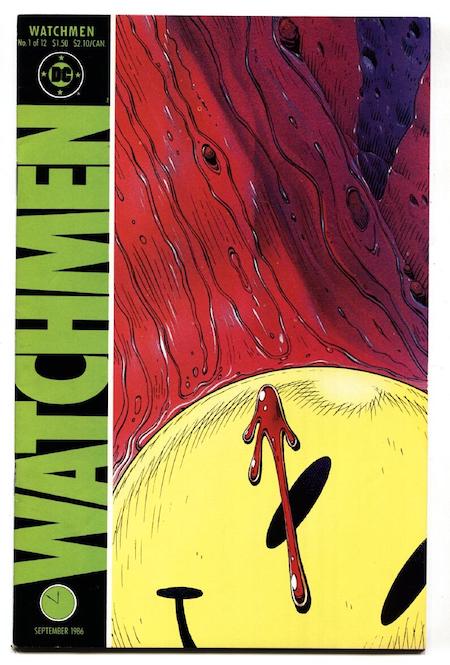
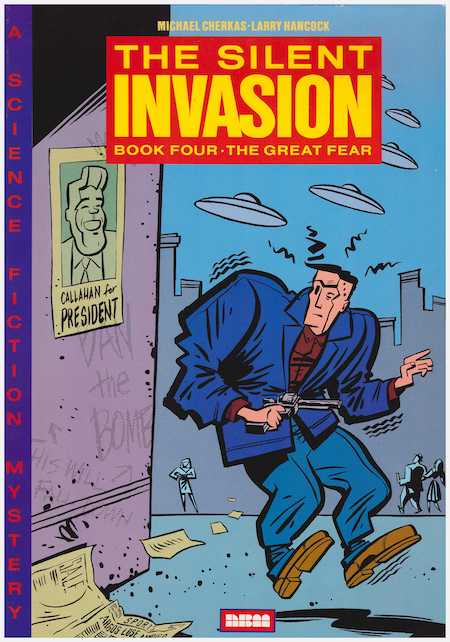
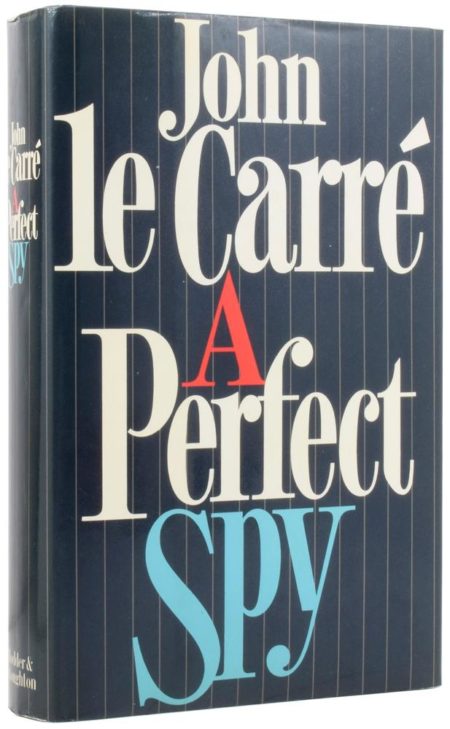
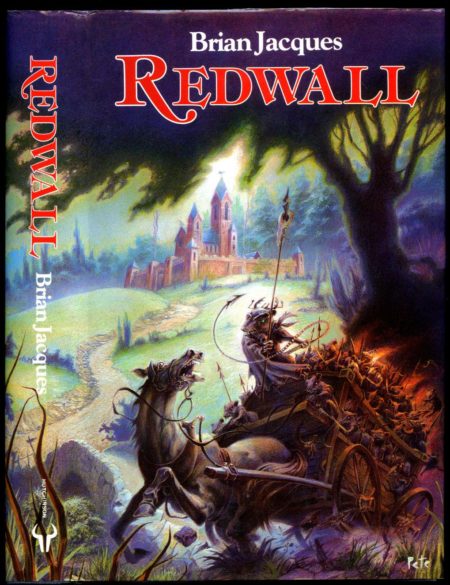
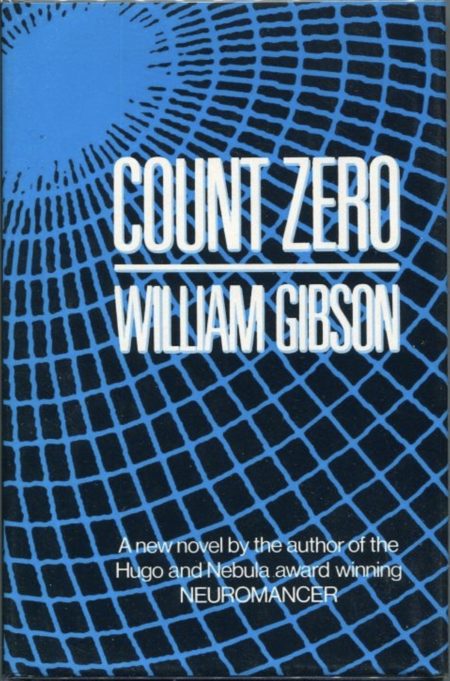
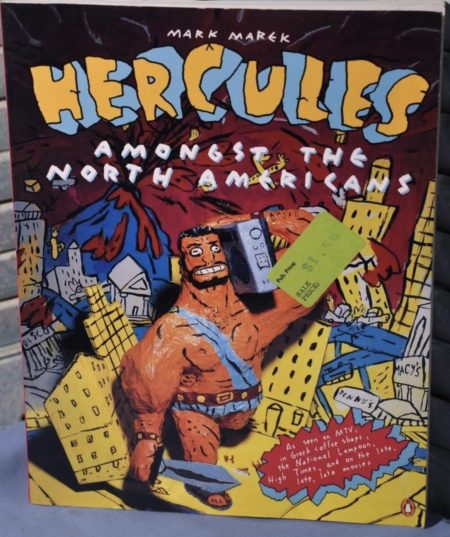
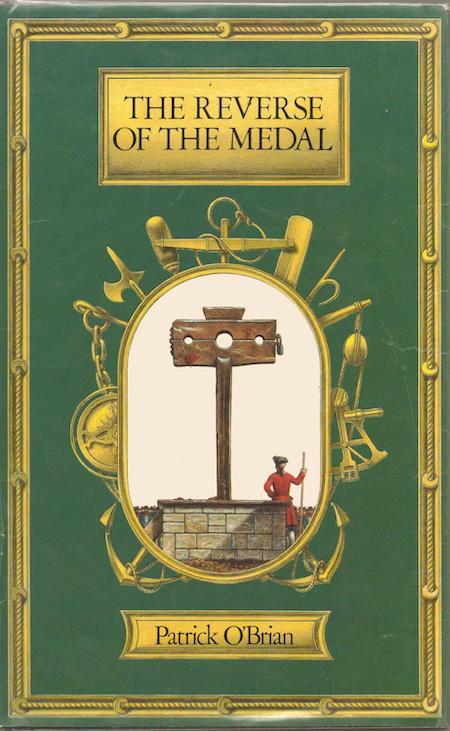
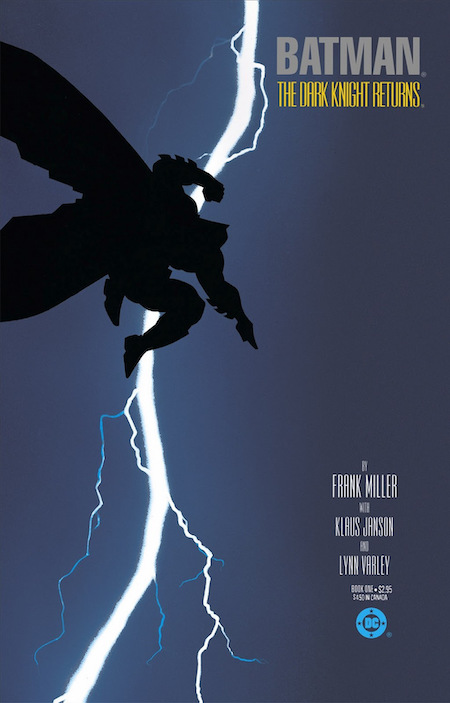
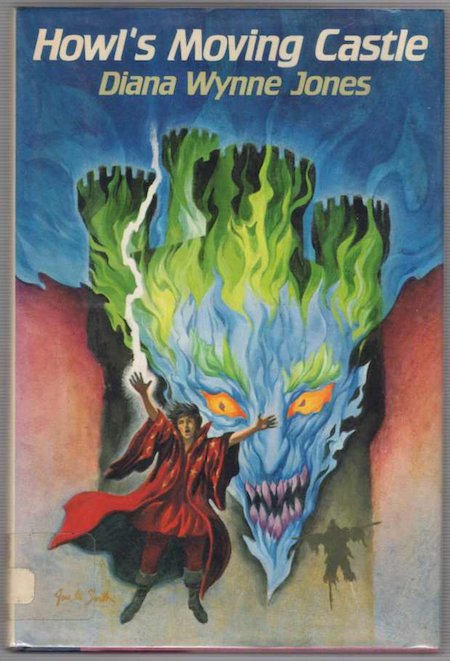
- James Ellroy’s L.A. Quartet crime adventure The Black Dahlia. The (real-world) mutilation and murder of Elizabeth Short, known posthumously as the “Black Dahlia,” in postwar Los Angeles, serves as the backdrop to Ellroy’s seventh crime novel — the first installment in the author’s L.A. Quartet. Fact (we begin with the so-called Zoot Suit Riots of 1943) and fiction are artfully blended in the story of detective Dwight “Bucky” Bleichert, who takes up the all-but-hopeless Black Dahlia case when his obsessed partner, Lee Blanchard, goes missing. The LAPD, we discover, is a corrupt police department in a corrupt city; among the less-than-upright characters we encounter here are Kay, a former gangster’s moll; Madeleine, a promiscuous socialite who resembles Short (and with whom Bleichert becomes entangled); Madeleine’s father Emmett, a sleazy property developer; a weirdo named Georgie; all of whom — or so it seems to Bleichert — are responsible, to some degree for Short’s death. Short, meanwhile, emerges as a complex character, too: Her own promiscuity with servicemen seems to have had something to do with an early trauma. There’s much more going on than what I’ve described here: boxing, prostitution, pornography, Hollywood, racism, payoffs, ambitious prosecutors, murder. It’s an epic, one which earned Ellroy a well-deserved reputation as a serious writer. Fun facts: Ellroy would later reveal that his own mother’s rape and murder led him to become obsessed with the Black Dahlia case — which, in real life, was never solved. Subsequent titles in Ellroy’s L.A. Quartet are: The Big Nowhere (1988), L.A. Confidential (1990), and White Jazz (1992). The Black Dahlia was adapted as a movie in 2006 film by Brian De Palma, starring Scarlett Johansson, Josh Hartnett and Aaron Eckhart. It flopped.
- Iain M. Banks‘s Culture adventure Consider Phlebas. When Banks set about rebooting sci-fi’s Space Opera genre, he invented the Culture — a post-scarcity, galaxy-spanning, left-libertarian society of humanoids, aliens, and godlike “Minds” (artificial intelligences) dwelling primarily in spaceships and other off-planet constructs. Although self-sufficient, the Culture derives its sense of purpose from improving the lives of those in developing societies. Sounds utopian, right? However, Bora Horza Gobuchul, protagonist of the first Culture novel, is an honorable, principled shape-shifter who despises the Culture for its decadence. There’s a war going on between the Idiran Empire (a three-legged, religious, warrior race) and the Culture; Horza — whom we first meet in a prison cell slowly filling with sewage — is an agent of the unpleasant Iridans. His mission? Capture a damaged Culture Mind (which was intended for use on a new class of warship) that’s stranded on an off-limits, post-catastrophic planet. Banks is perhaps having too much fun with the genre, in his first effort: there’s a prison break; Horza joins a crew of pirates and is taken prisoner by a cannibal cult; the Culture destroys one of its own mega-colonies; and there’s a dizzying array of future tech. It’s also perhaps a bit too long-winded, a bit too much telling vs. showing, at times. But it’s a very impressive effort, and Perosteck Balveda is the first of many interestingly conflicted Culture agents that we’ll encounter. Fun fact: Nebula-winning sci-fi author (and HILOBROW friend) Charlie Jane Anders has recounted, of Consider Phlebas, that the book “made me start reading science fiction in general, after a lapse, and made me want to write in the genre myself.” Amazon announced in 2018 that it has acquired the TV rights to Consider Phlebas, which will be adapted by Dennis Kelly.
- Ann Nocenti’s run on Daredevil (1987–1991). Having worked at Marvel for several years as one of comicdom’s first female editors and writers, in 1987 HILOBROW friend Ann Nocenti was tapped to write Daredevil — following Frank Miller’s run on the title, during which he’d transformed the titular superhero into one of Marvel’s most popular characters. Beginning with issue #238, she spent over four years as the series’ regular writer; for much of that time, John Romita Jr. was penciler and Al Williamson inked. Nocenti tackled social issues, pitting Daredevil (and his alter ego, blind lawyer and community activist Matt Murdock) against not merely criminals and supervillains, but racism, sexism, and government corruption. A restless experimentalist, Nocenti set her stories not only in the mean streets of Hell’s Kitchen, but in hallucinatory dreamscapes where nothing was as it seemed. Typhoid Mary, one of Nocenti’s best-known characters, is a lethal assassin, “love-maker and man-hater” who battles Daredevil… while beginning a steamy romance with Murdock. A smart, if deeply troubled figure, she offers sharp commentary on male violence. Romita Jr’s artwork kept up with Nocenti’s complex imagination, giving us explosive action scenes, surreal visions, and realistic street-life scenes. Fun facts: In an interview, Nocenti described the Daredevil franchise as “a rich minefield of contradictions that can be riffed on endlessly.” The 1987–1991 run has been reprinted in the Daredevil Epic Collection, particularly volume 13: A Touch of Typhoid.
- Octavia E. Butler‘s Xenogenesis adventure Dawn (1987). The first installment in Butler’s Xenogenesis trilogy (also known, collectively, as Lilith’s Brood) begins with the reawakening of Lilith Iyapo, a young black woman who was abducted from a post-apocalyptic Earth by an alien race, the Oankali… 250 years ago. The Oankali, who possess the ability to interbreed with any humanoid species, travel the galaxy doing so; they manipulate the genes of their offspring as needed to allow these new species to thrive in particular environments. The nearly extinct humankind has obviously failed, they inform Lilith… so why doesn’t she help them oversee a program of breeding little tentacled Oankali/human babies? Lilith is caught between a rock and a hard place: her fellow human survivors have a tendency to be xenophobic, violent, and misogynistic; while the Oankali are peaceful and reasonable… yet they view humans as an inferior species, without inherent rights. If it sounds to you as though Butler is exploring themes of sexuality, gender, race, and species in a nuanced, complex fashion, you’re right; she’s also recapitulating not only the story of African slaves in America, but the story of their descendants’ struggle, as well. Lilith is a strong character, yet within the context of Oankali imperialism, she lacks agency. Like Butler’s other black female characters, she refuses to capitulate to either/or choices. Fun fact: The sequels to Dawn are Adulthood Rites (1988) and Imago (1989). In 2017, it was announced that Ava DuVernay will adapt Dawn for television, with director Victoria Mahoney and producer Charles D. King. This will be the first on-screen adaptation of Butler’s writing.
- Caroline Graham’s Chief Inspector Barnaby crime adventure The Killings at Badger’s Drift. Did Emily Simpson, elderly resident of the idyllic, postcard-perfect English village Badger’s Drift, die of a heart attack? Miss Bellringer, her eccentric spinster friend, believes Emily was murdered; and an autopsy indicates that hemlock was introduced into her glass of wine. Soon enough, Mrs. Rainbird, mother of the village undertaker, is also murdered. Aided by the boorish, small-minded Sgt. Troy, Detective Chief Inspector Tom Barnaby investigates the killings at Badger’s Drift. Whodunit: The vicar, the gamekeeper, the creepy undertaker, the doctor’s wife, the smart-alec artist? Barnaby acrimony, scandal, and old resentments — perhaps related to a long-ago murder — in the village. The characters are nuanced, the prose is witty. Like some of my favorite English novelists, Graham writes beautifully about the landscape… which makes the grisly murders all the more jarring. There is also a great deal of horticultural detail to be found, for better or worse. A Golden Age-style murder mystery set very much in the modern world; Barnaby’s first outing is a promising start. One of these days, I’ll read some of the others. Fun facts: Adapted as the pilot of Midsomer Murders, a popular British TV series based on Graham’s books. John Nettles portrayed DCI Barnaby.
- Monica Furlong’s Doran fantasy adventure Wise Child. In a remote Scottish village, a nine-year-old girl known as Wise Child — a snarky nickname — is taken in by Juniper, a healer and doran (Celtic sorceress) reputed to be in league with the devil, when her grandmother dies. Spoiled and lazy, proud and impetuous, Wise Child reluctantly learns to read, write, and pay close attention to — and behave in harmony with — the patterns of nature; it’s a female, rural version of Captains Courageous. Juniper, who refuses to attend Mass, also educates her protégée about Scotland’s old, pre-Christian religion. For the first half of the book, we’re not certain if there’s any magic in it, at all. However, when Maeve’s mother, who turns out to be a wicked witch, reappears, Wise Child discovers the extent of her own supernatural powers. Meanwhile, the local priest decides it’s time to get rid of Juniper; and the suspicious, fearful villagers don’t disagree. Will Wise Child listen to her mother, the priest and villagers, to Juniper — or to her own, inner voice, which she’s learning to trust? Some readers complain that Juniper is too good — kind, patient, wise, loving — to be true. Others love the domestic details about, say, the routine of growing, cutting, drying, and straining herbs; Juniper’s most crucial lesson has to do with finding meaning in your labor. What decision will Wise Child make? Fun facts: The Doran trilogy also includes Juniper (1990) and Colman (2004). Furlong also wrote nonfiction about, e.g., Thomas Merton, Thérèse of Lisieux, Alan Watts, the spiritual life of aboriginals, and medieval women mystics.
- Iain Sinclair’s occult adventure White Chapell, Scarlet Tracings. Sinclair’s first novel interweaves a present-day yarn about a gang of cutthroat “bookmen” (who are vying to obtain a long-lost, ultra-obscure copy of A Study in Scarlet, the first Sherlock Holmes adventure) with a reimagining of the Jack the Ripper murders. Working in the vein of Michael Moorcock, Alan Moore, and other London-obsessed psychogeographers, the author — a far-out poet and cutthroat bookman — paints a grotesque, expressionist portrait of one of the world’s most semiotically loaded cities. Nicholas Lane, an ulcerous book dealer, and his crew roust a colleague in the middle of the night — his own accomplices are busy forging authors’ signatures, meanwhile — and ransack his bookshop. Back in the Victorian era, Dr. William Gull, one of the Physicians-in-Ordinary to Queen Victoria, stalks the impoverished Whitechapel district of London in search of human prey. What do the two storylines have in common? A Study in Scarlet may hold some clues to the Whitechapel murders…. A difficult but rewarding read; if the plot is opaque, the prose is extraordinary. Fun facts: Sinclair became well-known for Downriver (1991), a kind of sequel to White Chapell, Scarlet Tracings; Radon Daughters (1994) is the third installment in the series. His psychogeographical essay collection Lights Out for the Territory (1997) has proven even more popular and influential than his fiction. Alan Moore, whose 1989–1998 graphic novel From Hell was in part inspired by Sinclair’s novel, has described White Chapell, Scarlet Tracings as “a manifesto for a future literature that has more blood, more brains, and more mysterious beauty.”
- Douglas Adams’s sci-fi/crime adventure Dirk Gently’s Holistic Detective Agency. Dirk Gently, self-proclaimed Holistic Detective, is convinced that even the most inexplicable mystery can be cracked via deep insight into the fundamental interconnectedness of all things. (He is, that is to say, a semionaut; or an affectionate parody of one; he also bears more than a passing relationship to Wodehouse’s Psmith.) Gently’s theory is put to the test when his old schoolmate, Richard MacDuff, apparently murders his boss, Gordon Way. Way was killed after MacDuff attended an event during which Professor Urban “Reg” Chronotis, performed an inexplicable magic trick… and at the finale of which an Electric Monk and his horse traveled from an alien planet to Chronotis’s bathroom. Might ancient astronauts, time travel, and Coleridge be involved? Is the fate of humankind at stake? Is this, as the author claimed, a “thumping good detective-ghost-horror-who dunnit-time travel-romantic-musical-comedy-epic”? Yes. Fun facts: Dirk Gently would reapper in The Long Dark Tea-Time of the Soul (1988); Adams never completed the third installment in the trilogy. Samuel Barnett (as Gently) and Elijah Wood (as Gently’s sidekick, Todd) starred in the 2016–2017 BBC America TV series, which was set in Seattle (first season) and a fictional Montana town.
- Ruth Thomas’s hunted-man adventure The Runaways Julia and Nathan, eleven-year-old Londoners with problems at home, are bullies at school. Although they dislike one another, when they cut school and discover a large amount of cash, they’re forced to forge an alliance of sorts. Initially, they attempt to use the money to make themselves popular in school, but when their teachers and parents become suspicious, they take it on the lam. Which makes matters worse — life on the run is much harder than they’d imagined. In the course of their struggle to survive in the English countryside (and evade the police), the two learn to fend for themselves, live by their wits; and they forge a unique friendship. “I made my central characters a boy and a girl, one black and one white, not just because I was aware from my own experience of how great was the need for stories with which black children could identify, but also to start them off as different from each other as they could possibly be,” Thomas would explain. “Then they could discover for themselves their common humanity.” Fun facts: Winner of the Guardian Children’s Fiction Award. Ruth Thomas, who also wrote The New Boy (1989), The Secret (1990), Guilty (1993) and Hideaway (1994), was a former teacher who set The Runaways around her northwest London home in Kensal Green, and in the area near her childhood home in Somerset.
- Frank Miller‘s “Year One” Batman story arc (1987, issues 404–407; illustrated by David Mazzucchelli, colored by Richmond Lewis). Expanding on Bob Kane and Bill Finger’s 1939 Batman origin story, Frank Miller — who in 1986 helped kickstart the grim and gritty “Dark Age” of comics with The Dark Knight Returns — here gives us a startup superhero who hasn’t yet got everything figured out. The arc now known as Batman: Year One tells two parallel stories: Bruce Wayne’s efforts to reinvent himself as a caped crusader, and James Gordon’s struggle to maintain his integrity as a police detective and husband in a corrupt Gotham City. Batman underestimates the criminals he pursues; his costume doesn’t work quite right; the cops nearly catch him. Gordon’s partner, Detective Flass, assaults an African-American teen for fun; and Gordon’s own life is at risk, too. Selina Kyle, pre-Catwoman, is a dominatrix; she doesn’t appreciate his meddling in her world, no matter how good his intentions may be. When Batman announces his intention to bring the city’s corrupt politicians and crime bosses (including Carmine “The Roman” Falcone) to justice, the police commissioner orders Gordon to bring him in, dead or alive. Mazzucchelli’s artwork is gritty, shadowy, exciting. Fun facts: “Year One” was nearly adapted as a live-action movie by Joss Whedon, Joel Schumacher, and Darren Aronofsky. In the end, Christopher Nolan adopted aspects of Miller’s story — including characters like Flass and Falcone — with his 2005 Batman Begins reboot. The second half of the fourth season of the Batman-based TV series Gotham is inspired by “Year One”; and there is also a 2011 animated adaptation of the story.
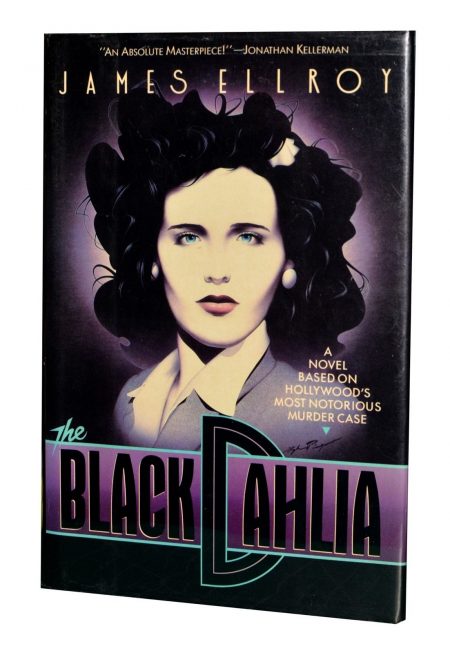
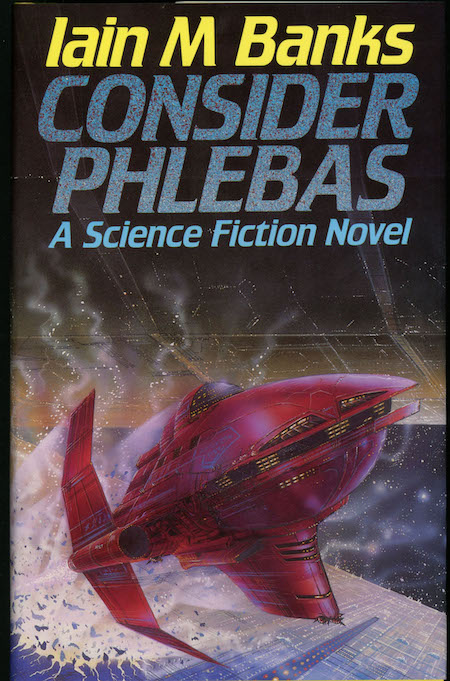
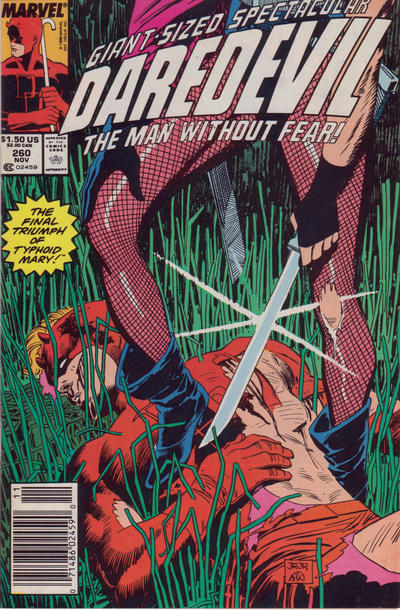


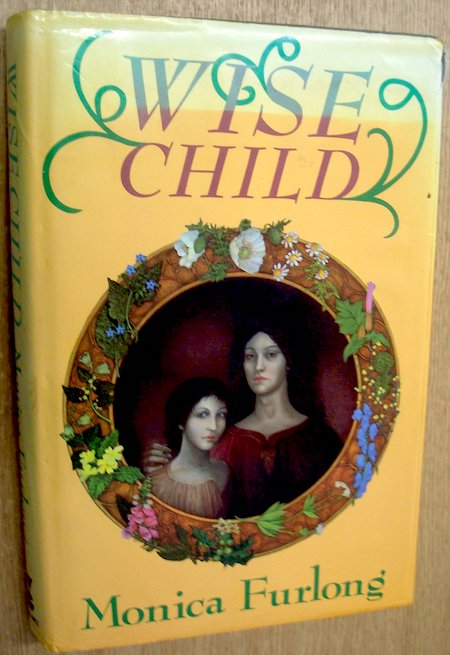
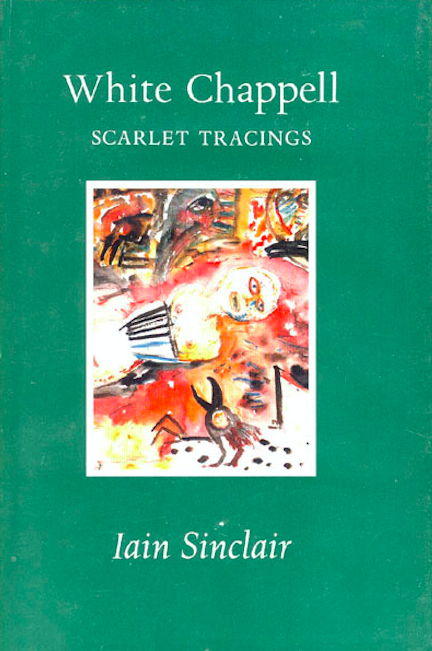
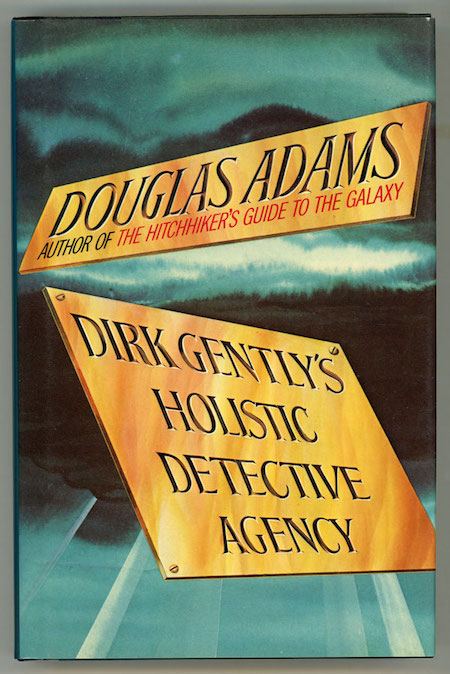
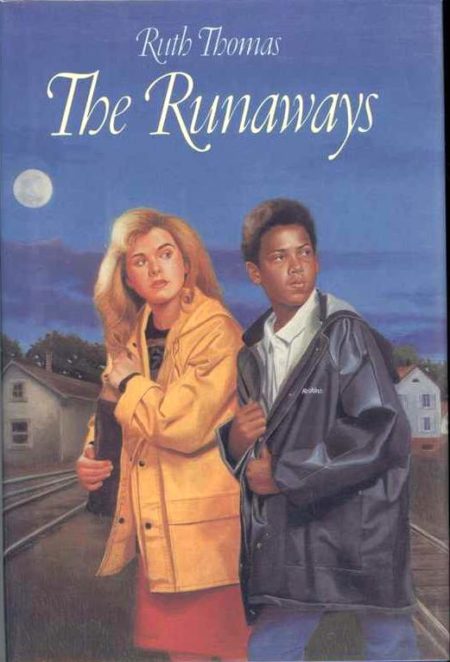
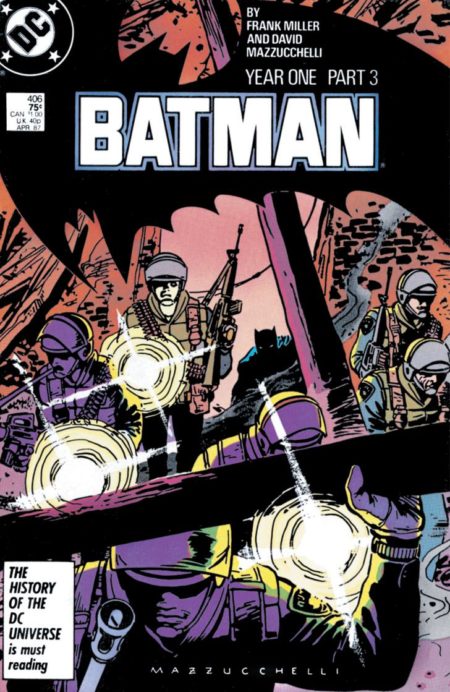
- Iain M. Banks‘s Culture sci-fi adventure The Player of Games. The Glass Bead Game in space? Games, for those lucky enough to belong to the technologically advanced and leisurely Culture, are considered one of humankind’s highest achievements and most worthwhile pursuits; within that context, Jernau Morat Gurgeh is one of the best players of games. Gurgeh, a brilliant, blasé, and not particularly likeable character, is recruited by Special Circumstances — an outfit that does the Culture’s dirty work when it comes to interacting with less-developed galactic civilizations — and tasked with participating in a ritual gaming tournament the outcome of which will determine the players’ social status… and who the Azad Empire’s next emperor will be. (The Azad Empire, BTW, is America: materialistic, exploitative, sexist and racist, pasty and bloated.) Meanwhile, what’s up with the AI drone Mawhrin-Skel, who has been ejected from Special Circumstances? Although we never learn every aspect of “Azad,” an immersive virtual reality game, we get the impression that it’s highly complex and demanding; there are three-dimensional game boards of various shapes and sizes, various numbers of players who can compete or cooperate, and randomness is a factor. Gurgeh discovers that the Azad game is a crucial vehicle for transmitting the Azad Empire’s values to its population… and it’s for this reason that the Culture wants to interfere. As he advances through the tournament, Gurgeh is matched against increasingly powerful Azad politicians, and finally the Emperor himself; will Gurgeh survive the tournament? And even if he does, will the experience infect him with Azadian non-Culture values? Fun facts: The second published Culture novel. A film version was planned by Pathé in the 1990s, but was abandoned. In 2015, Elon Musk named two SpaceX autonomous spaceport drone ships — Just Read the Instructions and Of Course I Still Love You — after AI ships in this book.
- Umberto Eco’s apophenic treasure-hunt adventure Foucault’s Pendulum. A bit punch-drunk after having been required to read too many paranoid manuscripts concerning conspiracy theories about Gnostics, the Freemasons, the Bavarian Illuminati, the Jesuits, the Rosicrucians, the Knights Templar, and Opus Dei, not to mention the Assassins of Alamut, the Ordo Templi Orientis, Cabalists, the Elders of Zion, etc., etc. — Belbo, Diotallevi, and Casaubon cobble together “The Plan,” a satirical, all-encompassing conspiracy theory and intellectual game ultimately concerned with the lost treasure of the Knights Templar. Belbo is a frustrated semiotician and editor at a Milanese vanity press; he and his colleague, Diotallevi, a cabalist, had recruited Casaubon, a student activist and historian of the Knights Templar, to work for them as a freelance researcher. When Belbo is kidnapped by a secret society, it becomes apparent that a real-world secret society will stop at nothing to acquire the (mythical — or is it?) treasure, which may or may not be the Holy Grail, which itself may or may not be a radioactive energy source. The book opens with Casaubon hiding from the society near the titular pendulum in Paris’s Musée des Arts et Métiers. The great pleasure of this text is watching the “Plan” come together via our protagonists’ various absurd, yet somehow utterly convincing, intellectual-literary-computational experiments. Fun facts: Eco founded and developed one of the most important approaches in contemporary semiotics, usually referred to as interpretative semiotics. When asked, after the publication of Dan Brown’s bestselling The Da Vinci Code (2003), whether he’d read it, Eco replied: “Dan Brown is one of the characters in my novel Foucault’s Pendulum, which is about people who start believing in occult stuff…. Dan Brown is one of my creatures.”
- Douglas Adams‘s crime/sci-fi adventure The Long Dark Tea-Time of the Soul. In Dirk Gently’s second outing, London’s one and only holistic detective is consumed with guilt when his client, a record label executive, is found decapitated; he’s assumed that the man’s ravings about a seven-foot-tall, scythe-wielding monster, and a contract signed in blood, and something about potatoes, were mere delusions. The perpetually broke, intermittently psychic private eye investigates the matter — and in doing so uncovers a pseudo-conspiracy involving (and victimizing) the Norse gods, not to mention an exploding Heathrow check-in counter, a nose-biting eagle, a malfunctioning Coca-Cola vending machine, an I Ching calculator, an attractive American woman, and a god who may have bestowed his powers on a Trump-esque lawyer. All of which are, of course, connected. Can Gently bail Odin, Thor, and the rest of the pantheon out of trouble? Will he ever clean out his refrigerator? Will he get paid? From the sublime to the ridiculous, this might as well be Adams’s motto. Fun facts: Adams first used the mock-portentous phrase “the Long Dark Tea-Time of the Soul” in Life, the Universe and Everything to describe the wretched boredom of immortality. Adams began working on a third Dirk Gently story, which he abandoned. He planned to salvage parts of it for a sixth and final installment in the Hitchhiker’s series; however, he never ended up finishing either book. The unfinished MS was published in the 2002 collection The Salmon of Doubt: Hitchhiking the Galaxy One Last Time.
- Peter Carey’s frontier adventure Oscar and Lucinda. Oscar, a Englishman raised in a fundamentalist sect, becomes obsessive about gambling while at Oxford, then sets out to become a missionary in New South Wales (Australia). Lucinda, an ambitious Australian heiress and compulsive gambler, inherits a glassworks in her native land. The two meet on board a ship headed for Australia; it’s the mid-19th century. After Oscar is kicked out of his vicarage for gambling, he moves in with Lucinda… who bets him that he cannot transport the glass factory from Sydney to a remote settlement hundreds of miles away, then build a church entirely of glass there. This is the “adventure” part of Oscar and Lucinda. It’s an exotic travelogue, in an astonishing landscape; and it’s a strange, compassionate, funny, tragic (love?) story about two intersecting lives. Neither of our eccentric protagonists is particularly sympathetic, though from our perspective we can appreciate their instinctive desire to break from social strictures and structures. Oscar makes some bad decisions; things don’t end as happily and neatly as we might like them to. It’s a terrific read! Fun facts: Winner of the Booker Prize. The film adaptation, directed by Gillian Armstrong and starring Ralph Fiennes, Cate Blanchett, and Tom Wilkinson, was released in 1997. “The thing about Oscar And Lucinda is, it’s not a genre book,” says Charlie Jane Anders. “There’s nothing in it that isn’t explainable through realism. There’s nothing in it that’s speculative. But at the same time, it is a book in which science is incredibly important. Also, there is a lot of magic realism happening on the edges.”
- Octavia E. Butler‘s Xenogenesis sci-fi adventure Adulthood Rites. Thirty years after the events of Dawn (1987), the population of Earth is divided into communities of Oankali (a seemingly benign, tentacled alien species that travels through the universe seeking partner species with whom to “trade” their own genes) and their half-human, half-Oankali offspring, and sterilized human resisters. Akin, the half-Oankali son of Lilith Iyapo, ambivalent protagonist of Dawn, is raised by five parents representing three genders — the Oankali “third sex” is known as the ooloi — and two species. Captured by human resisters, because (for the moment) he looks fully human, Akin finds them as horrifying and as compelling as his mother found the Oankali; for the first time, he finds value in his human side, and learns the value of preserving human culture. (Progressive types are often counseled to try to understand Make America Great Again types, and in large part that is the theme of this book.) Later, Akin becomes an emissary traveling back and forth between Oankali/hybrid and resister villages — and advocates for the resisters to have their fertility restored and to be sent to a terraformed Mars to form their own civilization. But will humankind always self-destruct, if left to their own devices? And will the resisters continue to accept Akin’s assistance once he begins to metamorphose into an adult? Fun facts: This is the second installment in Butler’s Xenogenesis trilogy; it is followed by Imago (1989). Nominated for the Locus Award for Best Science Fiction Novel.
- Bruce Sterling‘s sci-fi adventure Islands in the Net. In the near future — the 2020s (!) — economic and political life is dominated by democratized multinational corporations, and everyday life is shaped and misshaped by Net-enabled instantaneous worldwide communications. Yes, this is a cyberpunk novel… but our protagonist, far from being a rebellious young (usually male) hacker, is a married, middle-aged career woman. Laura Webster works for the multinational megaconglomerate Rizome, which stores its data in Granada, Luxemburg, and Singapore; these data havens, however, have been linked to anticapitalist terrorist activity. Laura, her architect husband, and their baby embark on a global tour to restore Rizome’s damaged reputation. When one data haven representative is assassinated (via an armed drone), the story turns into a hunted-man adventure; Laura and her family find themselves hiding out among offshore scientists and artists, the Church of Isis, and agents of rival multinationals. Sticky Thompson, a face-changing terrorist with neurotoxin bacteria in his gut, and Jonathan Gresham, a rogue American journalist involved in a low-tech Tuareg nomad rebellion, are compelling characters. Sterling did a good job predicting wearable tech: Net-connected glasses and watches; and his Net is more like the one we experience today than the semi-hallucinatory, cyberspace version conjured up by William Gibson. Fun facts: “I don’t think any SF prognosis can hold up in sharp detail,” Sterling said in a 2000 interview. “But I would bet that if you took a broad list of near-future 1980s science fiction novels and looked at them in the 2020s, Islands in the Net would seem far less ludicrous than most.” Agreed.
- Alejandro Jodorowsky and Zoran Janjetov’s cyberpunk comic Before the Incal (1988-1995). Once you’ve read The Incal, Jodorowsky and Moebius’s 1980–1988 space opera comic in which bumbling private investigator John DiFool runs afoul of various forces — corrupt government agents, the Technopriests, the alien Bergs, others — seeking a crystal of enormous power, check out this silly but effective prequel. In relatively straightforward installments — Adieu le père (1988), Détective privé de Classe R (1990), Croot! (1991), Anarchopsychotiques (1992), Ouisky, SPV et homéoputes (1993), and Suicide Allée (1995) — set in the Jodoverse’s urban milieu, we encounter a surprisingly with-it, proactive younger version of DiFool. His character develops, from installment to installment, as he investigates the disappearance of missing prostitutes’ children, discovers that big tech, billionaires, the government, the army, and corporate media are secretly in cahoots, and more. True, the female characters here leave much to be desired. But the android “policeborgs,” the body-swapping president, and the disembodied brain which commands a legion of technopriests, are fun. One misses Moebius’s artwork, but Janjetov was selected because his work resembles Moebius’s early, Blueberry-era comics; it’s more gruesome and sexually explicit than Moebius, and that’s OK. Fun facts: Followed by Jodorowsky’ After the Incal (2000, with Jean Giraud), and Final Incal (2008–2014, with José Ladrönn).
- Ben Edlund’s parodic superhero comic The Tick (1988–1993). In 1986, Brockton, Mass., high-school student Ben Edlund created a parodic superhero along the lines of, for example, Megaton Man; or, going back further, Superduperman, as a newsletter mascot for the New England Comics chain of stores. The Tick, a 300-pound, seven-foot-tall doofus whose desire to fight evildoers is admirable but often misguided, is — in his earliest incarnation — an escapee from a mental institution. He’s bugged out. Beginning in 1988, New England Comics would publish a dozen installments, in low-budget black-and-white, of The Tick comic… which was surprisingly complex and awesome, considering the fact that Edlund was still a MassArt student, at that point. The titles tell the tale: e.g., “High Rise Hijinx” (June 1988), “Night of a Million-Zillion Ninja” (December 1988), “Spoon!” (February 1990), “Some Obstacles and a Partial Resolution” (October 1991). The Tick’s sidekick, the hapless Arthur, was introduced in the 4th issue. There have been many superhero parodies, but this one was different: It is impossible not to love the Tick, who is given to issuing garbled, Adam West-esque pronunciamentos about crimefighting. The Tick’s milieu — underappreciated superheroes, hanging out together but not really getting along — is highly entertaining; Edlund would help create a supervillain version for Dr. Horrible’s Sing-Along Blog. A high point for low humor. Fun facts: Edlund walked away from The Tick comic after signing a deal to adapt the characters into a Saturday morning cartoon for Fox. The 1994 series, in which Townsend Coleman voiced the Tick and Mickey Dolenz (!) voiced Arthur in the first season, attracted a legion of new fans for the character. Two live-action TV series have also been based on the character; I enjoyed the short-lived 2001 series starring Patrick Warburton and David Burke, haven’t seen the more recent series from Amazon yet.
- William Gibson‘s Sprawl sci-fi adventure Mona Lisa Overdrive. Eight years after the events of 1986’s Count Zero: Kumiko, the adolescent daughter of a Yakuza boss, hides out in London with “Sally Shears” (Molly Millions, the knife-fingered mercenary from 1984’s Neuromancer), not to mention a biosoft apparatus that presents as a British child (and which can only be seen by Kumiko); Angie Mitchell (from Count Zero) struggles in the aftermath of a breakdown caused by her Simstim fame, and seeks her missing boyfriend; Mona, an amateur teen prostitute pimped by her nasty boyfriend, is caught up in a crime organization’s attempt to abduct her celebrity lookalike; and the comatose body of Bobby Newmark (the titular protagonist of Count Zero) is cared for by Slick Henry, a Mark Pauline-esque junkyard-dwelling giant-robot artist and car thief who suffers from blackouts. Molly and Angie are the motivating forces, here: they’re looking to force a confrontation and settle the turmoil unleashed by the events of the previous books. Bobby, meanwhile, has become addicted to an Aleph, a Borgesian super-capacity cyber-harddrive that is, essentially, a self-contained world. Will Angie regain the ability to access cyberspace directly, via the biosofts implanted in her head by her father? What is Continuity — the AI that is the most important decision-maker for Sense/Net, Angie’s production company — up to? Will Bobby wake up? Fun facts: Steven Poole wrote in The Guardian that “Neuromancer and the two novels which followed, Count Zero and the gorgeously titled Mona Lisa Overdrive, made up a fertile holy trinity, a sort of Chrome Koran (the name of one of Gibson’s future rock bands) of ideas inviting endless reworkings.”
- Alan Moore and Brian Bolland’s Batman adventure Batman: The Killing Joke. After Frank Miller rebooted DC’s iconic Batman character with The Dark Knight Returns (1986) and Batman: Year One (1987), there was just one question left to answer. If Batman hadn’t chosen to find meaning in life — after the random, tragic murder of his parents — by fighting crime, what kind of monster might he have instead become? Alan Moore, who’d fallen out with DC after creating Watchmen (1986–1987), was tempted back the opportunity to explore how Batman and the Joker are, psychologically speaking, “mirror images of each other” (as he’d put it). An unnamed chemical company engineer quits his job to become a stand-up comedian, only to fail miserably. Not only that, his pregnant wife dies in an accident. While participating unwillingly in a burglary at the plant he’s frightened by Batman, and jumps into the chemical waste… which bleaches his skin white and dyes his hair green. Years later, the Joker escapes from Arkham Asylum and attempts to prove that anyone could become a monster… by torturing Commissioner Gordon, and crippling Barbara Gordon. Moore’s Joker story is a nasty piece of work, hard to stomach, but it has proven influential. Fun facts: The Killing Joke was awarded an Eisner Award, for best graphic novel of 1988. Tim Burton and Christopher Nolan have acknowledged the graphic novel’s influence on their respective Batman movie adaptations; Todd Phillips has stated that the Joker’s descent into madness after an unsuccessful career as a stand-up comedian in The Killing Joke helped inspire his 2019 film Joker.
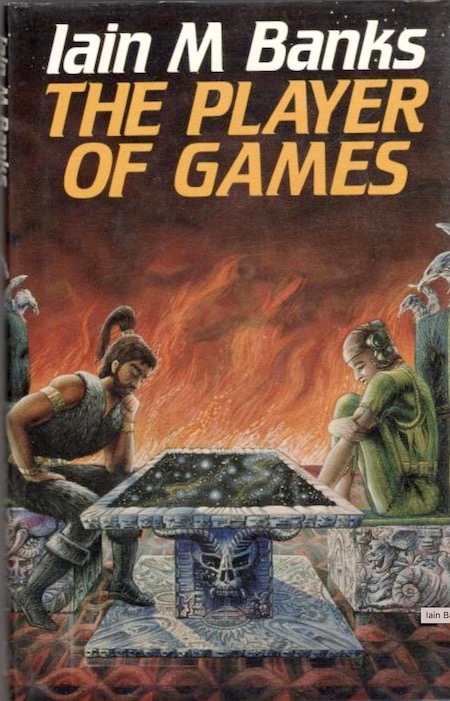

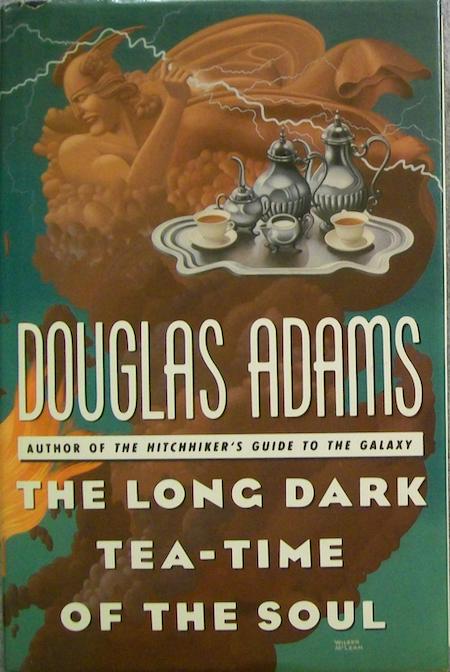
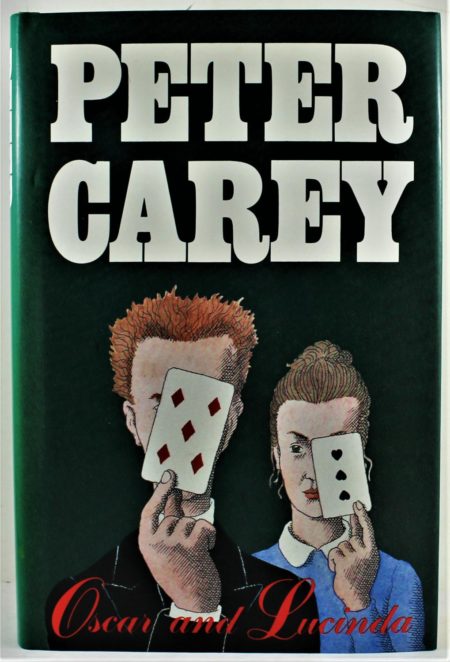
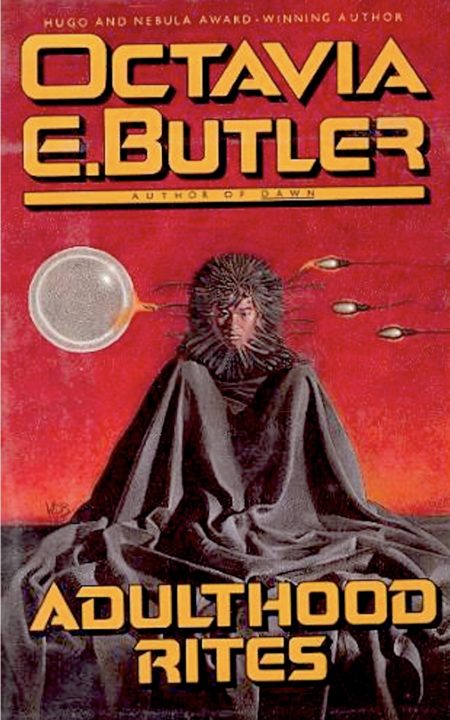
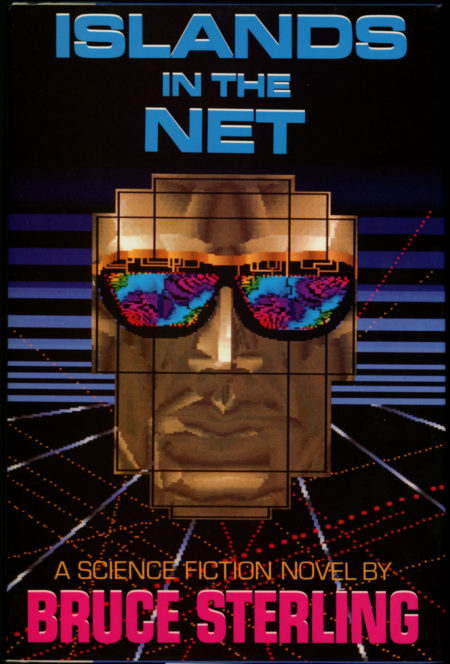
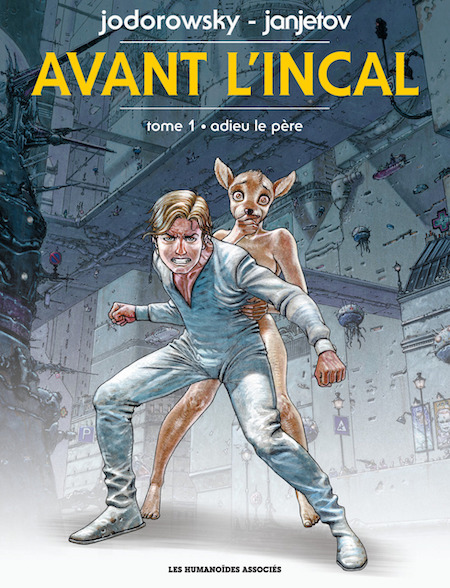
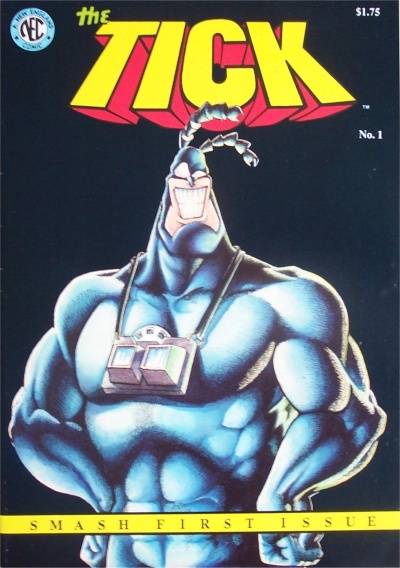

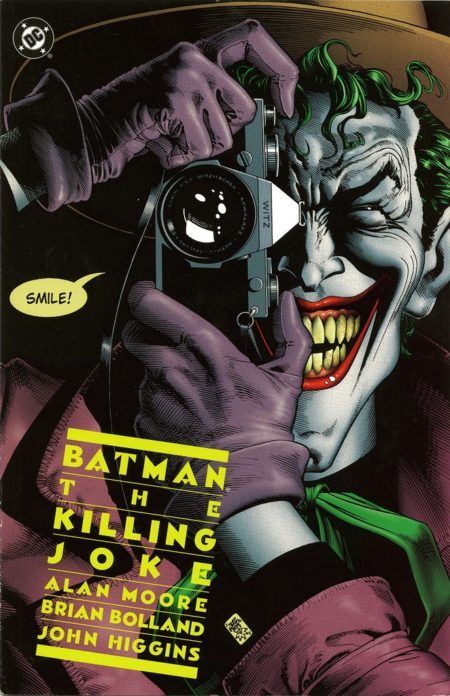
- Philip Kerr’s Berlin Noir historical crime adventure March Violets. Three years after Germany’s Reichstag Fire Decree and Enabling Act abolished most civil liberties and transformed Hitler’s government into a legal dictatorship, ex-Berlin cop and Army vet turned private eye Bernie Gunther is hired by a steel magnate to find a diamond necklace stolen from his murdered daughter. The assignment forces the cynical Gunther to confront corruption among the Third Reich’s civil servants, the Nazis’ everyday violence and anti-Semitism, and the opportunism of the Nazi “March violets” more interested in profit than ideology. As the city’s most offensive aspects are temporarily sanitized for spectators arriving for the ’36 Olympic Games, our neo-noir protagonist traverses seedy dives and opulent mansions, trying without much success to stay out of political hot water. Protected only by his native wit and WWI medal, Gunther runs afoul of police, Gestapo, gangsters, and government officials. There’s an aristocrat collecting blackmail material on important personalities for Hermann Göring, a safecracker, a corrupt anti-corruption official, and — in the best noir tradition — a shocking family secret, and a sexy assistant. When Gunther is sent to the Dachau concentration camp, will he assist a Gestapo investigation in order to save his own neck? Fun facts: Shout-out to HILOBROW friend Tony Leone, who recommended these books to me. The second installment in the trilogy is The Pale Criminal (1990); the third is A German Requiem (1991).
- Alan Moore and Eddie Campbell’s historical-crime graphic novel From Hell (1989–1996). A comic that is difficult to read — not only because of the graphic violence, but literally, because Eddie Campbell’s black-and-white art is crabbed, crowded, and scratchy, like the mind of a maniac. Also, Moore’s nearly 600-page meditation on the identity and motives of “Jack the Ripper,” the still-unidentified serial killer active in the impoverished areas in and around London’s Whitechapel district in 1888, is complex. Inspired by Douglas Adams’s notion of solving crimes “holistically,” Moore sets about “solving” Victorian-era British society — in whose injustice, racism, and casual violence he locates the origin of every variety of 20th-century horror. From Hell takes as its premise the — unproven, evocative, self-parodying — theory that the Whitechapel murders were the work of royal physician Sir William Gull, who was conspiring with the British royal family to conceal the birth of an illegitimate child, to Annie Crook, a shop girl, fathered by Prince Albert Victor. When a group of prostitutes — Annie’s friends — threaten to reveal the prince’s secret, Gull begins a campaign of violence against them. He justifies the murders by claiming they are a Masonic warning to an Illuminati threat to the throne; the story’s psychogeography, which reveals the hidden mystic significance of London landmarks, owes a debt to Iain Sinclair’s White Chapell, Scarlet Tracings, though Sinclair was also influenced by Moore. Like other brilliant, difficult comics of the era, readers may yearn for explanatory footnotes; not to worry — the collected edition features over 40 pages of additional info. Fun facts: Loosely adapted as a not-very-good 2001 film, made by the Hughes brothers, and starring Johnny Depp, Heather Graham, and Ian Holm. The series was published in ten volumes between 1991 and 1996. The series and an appendix were collected in a trade paperback and published by Eddie Campbell Comics in 1999.
- Dan Simmons’s Hyperion Cantos sci-fi adventure Hyperion. Chaucer’s Canterbury Tales is a collection of stories — told by a disparate group of pilgrims — within a frame story, the overall effect of which is to paint a sardonic portrait of 14th-century English society. This 29th-century Chaucerian space opera gives us a priest, a soldier, a poet, a scholar, and other pilgrims chosen by the Shrike Church and the Hegemony of Man (which rules some 200 human-inhabited planets) to make a request of the so-called Shrike, a deadly half-mechanical, half-organic creature that can control the flow of time. As they progress in their journey, away from their home planets (simulacra of ancient Earth societies and cultures) towards the remote, titular planet Hyperion, where the mysterious Shrike dwells, we learn — via the pilgrims’ stories — that the Ousters, a faction of humanity mutated by centuries of living in deep space, plans to invade Hyperion… and that Hyperion’s enormous, provocatively empty Time Tombs are about to finally reveal their secrets. Earth has reportedly been destroyed; the Hegemony’s technology (strikingly, readily available teleportation devices) comes from a secretive civilization of self-aware AIs, who inhabit a cyberspace-esque realm that is divided into warring factions. There’s a legend suggesting that all but one of a group of pilgrims to the Shrike will be horribly killed, and the other granted one wish; why has this group of individuals been selected for this mission? It’s a metatextual novel: The astute reader will pick up allusions to everything from Shakespeare to The Long Goodbye and The Wizard of Oz, and of course to other sci-fi novels. And it’s a literary work, too: Each novella mashes up genres, from the detective story and horror to action-packed combat, even romance. Phew! Fun facts: Winner of the Hugo and Locus Awards. The next book in the series was The Fall of Hyperion, published in 1990.
- Grant Morrison and Richard Case’s Doom Patrol comic (1989–1993). “Le Poète est semblable au prince des nuées/Qui hante la tempête et se rit de l’archer,” laments Baudelaire, in “L’Albatros.” “Exilé sur le sol au milieu des huées,/Ses ailes de géant l’empêchent de marcher.” The Doom Patrol, as the superhero team first appeared in DC’s My Greatest Adventure #80 (June 1963), could relate. The Chief, a wealthy, paraplegic, brilliant scientist-inventor; Robotman, a former daredevil and race-car driver turned cyborg; Elasti-Girl, a former athlete and actress who can expand or shrink her body at will; and Negative Man, a former test pilot who can release a negatively charged energy being from his body — they perceive their so-called gifts as a curse, dooming them to a life of alienation. Scottish comic book writer Grant Morrison, part of the far-out British Invasion of American comics that included as Alan Moore and Neil Gaiman, took over the relaunched Doom Patrol series in 1989; DC stopped submitting the title to the CCA for approval around that time. The resulting run — from issues 19 through 63 — was wild. The Chief (whom, we will later discover, may have had something nefarious to do with the origin stories of his comrades) leads Robotman (a brain, remember, trapped in a body without nerves), Rebis (a queer, transgender, transracial entity combining Negative Man, his energy spirit, and Eleanor Poole, a black doctor), Crazy Jane (a victim of sexual abuse; each of her 64 alternate personalities has a different super-power), and a monkey-ish psychic named Dorothy against the Scissormen — metatextual, Struwwelpeter-like inquisitors who worship a god that exists at the crossroads where realities meet, and whose cut-up dialogue reads like Dada poetry. Ultimately, the Doom Patrol’s weirdness proves to be the key to its effectiveness: They often team up with so-called villains in order to combat the neo-fascist, Foucauldian forces that police sexual identity and gender norms. Richard Case’s trippy artwork is simultaneously engaging and nightmare-inducing. Fun facts: The last line of Morrison’s run quotes the Smiths’ “Asleep”: “There is another world/There is a better world/Well, there must be….” It’s a beautiful statement of revolutionary optimism for an era that had largely abandoned utopian idealism.
- John le Carré’s espionage adventure The Russia House. Written during Perestroika — the political movement for reformation within Mikhail Gorbachev’s Communist Party, which would lead to the revolutions of 1989 and the dissolution of the Soviet Union — The Russia House would have us understand that the Cold War, by that point, was sustained by intelligence agencies, the military, and the military–industrial complex, none of whom could afford to admit that the Soviet Union was no longer a threat. Our protagonist, “Barley” Blair, a British publisher, musician, and bon vivant, is contacted by a beautiful Russian woman, Katya; her friend, Yakov, wishes Barley to publish a manuscript detailing Soviet nuclear capabilities and atomic secrets. When the MS ends up at the Russian House — that is, the MI6 section devoted to spying on the Soviet Union — Barley is manipulated into acting as a go-between. The Russia House wants to know more about the source of this intel; Barley, however, falls for the widowed Katya and her kids, and wants to smuggle them out. The CIA and MI6 help Barley set up a meeting with Yakov’s KGB captors/handlers — nobody can be sure — but Barley and Katya have other plans. “The old isms were dead, the contest between Communism and capitalism had ended in a wet whimper. Its rhetoric had fled underground into the secret chambers of the grey men, who were still dancing away long after the music had ended.” Fun facts: A 1990 adaptation, directed by Fred Schepisi, starred Sean Connery and Michelle Pfeiffer. Not the greatest movie, but notable for its score — Russian music and jazz — by Jerry Goldsmith, and because it was one of the first western films to be shot on location in the Soviet Union.
- Katherine Dunn’s sci-fi/horror adventure Geek Love. The Binewskis are in the traveling circus business; to that end, father and mother have used amphetamines, arsenic, and radioisotopes on their unborn children… purposely breeding a one-family freak show. Arturo, who has flippers for limbs, is known as Aquaboy; Iphigenia and Electra are conjoined twins; and Olympia, the book’s narrator, is an albino hunchback. Only Chick, the youngest, appears unremarkable. There are two story lines, here. One, a picaresque set in the past, follows the family from town to town as the kids get older. Arty, a megalomaniac, founds a cult (“Arturism”) devoted to the pursuit of “Peace, Isolation, Purity” by means of limb-amputation; his one-man freak show threatens the Binewskis’ livelihood, which leads to strife. The other story, set in the present, is an Imitation of Life-esque melodrama about Oly’s daughter, Miranda, who was abandoned as an infant. Miranda has fallen into the clutches of a deranged wealthy woman who wants the teenager to undergo cosmetic surgery, to make her look “normal.” And then there’s the saga of Chick, whose telekinetic power is terrifying. Fun facts: This book was a big deal, among some of us, when it appeared; it predicted the carnivalesque atmosphere of 1990s-era youth culture. And Dunn, a terrific writer unlike any other, came out of nowhere. Even the cover art — designed by Chip Kidd — was ahead of its time, eschewing “good” typography and illustration for… something weird, “lame.” Tim Burton aquired the film rights, at one point; the Wachowskis — cool, confident freaks who could have been Binewskis — were also interested.
- Masamune Shirow’s seinen manga sci-fi series 攻殻機動隊 (Mobile Armored Riot Police; in the US: Ghost in the Shell (1989–1990). Public Security Section 9 is a counter-cybercrime organization, in mid-21st-century New Port City, Japan — led by Major Motoko Kusanagi — a synthetic “full-body prosthesis” augmented-cybernetic human. Thanks to her wetware (a computer user interface implant located in her cranium’s suboccipital nerve region), Kusanagi’s mind can seamlessly interact with mobile devices, machines, and networks; although her brain is a century old, her prosthetic body is one of the most advanced models on the market. So she’s not only the best hacker on her team, which is composed of former police and military types, she’s also the toughest; also, because the comic was published by the laddish Japanese manga anthology Weekly Young Magazine, Kusanagi is a slapstick, sexy character (think Tank Girl) fascinated by “human” vices. Villains include the Puppeteer, who has mastered the art of “ghost hacking” people’s cyberbrains and forcing them to commit crimes by proxy (and who turns out to be something much worse than a mere crook); as well as neo-noir corrupt officials and sinister corporate types. Shirow’s dynamic black and white drawings are simultaneously silly and hardboiled, detailed and gestural; the comic is too grown-up for kids, too child-like for grownups — perfect! Fun facts: Manga artist-author Masanori Ota’s pen name is derived from the legendary sword-smith Masamune. Ghost in the Shell was released in tankōbon (stand-alone) form in 1991; in 1995, Dark Horse serialized the series in English. The 2017 movie adaptation was criticized because it cast Scarlett Johansson in the lead role; also, Evan Narcisse of io9 lamented that the movie version of Kusanagi asks the wrong sort of existential questions about herself.
- Neil Gaiman’s occult fantasy comic The Sandman (1989–1996). In 1988, Neil Gaiman — a British comics writer who’d recently begun working for DC — proposed to reboot Joe Simon and Jack Kirby’s 1974–1976 series The Sandman. Instead, DC editor Karen Berger challenged him to “keep the name, but the rest is up to you.” Working within these Oulipian restraints, Gaimain wrote a 75-issue series that became a cult success, particularly among a younger, mostly female readership who (up to that point, anyway) didn’t read comics. Inspired in part by James Branch Cabell’s 1919 meta-mythical adventure Jurgen, Gaiman recounted the tale of Dream/Morpheus/Sandman, the haughty, cruel, and ancient anthropomorphic personification of dreams… who escapes after 70 years in captivity and sets about restoring his kingdom, the Dreamworld. As he searches for his lost objects of power, Morpheus genre-hops — from myth to pulp fiction, and everywhere in-between. Also, Gaiman inserts pop culture and literary references and jokes into nearly every panel. It’s a dazzling display of high-lowbrow literary fandom… one leaving even the most well-read fan wishing for extensive, Chester Brown-esque footnotes… which, thankfully, are now available via annotated editions. Sam Kieth, Mike Dringenberg, Jill Thompson, and others contributed appropriately eerie and amusing art, with lettering by Todd Klein and covers by Dave McKean. Fun facts: Comics historian Les Daniels has called the series “a mixture of fantasy, horror, and ironic humor such as comic books had never seen before.” Along with Maus, Watchmen and The Dark Knight Returns, The Sandman was one of the first graphic novels ever to be on the New York Times Best Seller list. A Netflix adaptation is underway.
- Octavia E. Butler‘s Xenogenesis sci-fi adventure Imago. In the final installment in Butler’s Xenogenesis trilogy, the future of not only Earth’s surviving humans but their alien captors/saviors, the tentacled Oankali, is at stake; can Jodahs, a half-human, half-Oankali ooloi (a genderless figure, who makes satisfying sexual relations between men and women — whether Oankali, modified human, or hybrid — possible) mature successfully into its adult form? Concerned that our protagonist will inadvertently contaminate them before it learns to control its genetic manipulation abilities, the Oankali send Jodahs to live in the woods. Here, we finally discover that the seemingly unemotional, almost clinical alien invaders need and long for (emotionally, sexually) relationships with humans. In fact, Oankali and modified humans alike can’t stand to touch members of the opposite sex without the mediation of an ooloi; and this mediation becomes addictive, for Jodahs, who experiences its exile as torment. Jodahs is also tortured by its inability to fit into any group — so when it encounters two human siblings, Jesusa and Tomas, it forms a new family unit. The book is erotic without being explicit, and despite one’s horror/revulsion at this post/evolved-human state of affairs, we care enough about the characters and their struggles to root for everything to work out. Will Earth’s humans, in the end, be as accepting of the Oankali as we are? Fun facts: As in the first two Xenogenesis books (1987’s Dawn and 1988’s Adulthood Rites), Butler asks us to grapple with unsettling issues of consent, coercion, and enslavement. Some readers find this book too philosophical; others think it’s the best of the trilogy.
- Martin Amis‘s apophenic crime adventure London Fields. When Samson Young, an uncreative and dying New York writer, moves into the posh London apartment of a famous British author (whose initials happen to be the same as Martin Amis’s), he discovers the diaries of Nicola Six. Nicola, a femme fatale who hopes to die before she gets old, claims she’s manipulating two married men — Keith Talent, a Cockney hooligan obsessed with pornography and darts; and Guy Clinch, a yuppie who can’t resist a sob story — into murdering her. She’s set the date; the countdown has begun. The year is 1999, which sort of makes this a sci-fi tale — and indeed, in the background of this brilliant, tedious, hilarious, exasperating story lurks some kind of atomic disaster which threatens to destabilize the planet. But our focus, here, is very local. Nicola, Keith, and Guy inhabit the same gentrifying neighborhood; Samson ends up coming into contact with each of them… and manipulating their story, in order to finally write a novel. Or is he being manipulated? Long, ambitious, misanthropic, and hard to put down. Perhaps the most remarkable character is a destructive toddler. PS: This is the only Amis novel to include every one of the author’s tropes, according to a 2019 Guardian essay: “Apocalypse, authorial intrusion, [a character named] Keith, sex, time, twins, yobs (jackpot!)” Fun facts: Adapted as a 2018 movie directed by Mathew Cullen, and starring Billy Bob Thornton, Amber Heard, Jim Sturgess, and Theo James. “Novelistic, rich and awfully silly,” opined The Guardian, “[Cullen’s] London Fields – like Ben Wheatley’s take on High Rise – is a long-awaited adaptation of a popular and gloomily prophetic book, that seems unnecessary.”
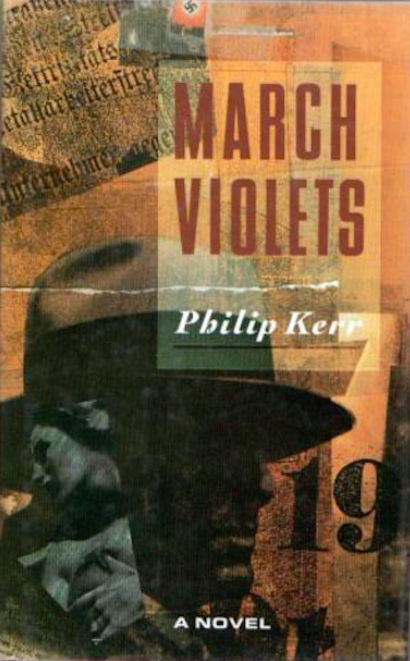
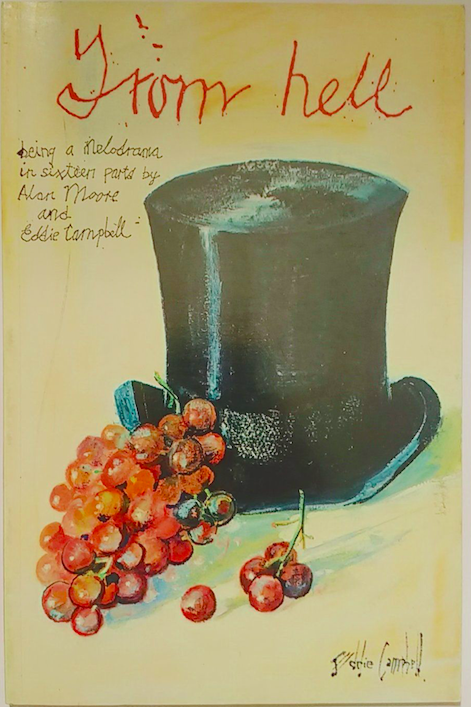
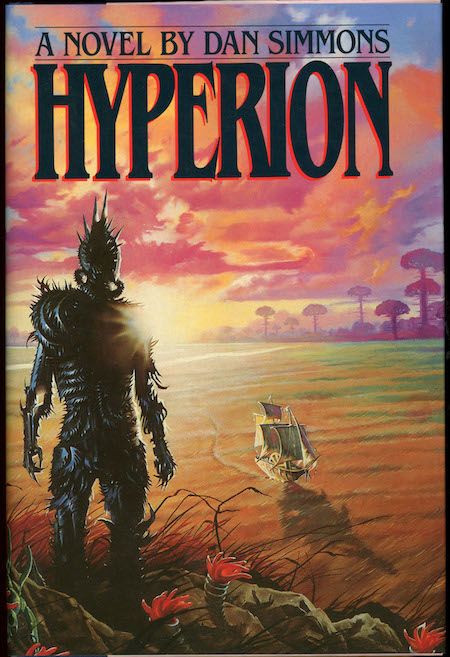
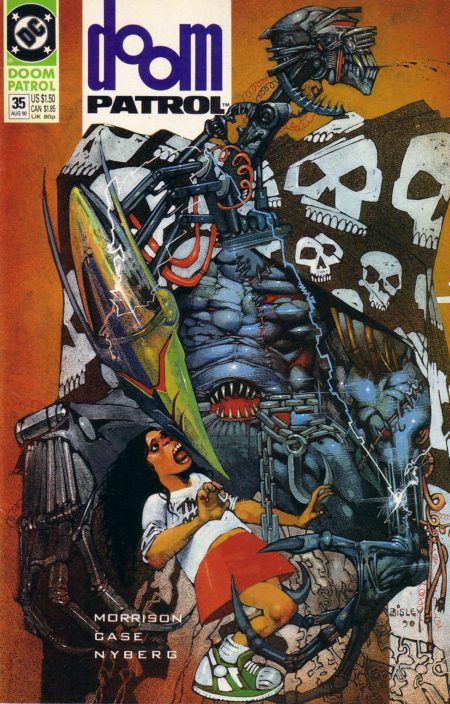
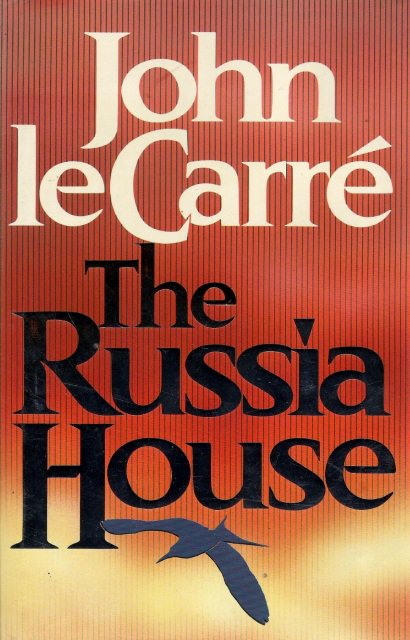
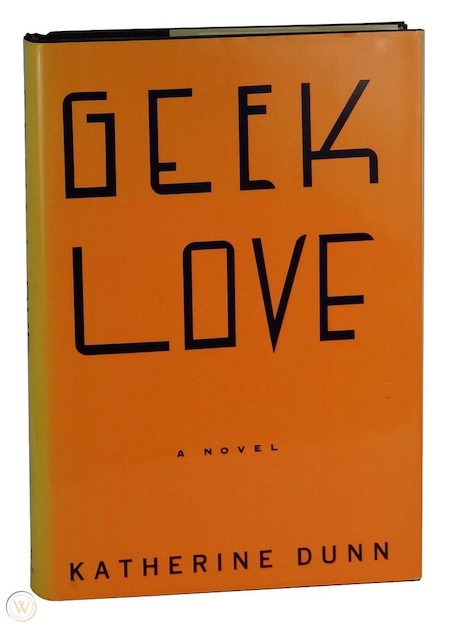
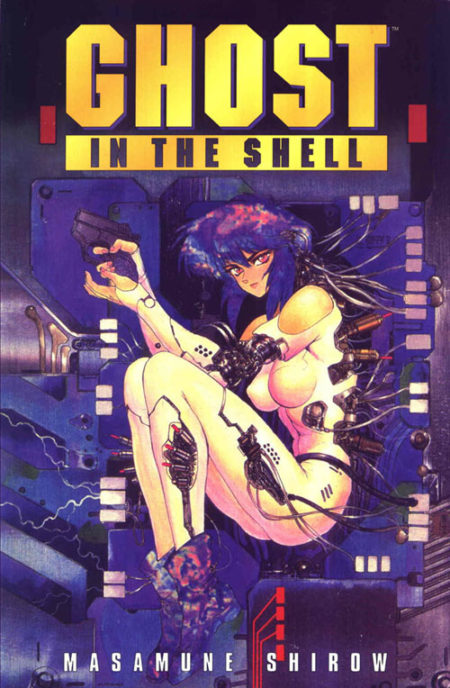
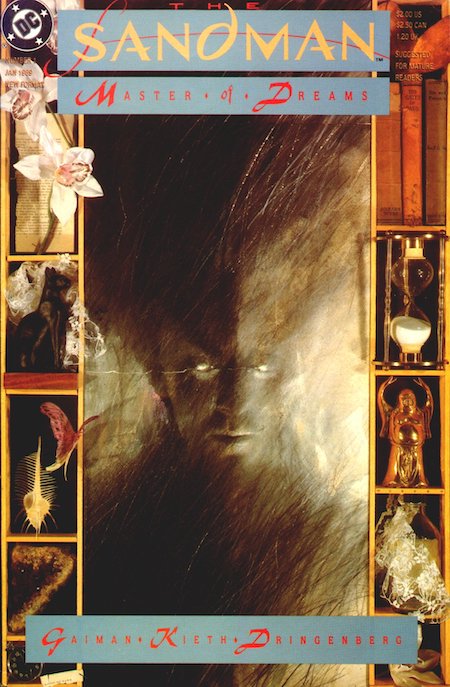
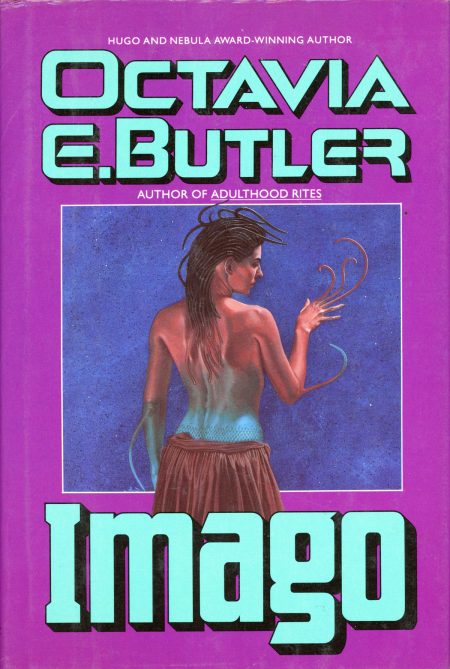
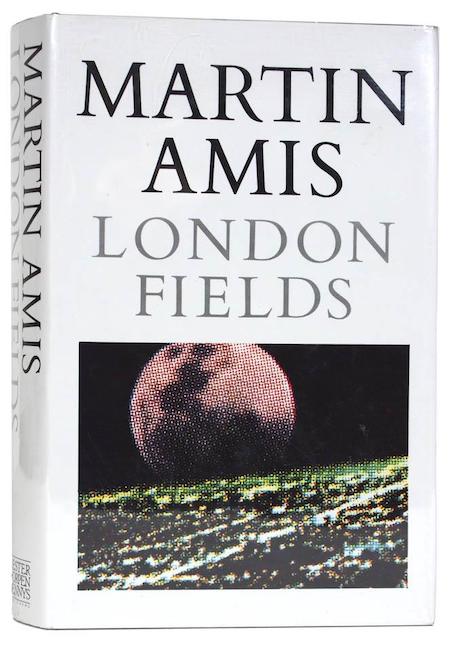
- Thomas Pynchon’s apophenic thriller Vineland. In 1984, the first year — according to HILOBROW’s periodization schema — of the cultural era we think of as the Eighties, and the midpoint of Ronald Reagan’s presidency, Brock Vond, a right-wing government operative, tracks hapless former hippie Zoyd Wheeler down in Vineland, the forest country north of San Francisco, and threatens to ruin his life a second time. Their first encounter, which we read about in flashbacks, happened 15 years earlier — at the height of the Flower Power movement — when Brock seduced Zoyd’s old lady, the radical film-maker Frenesi Gates, not only sexually but ideologically. Frenesi split, leaving Zoyd to raise their now-adolescent daughter Prairie — who, despite her dope-smoking dad’s best efforts, is more Gen-X cynic than flower child. The “Repression,” Zoyd’s Sixties-era term for everything wrong with America, has triumphed, “growing wider, deeper, and less visible, regardless of the names in power”; but Zoyd clings, romantically, to a vision of a better world. There’s a lot going on, here: mobbed-up businessmen, a psychic detective, TV addicts, and government agents, not to mention feminist ninjas, a UFO abduction, zombie-ghosts, and a Godzilla-like monster. It’s a political thriller, but also a picaresque, as Zoyd and Prairie hit the road — fleeing from Brock, and seeking the truth not only about Frenesi (who’s left a string of heartbroken hippies in her wake) but America’s counterculture. Fun facts: Surely an influence — along with The Big Sleep — on the Coen Brothers’ The Big Lebowski (1998). Pynchon would return the favor with Inherent Vice (2009), a darkly comic detective novel set in 1970s California featuring Larry “Doc” Sportello, another dope-smoking hippie hero.
- Lois McMaster Bujold’s Diamond Age sci-fi adventure The Vor Game. The sixth installment in the Vorkosigan Saga (1986–ongoing) is a fun one. Miles Vorkosigan, the protagonist of most of the series, is the brilliant, driven scion of an aristocratic family from the feudalistic, swords’n’spaceships planet of Barrayar; he is disadvantaged in his abitions because his mother is a Betan (she hails from a technology-rich, egalitarian galactic society), and because he is a dwarf. In a previous series installment, The Warrior’s Apprentice (1986), Miles manages to get himself accepted into the Barrayaran Imperial Military Service, after a brief career as “Admiral Naismith,” the swashbuckling leader of a mercenary space fleet. Here, shortly after graduating from the academy, Miles is assigned to a winter infantry training post, where he runs afoul of the tyrannical base commander. Charged with mutiny, he is recruited to work for Barrayaran Covert Ops, and winds up in a prison cell with Barrayar’s young emperor, Gregor, who had sneaked away from his palace. Worse, a Cetagandan invasion fleet — Cetaganda has staged several unsuccessful wars against Barrayar, in previous Vorkosigan books — may be en route towards the space station where they’re imprisoned. In order to repel the attack, Miles must outwit a femme fatale (herself a mercenary leader), his former commanding officer, and reconnect with his mercenary friends. Fun facts: Bujold has stated that the Vorkosigan Saga’s structure is modeled after the Horatio Hornblower books. The first several chapters of The Vor Game were originally published in a slightly different form as “The Weatherman” in the February 1990 issue of Analog. The Vor Game won the 1991 Hugo Award for Best Novel.
- Walter Mosley’s Easy Rawlins crime adventure Devil in a Blue Dress. When Ezekiel “Easy” Rawlins, a black, once illiterate Texas orphan who’s educated himself, fought in the Battle of the Bulge, and recently (the year is 1948) purchased his first home in the Watts neighborhood of Los Angeles, is fired from an aircraft assembly plant for being “uppity,” he accepts a seemingly straightforward job tracking down Daphne Monet, the missing mistress of a wealthy white politician. In the tradition of Hammett and Chandler, Easy’s search for this blonde beauty known to frequent black jazz clubs leads the unlicensed private eye into a tangle of crime and official corruption; unlike these earlier noir authors, Mosley also explores racism, social injustice, and race politics in Los Angeles. Having run afoul of DeWitt Albright, a sociopathic villain, Easy enlists the aid of Raymond “Mouse” Alexander, a charming but conscienceless killer with whom he grew up in Houston… and who is almost as liable to shoot Easy as anyone else. Plus, Easy falls for Daphne Monet, who is not what she seems. Fun facts: There are over a dozen Easy Rawlins mysteries, set from from the 1930s to the 1960s, including: A Red Death (1991), White Butterfly (1992), and Black Betty (1994). Devil in a Blue Dress was adapted in 1995 as a pretty good movie starring Denzel Washington, Jennifer Beals, and Don Cheadle as Mouse. There have been rumors of an Easy Rawlins TV series, too, over the years; NBC, supposedly, will air one.
- Philip Kerr’s Berlin noir historical crime adventure The Pale Criminal. In his second appearance, hardboiled private investigator Bernie Gunther is blackmailed by the Kripo — the Berlin criminal police — into rejoining their ranks and leading the investigation of a series of vicious crimes. (Teenage girls — “Aryan” types — are being raped and murdered. It’s a grisly story.) It’s the summer of 1938, and Gunther’s fellow countrymen wonder whether Hitler will plunge Europe into another war; meanwhile, Gunther seeks to avenge his partner, Bruno Stahlecker, who has been killed while investigating another blackmailing case. As per usual with Kerr, the period detail is impressive — overwhelming, at times. Gunther is a “good” German, inasmuch as he hates the Nazis. However, he’s homophobic, misogynistic, and lecherous; he’s not a sympathetic character. A brutal man navigates a brutalizing social order, investigating a brutal crime. The trail leads to Julius Streicher, Nazi mob boss and publisher of the sensationalist newspaper Der Stürmer, which seems to know too much about the killings — which Streicher is eager to pin on supposedly sinister Jews. Homosexuality, drug addiction, psychotherapy, and spiritualism play a role in the plot of this short, disturbing mystery. Fun facts: The story takes place between August 26th and November 10th — that is, between the negotiations (and appeasement, on the part of the main European powers) that resulted in Germany’s annexation of the Sudetenland, and Kristallnacht, a pogrom against Jews carried out by the Nazi Party’s paramilitary forces and civilians throughout Germany.
- Iain M. Banks‘s Diamond Age sci-fi adventure Use of Weapons. There are two narratives in this, the third Culture novel. In one, which moves forward in time, we follow Special Circumstances agents Diziet Sma, a female human, and Skaffen-Amtiskaw, a snarky AI drone, as they recruit ex-agent Cheradenine Zakalwe, a rogue, assassin, military genius, and sad sack, to further the aims of the Culture — nudging benighted galactic civilizations away from political tyranny, economic plutocracy, and cultural ignorance and intolerance, and towards enlightenment, left-libertarianism, and peace — in a politically unstable star system. (The drone believes that Zakalwe is burned-out; it can’t even guess at his real problem.) These are three of Banks’s best characters, and it’s fun to watch them in action; Zakalwe is the titular used weapon — the Culture needs him to do things that it regards as reprehensible. There is plenty of action as Zakalwe heroically achieves the Culture’s goals. The second narrative, meanwhile, moves chronologically in reverse! Here, we learn about earlier jobs that the near-sociopathic Zakalwe has performed for Special Circumstances, and eventually we learn about his childhood — growing up in a non-Culture social order, and commanding an army in a bloody civil war. Zakalwe has demanded that his Culture handlers locate a woman named Livueta; when he finally reunites with her, there’s a major plot twist that helps us to understand his motivation. As with every Culture novel, we’re left grappling with political-science conundrums. Fun facts: Diziet Sma and Skaffen-Amtiskaw also appear in Banks’s story “The State of the Art”; and we’ll meet Zakalwe again, too, under a different name. One hears that Banks wrote an even more complex version of this story in 1974, but abandoned it; years later, fellow Scottish sci-fi author Ken MacLeod — also known for chronologically tricksy story telling — helped him figure out how to transform it into something publishable.
- William Gibson and Bruce Sterling‘s Diamond Age sci-fi adventure The Difference Engine. If Adorno and Horkheimer had, instead of writing The Dialectic of Enlightenment, collaborated on an alternate-history novel about how things might have looked differently, in Victorian-era Britain, had Charles Babbage (the mathematician and inventor who in real life never completed his “difference engine” — a mechanical computer designed to produce error-free tables of mathematical functions commonly used by engineers and scientists — achieved his vision, the result might have looked something like this. By 1855 the Tory Party and hereditary peerage have been eclipsed by Babbage’s Industrial Radical Party, which champions the acceleration of technological change and social upheaval. Mechanical computers are now ubiquitous, though electricity is still just a theory; all sorts of steam-powered technologies have flourished. There’s a big downside: A proto-Orwellian surveillance state has come into being. Against this rich backdrop — too rich, perhaps; the book is in part a collage of material lifted from Victorian journalism and pulp fiction, and it’s crammed with historical jokes — we follow three stories, linked by a mysterious set of powerful computer punch cards. Sybil Gerard, a political courtesan, wants revenge for the execution of her Luddite father; Edward Mallory, a dinosaur expert, chances into possession of the cards, and must dodge secret agents in a London on the brink of anarchy; Laurence Oliphant, a real-life explorer and British spy, plays a smaller but provocative role. The book doesn’t have a conventional resolution; instead, Ada Lovelace, the real-world mathematician who published the first algorithm intended to be carried out by Babbage’s mechanical computer, thus inventing computer programming, explains the cards’ significance in a lecture about open systems. Also, we finally realize just who has been narrating this wild history. Fun facts: The Difference Engine, which the authors wrote by swapping a floppy disk back and forth, was not the first steampunk novel, but it is perhaps the most influential early example of the genre. Eileen Gunn’s online Difference Dictionary is a helpful resource, when reading this book.
- Ursula K. Le Guin’s Earthsea fantasy adventure Tehanu. Almost twenty years after publishing the Earthsea trilogy (1968–1972), Le Guin reacquainted us with Ged/Sparrowhawk, protagonist of A Wizard of Earthsea, and Tenar, protagonist of The Tombs of Atuan. Although a powerful mage, the ex-priestess of darkness Tenar has relocated to the same island, Gont, where Ged was mentored by Ogion; she has spent a couple of decades there — married to a farmer, now dead, and raising children, now gone away. Ged, who has lost most of his powers in an epic battle (as recounted in The Farthest Shore), shows up — injured and seeking a peaceful way of life. At the same time, Tenar rescues a badly burned girl (Tenar/Tehanu) from her abusive parents. A girl with extraordinary powers. If Star Wars, as I’ve suggested elsewhere, borrows from Le Guin, so does Game of Thrones. Here you’ll find no epic quests or wizard battles… for a while, anyway. It’s a book about rebuilding your life after trauma; and there are some traumatic moments. Not for young children! Fun facts: Winner of the Nebula and Locus Awards. Although it was subtitled “The Last Book of Earthsea,” Tehanu turned out to be the first installment in a new trilogy — which would include Tales from Earthsea and The Other Wind.
- Frank Miller and Geof Darrow’s satirical sci-fi comic Hard Boiled (1990–1992). As a teenager in the ’70s, Geof Darrow was obsessed with the comics of Jean Giraud (Moebius), the influence of whom can be seen in Darrow’s comics. Moebius introduced him to Frank Miller; the two would collaborate on the three-issue Hard Boiled and The Big Guy and Rusty the Boy Robot (1995), both from Dark Horse. Set in a dystopian, near-future Los Angeles, Hard Boiled is a PKD-ish yarn about insurance investigator Carl Seltz, whose suburban life is disturbed by memory gaps and violent dreams. (The plot of Miller’s 1983–1984 comic Rōnin explores some of the same ideas.) Seltz seems to have a secret life as a violent tax collector… but when his pursuit of a tax evader leads to a wild car chase and a scene of epic destruction, we are left wondering who this guy really is. He wonders, too. Darrow’s European-inflected artwork is mesmerizing — incredibly detailed, each panel demanding close attention. The weapons are extraordinary; each shard of shattered glass is limned. Miller’s story is a thrill ride and a satirical commentary on our violent society. Carl discovers that both of his identities are fictitious: Will he fulfill his destiny as a rebel leader… or return to his suburban idyll? Fun facts: Winner of the 1991 Eisner award for Best Writer/Artist Team. A 2017 graphic novel version of the series featured a completely new, more realistic and neutral color palette. Darrow went on to create the storyboards for The Matrix, and the Wachowskis were at point supposed to adapt Hard Boiled as a movie.
- A.S. Byatt’s treasure-hunt adventure Possession: A Romance. Roland Michell, a junior literary scholar dedicated to the life and work of the already much-dissected (fictional) Victorian poet R.H. Ash, is frustrated in his career; when he finds a letter from Ash to the (fictional) poet Christabel LaMotte, he decides to track down the details of their relationship without informing his employer, an Ash expert in whose cavernous archives Roland toils. The trail leads him to Maud Bailey, a feminist literary scholar and guardian of LaMotte’s letters and journals. Roland runs hot, Maud is chilly and reserved. The two are soon traipsing around England in search of further evidence that Ash and LaMotte may have been more than just literary friends. Interspersed with the Roland/Maud chapters are transcriptions of Ash and LaMotte’s poems, letters, and journal entries — a bravura effort on Byatt’s part (there are over 1,700 lines of period poetry, in two different styles), which readers who are just in it for the romance often find frustrating. However, while this is certainly a romance — two romances, really — it’s also a literary mystery, a campus novel of sorts, and a treasure hunt whose dramatic conclusion involves a grave robbery on a stormy night. Clues are to be found in those poems, letters, and journals, so readers should read them! Byatt’s prose is erudite, supple, and gorgeous. Fun facts: The poet Ash’s life and work are loosely based on Browning and/or Tennyson; LaMotte’s are loosely based on Christina Rossetti. Possession, a bestseller which won the Booker Prize, and which has been named one of the best English-language novels of the 20th century, was adapted in 2002 as an OK movie starring Gwyneth Paltrow and Aaron Eckhart.
- James Ellroy’s L.A. Quartet crime adventure L.A. Confidential. Another brutal, complicated, epic, and almost stream-of-consciousness neo-noir from the author of The Black Dahlia. Following a massacre at the Nite Owl coffee shop, three LAPD detectives — the ambitious Edmund Exley, son of a legendary LAPD detective; “Bud” White, an intimidating thug; and glory hound Jack Vincennes, technical advisor on a Dragnet-like cop show called Badge of Honor — must set their differences aside to unravel a 1950s Hollywood-centered conspiracy involving organized crime, political corruption, heroin, pornography, prostitution, and multiple murders. Evidence is withheld, backs are stabbed. Exley is an interesting character — a brilliant detective, but physically a coward. Was the Nite Owl mass murder a robbery gone wrong? Or was someone in the wrong place at the wrong time? Will our flawed protagonists redeem themselves — once they realize that they’re part of an utterly degraded, amoral system? Fun facts: Adapted in 1997 by Curtis Hanson as a pretty good movie with a pretty great cast: Kevin Spacey, Russell Crowe, Guy Pearce, James Cromwell, Kim Basinger, David Strathairn, and Danny DeVito. The novel’s title refers to the scandal magazine Confidential, fictionalized here as Hush-Hush.
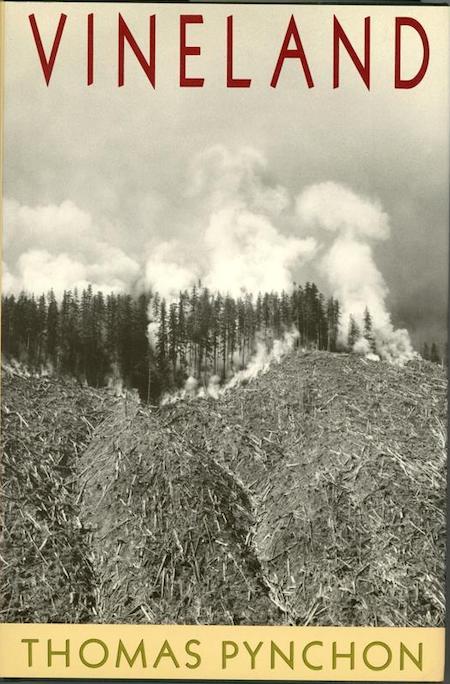
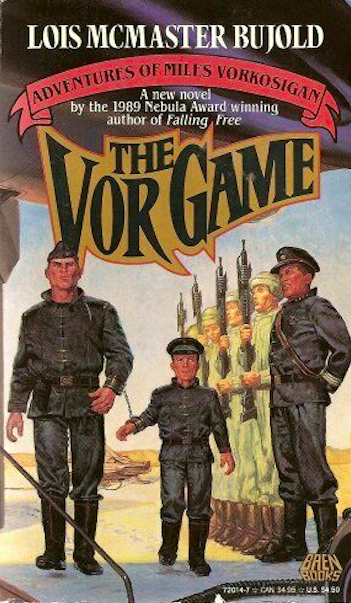
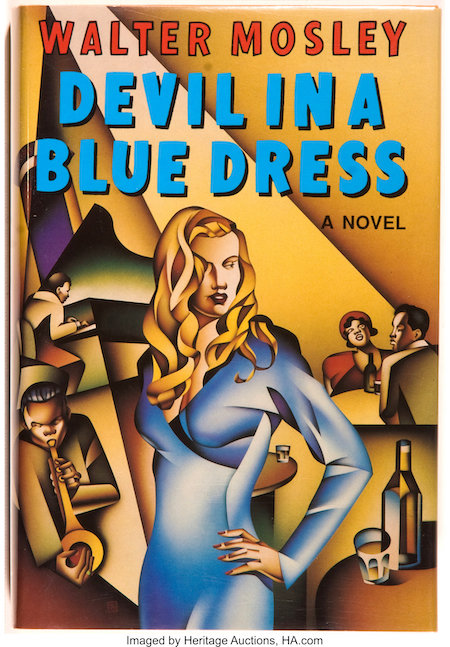
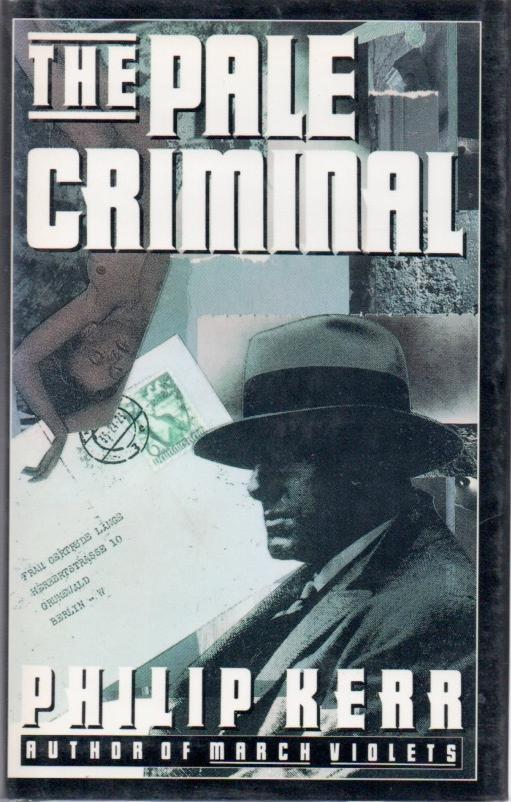
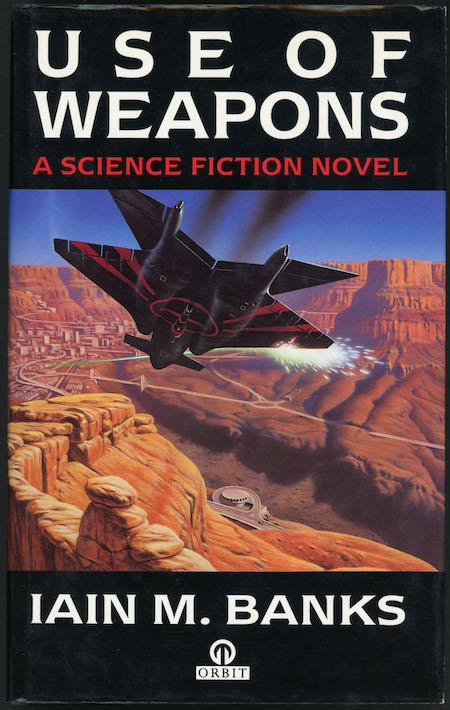
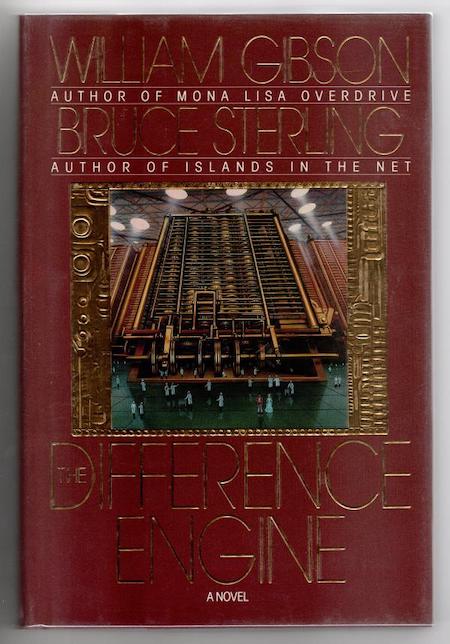
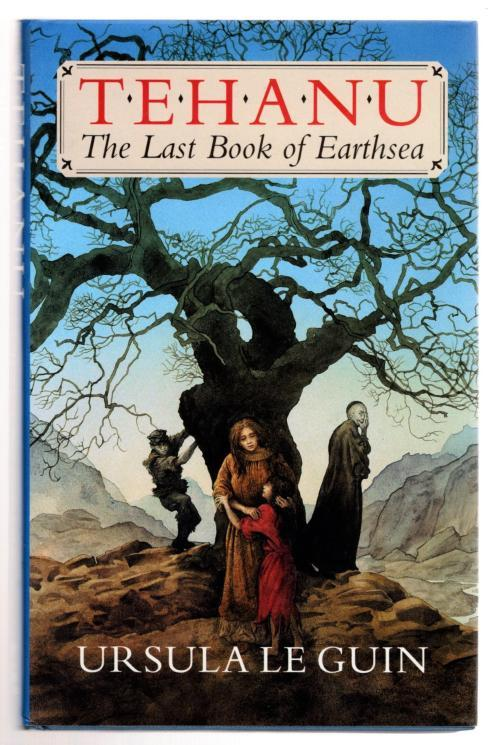
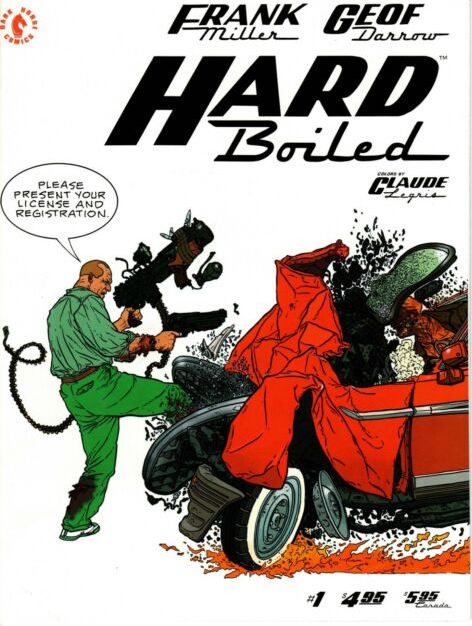
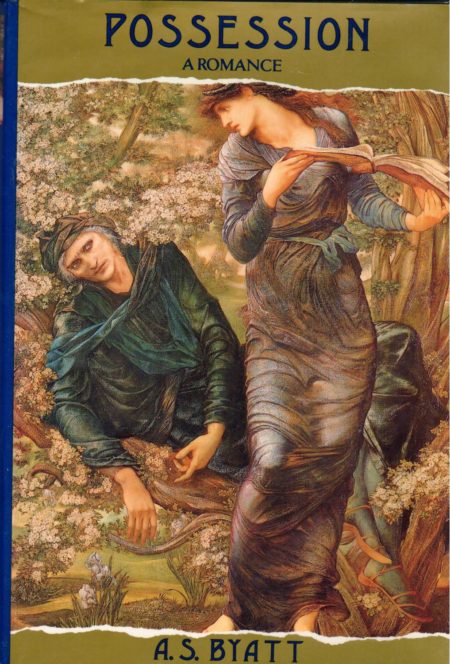
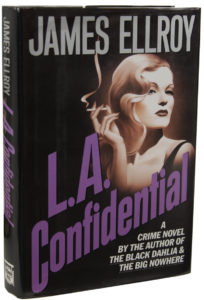
- Karen Joy Fowler’s historical adventure Sarah Canary. Is Sarah Canary a sci-fi novel? It was nominated for Nebula Award, so sci-fi readers certainly think it is. A weird-looking, white-skinned woman — wearing a battered but fashionable black dress — wanders into a railway camp in Steilacoom, Washington in 1873; she warbles like a canary instead of speaking. Railway worker Chin Ah Kin is ordered to take “Sarah Canary,” as she’s dubbed, to a nearby asylum; he ends up in the asylum, himself. There, the two meet B.J., an inmate who is sporadically sane. The three of them escape and head for San Francisco. The traveling party comes to include a showman named Harold, and Adelaide, a suffragette who fears the conventional roles of women; both seek to exploit Sarah for their own purposes.) What follows is a funny, moving, sometimes terrifying series of adventures and misadventures. The reader may suspect that this is a first-contact novel; Sarah indeed seems to possess unearthly abilities, or maybe unearthly technology. However, if our titular character is indeed a visiting extraterrestrial, then this picaresque makes it clear that the year 1873 was a particularly unfortunate time for a tour if the misogynist, racist American West — which Fowler renders as strange and terrifying as any alien planet. Each chapter begins with a poem by Emily Dickinson; several interludes provide factual information about strange but true events that happened in 1873. Fun facts: Fowler is best known as the author of The Jane Austen Book Club, a best-selling novel that was made into a 2007 romantic movie of the same name. But she began her career as a writer publishing sci-fi stories; Sarah Canary was her first novel. In 1991, Fowler cofounded the James Tiptree, Jr. Award, a literary prize for science fiction or fantasy that “expands or explores our understanding of gender.”
- Bret Easton Ellis’s sardonic thriller American Psycho (1991). Not one of my favorite books, but an underrated one — and an important cultural touchstone. David Foster Wallace said of novels by Ellis (“and certain others”) the following: “If what’s always distinguished bad writing — flat characters, a narrative world that’s cliched and not recognizably human, etc. — is also a description of today’s world, then bad writing becomes an ingenious mimesis of a bad world.” This is a fair description of American Psycho. Patrick Bateman, a Manhattan investment banker who worships Donald Trump, drones on about fashion, grooming, luxury goods, sex and violence, and the work of 1980s pop music artists. The present-tense stream-of-consciousness narrative quickly induces the sensation that one has been cornered, at a party, by a coked-out yuppie douche. He is also a psychopath (the shallow, vicious product, the author would have us understand, of a shallow, vicious capitalist society) and a serial killer (the violent, misogynistic product of etc.), though it’s not impossible that his murderous spree is a delusion. In an elite, privileged world where everything is commoditized and fungible, then why not kill and eat prostitutes and club girls? (At one point, he confesses his “murders and executions” to a colleague, who mishears the phrase as “mergers and acquisition.”) The novel’s violence is truly grisly and disturbing. Ellis’s publisher, Simon & Schuster, who’d acquired the book before he wrote those scenes, withdrew from the project because of “aesthetic differences”; and most reviewers expressed disgust for both the book and its author. A frightening, graceless, ingenious yarn about a frightening, etc. Fun facts: “Look man,” DFW’s quote continues, “we’d probably most of us agree that these are dark times, and stupid ones, but do we need fiction that does nothing but dramatize how dark and stupid everything is?” Mary Harron’s 2000 film adaptation, starring Christian Bale at his creepiest, is terrific — better than the book.
- Marvel’s sardonic-superhero Deadpool comics (1991–ongoing). Deadpool made his first appearance in The New Mutants #98; created by artist/writer Rob Liefeld and writer Fabian Nicieza, Wade Wilson was a killer with super-agility… who bore an uncanny resemblance to Slade Wilson, aka Deathstroke, from DC’s Teen Titans. (From the start, he was an in-joke.) Kicked out of the Special Forces and given a regenerative healing factor akin to Wolverine’s — by a secret government Weapon X program — he’d become a villainous mercenary. Deadpool would appear sporadically in various Marvel titles until he was given his own series, initially written by Joe Kelly and drawn by Ed McGuinness, in 1997. The “regeneratin’ degenerate” now became the Deadpool we know and love — a parodic antihero aware that he’s in a comic book. He breaks the fourth wall, directly addressing readers; he also reads Marvel comics in order to gain an unfair advantage over his opponents. Its creators expected the series to be canceled at any moment, so they didn’t hold back; Deadpool comics were stupid, slapstick, angsty, outrageous, and weird. “When it comes to the Merc with a Mouth,” Marvel’s official character webpage proclaims, “with great power comes no responsibility.” Fun facts: Ryan Reynolds portrayed Wade Wilson in X-Men Origins: Wolverine (2009), and reprised the role in Deadpool (2016) and Deadpool 2 (2018). In these latter (pretty great) adaptations, Deadpool’s “Truman Syndrome” gives him the ability to reference and mock not only X-Men movies, but also Ryan Reynolds’s previous movies.
- Pat Cadigan’s cyberpunk sci-fi adventure Synners. Gina, Visual Mark, and Gabe are middle-aged virtual-reality creatives, who’ve seen new technological breakthroughs transform their industry — and the wider world — for better and worse. The brain has been thoroughly mapped; and “sockets,” which allow us to input sensory information directly into our brains, and which were at first intended for entertainment purposes (immersive movies and music videos), have changed the way people experience life. When the corporation for which they work (Diversification Inc.) gives Visual Mark sockets, he becomes even less tethered to reality than before. Gina isn’t particularly interested in sockets — but she uses them to stay connected with her ex-boyfriend. It seems that these virtual-reality creatives can use sockets not only to input experiences, but to output them too; Visual Mark feels liberated by the technology, and abandons his body. Gabe, meanwhile, who was a bit of a slacker, finds it hard to adjust to sockets — which demand that he focus his attention and be the ever-present master of his imaginings. Instead of mastering this new technology, our three protagonists are mastered by it. Like one of Gabe’s productions, the novel itself is a bit cryptic, and hard to follow, with multiple POVs… until suddenly, after the halfway point, it coheres into a powerful, thrilling adventure story. Fun facts: Robert A. Heinlein dedicated his 1982 novel Friday to Cadigan. She won a Hugo Award for her 2012 novella The Girl-Thing Who Went Out for Sushi.
- Emma Bull’s cyberpunk sci-fi adventure Bone Dance. In a climate change-modified Minneapolis (or so one suspects), our androgynous protagonist Sparrow hustles by maintaining and repairing salvaged artifacts dating back to the “Big Bang”… that is, approximately the time we’re living in now. Like Robert Heinlein’s Friday, Sparrow seems to be badder than your average bad-ass, but exactly who and what she is we don’t understand. not at first. She traffics mostly in precious books, movies, and audio recordings. However, in the war between the Americas, we learn, the decisive weapon were figures with mind-control powers — known as the “Horsemen” — and it’s information on these that Sparrow seeks, in order to get rich quick. Weird things happen. As the story begins, Sparrow can’t recall the previous two days; she’s bruised and battered — what happened? She consults a Tarot reader — the book’s ten sections are named for Tarot cards, and is abducted by a dead man animated by what appears to be a loa, one of the “invisibles” of Louisiana Voodoo. (A nod, perhaps, to William Gibson’s Count Zero, published a few years previously?) The “Horsemen,” we discover, are not what Sparrow thinks they are; and the Voodoo-based community she encounters are rebels who need someone like her. Fun facts: Emma Bull’s best-known novel is War for the Oaks (1987), one of the pioneering works of urban fantasy. Bone Dance was nominated for the Hugo, Nebula, and World Fantasy Awards.
- Philip Kerr’s Berlin Noir historical crime adventure A German Requiem. Released from a Soviet prison camp in 1947, private eye Bernie Gunther makes his way from Allied-occupied Berlin — where the Soviet Union has begun unilaterally implementing elements of a Marxist political-economic system — to Allied-occupied Vienna. He’s there to investigate the murder of Linden, an American officer. Supposedly, he was killed by Emil Becker, a smuggler and former (dirty) Berlin police colleague of Gunther’s; but a high-ranking Soviet secret police officer, Poroshin, tells Gunther that Becker was framed. In Vienna, Gunther encounters Traudl, a beautiful German Communist, and Veronika, a Czech Jewess; these are two of the more fully realized female characters in Kerr’s trilogy. He’s befriended by Belinsky, supposedly an American Counter-Intelligence Corps (CIC) agent who’s also investigating Linden’s death. When Gunther is recruited by the “Org” — a secret organization of former Nazis — he finds himself embroiled in a postwar political situation straight out of Graham Greene. Whose movie The Third Man is being directed, in Vienna, as the novel ends. Fun facts: This is the final “Berlin Noir” trilogy installment. However, Kerr would write over 10 additional Bernie Gunther novels, including The One From the Other (2006), A Quiet Flame (2008), and If The Dead Rise Not (2009).
- Jim Starlin, George Pérez, and Ron Lim’s superhero space opera The Infinity Gauntlet. Thanos, an Eternal who carries the Deviants gene, is a super-powered nihilist in love with the physical embodiment of death; this much has been established before the beginning of this epic limited series. In order to impress Mistress Death, Thanos has collected the Infinity Gems (Soul, Mind, Power, Time, Reality, Space) and mounted them on a gauntlet; he now possesses godlike powers, which he uses to snuff out a quarter of all living things in the universe. This includes many Marvel superheroes. Earth, meanwhile, is derailed from its orbit, which leads to a new ice age. Epic! Adam Warlock, a cosmic superhero who’s tangled with Thanos before, recruits Earth’s remaining heroes and villains — the Silver Surfer and Doctor Strange being the most important of these — to steal the Infinity Gauntlet. Thanos kills many of our favorite heroes like a man swatting mosquitoes, which is weirdly thrilling. Also, he’s a sympathetic figure, because he truly believes that the universe only has so much life and energy to go around. Is he right? Fun facts: Published July–December 1991, in six installments. The storyline crossed over into other Marvel titles. (Starlin developed the character Thanos in 1973.) The Infinity Gauntlet story is retold in the movies Guardians of the Galaxy (2014), Avengers: Age of Ultron (2015), Avengers: Infinity War (2018), and Avengers: Endgame (2019). Casting Josh Brolin as Thanos was a terrific decision.
- Frank Miller’s neo-noir Sin City comics (serialized 1991–2000). “It’s kinda like the old Rolling Stones song, where ‘every cop’s a criminal, and all the sinners are saints,'” Miller has explained, “where the lowlifes would often be heroic, and the most stridently beautiful and sweet women would be prostitutes.” Sin City is an interrelated series of mostly black-and-white “yarns,” set in the titular city somewhere in the American West. We’ll meet the same characters several times — including the massive, heavily scarred Marv, whom Miller would describe as “Conan in a trench coat”; Dwight McCarthy, a nihilist with a history of drinking, violence, and wild love affairs; Gail, an Uzi-wielding dominatrix who runs the red-light district with an iron fist; and Miho, a mute female assassin. In “The Hard Goodbye” (Dark Horse Presents issues #51–62) for example, Marv wakes up after a one-night stand to discover that Goldie, a woman who somehow was able to overlook his hideous appearance, is dead; he’s been framed for murder, and he’s out for revenge. And in “A Dame to Kill For” (November 1993–May 1994), Dwight attempts to rescue his former fiancée, Ava, from her abusive husband; but is she the victim? Writing in HILOBROW, Adam McGovern has hailed the series’ “macabre cautionary desensitization and humorous overstatement.” Fun facts: The comics have been collected in various paperback and hardcover editions, each more gorgeous than the previous. “The Hard Goodbye,” “The Big Fat Kill,” and “The Yellow Bastard” were adapted as Robert Rodriguez and Frank Miller’s 2005 movie Sin City, which stars Jessica Alba, Benicio del Toro, Brittany Murphy, Clive Owen, Mickey Rourke, Bruce Willis, and Elijah Wood. There was a 2014 sequel, and there is supposedly a TV series reboot in the works.
- John Barnes’s sci-fi adventure Orbital Resonance. In the far future, after Earth’s ecology has been all but destroyed, a generation of children is being raised on the Flying Dutchman, a colony built on an asteroid looping between Earth and Mars. Melpomene Murray, our 13-year-old protagonist, and her cohort have been trained — and, as Melpomene comes to realize, mentally conditioned — from birth, to lead mankind into the future. “Lead” might be the wrong word, however, since Melpomene’s handlers, in their wisdom, have organized an adolescent social order in which young people won’t and can’t function on their own, outside of their highly cooperative groups. Unlike the kids in Ender’s Game, that is to say, these young folks aren’t hyper-competitive geniuses; instead, they seek consensus, rely entirely on one another, and prioritize the group’s success of their own individual success. Even their sports games, like the variable-gravity, lacrosse-style activity called Aerocrosse, involves working together. The worst insult, in these kids’ vocabulary, is “unco” — which stands for “uncooperative”. So is this a utopia or a dystopia? Mel and her friends thoroughly enjoy their lives… until they’re joined by a boy from Earth who has grown up with different values. The story ends abruptly, as series installments sometimes do, but it’s a fun, provocative slice of life in the spirit of Heinlein’s juveniles — though it’s not actually written for a young audience. Fun facts: Nominated for the Nebula Award. The following three books in the Century Next Door series are Kaleidoscope Century (1995), Candle (2000), The Sky So Big and Black (2002).
- Diana Gabaldon’s Outlander historical romance Cross Stitch (published in the Us as Outlander). An exasperating, silly adventure in many ways — but a wildly popular one, which is not without its thrills. Vacationing in the Scottish highlands, Army nurse Claire Randall is transported from 1946 to 1743. She’s assaulted by Captain Jack Randall — agent provocateur for the English, sadistic sexual predator, and a doppelgänger for Claire’s husband, Frank, who is descended from Randall. Rescued by a band of highland Scots who whisk her away to Castle Leoch, the seat of the Clan Mackenzie, she falls in love with and marries handsome, kind, lusty, brave Jamie Fraser. The doomed Jacobite Rising is fast approaching, Claire knows; how can she warn her new kinsfolk to stay out of it? Especially when many of them think she’s a witch or a Sassenach spy? Like every adventure set in Scotland, there are some pretty fun chase scenes and skirmishes. Claire and Jamie’s sex life is a mutually rewarding one, which is nice for them; for us, it’s tedious. Bizarrely, although Claire tells Jamie she’s from the future, and although he believes her, they never talk about it. It’s also a rape-y story (though it’s not Claire who gets raped), and the last fifth of it rivals American Psycho in its description of torture and assault. Fun facts: Outlander is one of the best-selling book series of all time. There are seven other installments, so far, including: Dragonfly in Amber (1992), Voyager (1993), and Drums of Autumn (1996). A TV series adaptation premiered in 2014, on Starz; starring Caitriona Balfe and Sam Heughan, it is now in its fifth season.


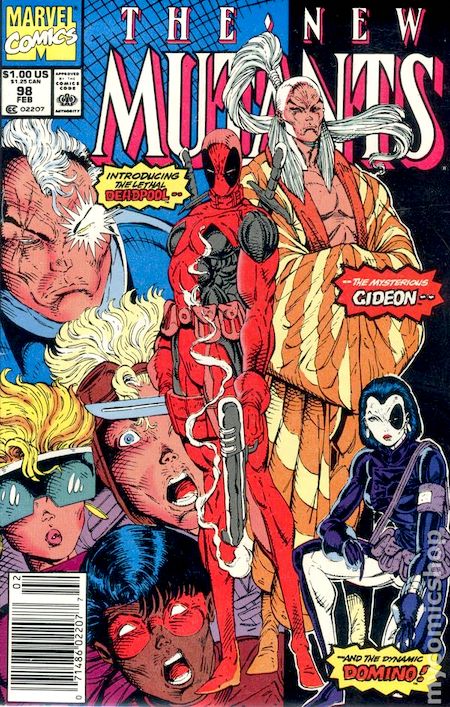
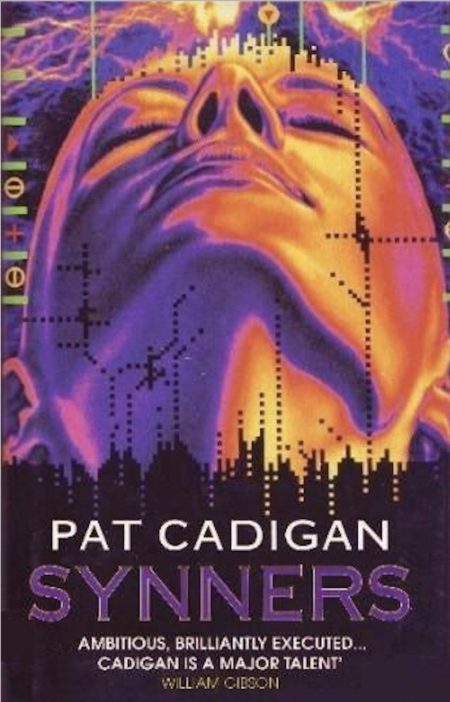
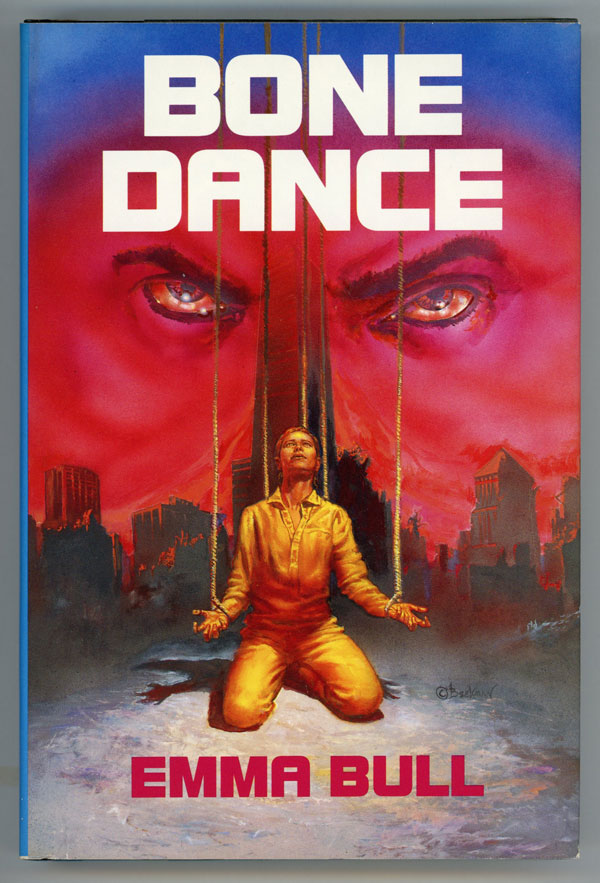
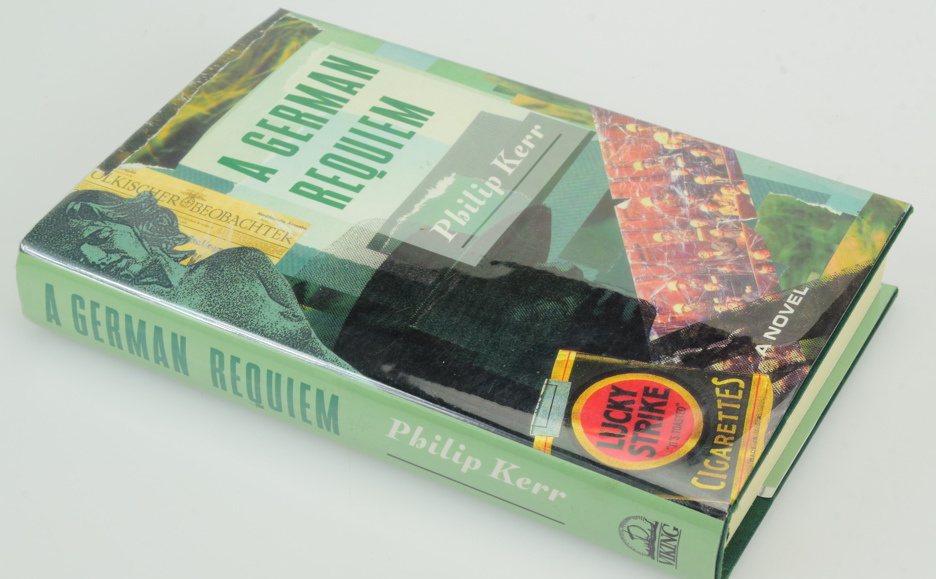
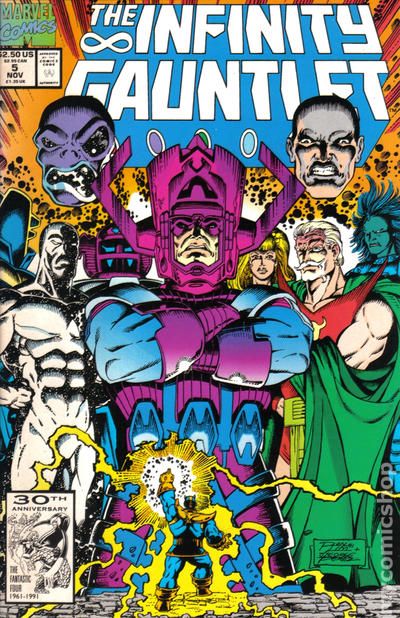
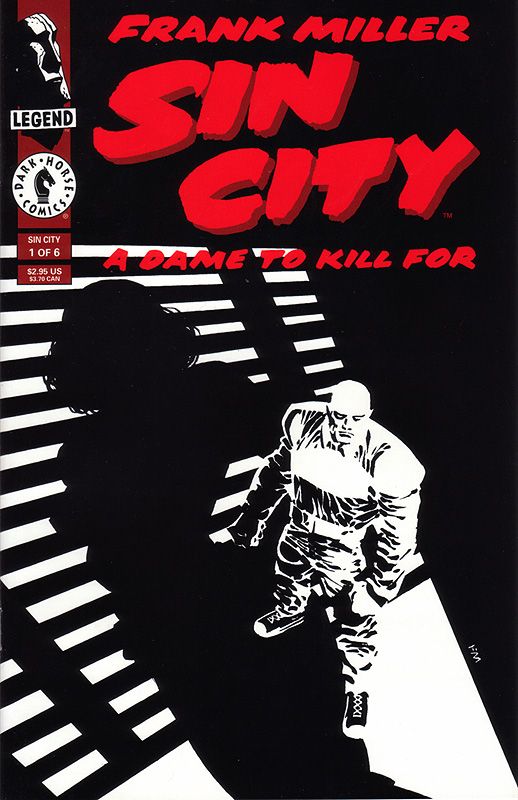

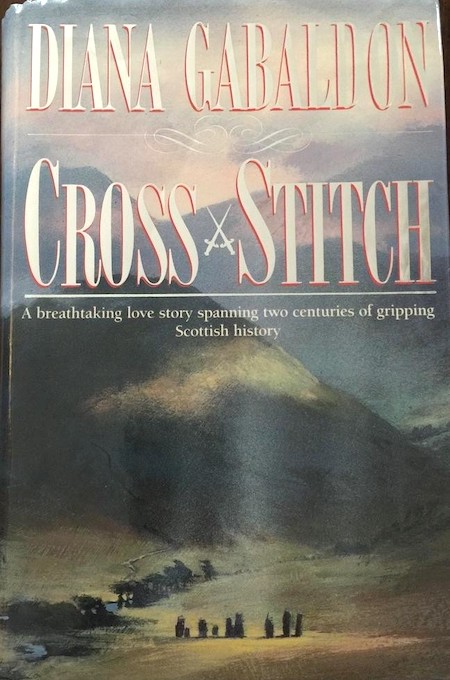
- Cormac McCarthy’s Border Trilogy western adventure All the Pretty Horses. Shortly after WWII, John Grady Cole’s grandfather dies and their Texas ranch is sold. Now on his own, the taciturn sixteen-year-old, who is fluent in Spanish and good with horses, mounts up and heads for Mexico. He is accompanied by his friend, Lacey, and a young runaway, Jimmy. Although less violent and apocalyptic than other McCarthy stories, this one is characterized by the author’s gorgeous writing, and its saga-like pace and tonality. When Jimmy loses his magnificent horse in Mexico, then steals it back from its new owner, he is pursued right out of the story (for a while). In Coahuila, John Grady is hired as a a horse trainer and breeder… but when he falls in love with the rancher’s beautiful daughter, he runs afoul of her strong-willed great aunt. A group of Mexican Rangers arrests Rawlins and John Grady, because Jimmy — it turns out — ended up killing a man. The frontier idyll turns into a Mexican prison story, then a hunted-man story as John Grady retrieves his stolen horses from the corrupt Rangers. The last portion of the book is perhaps a bit longiloquent, and we miss John Grady’s companions… but this is a powerful, romantic Western. Fun facts: The bestselling All the Pretty Horses won the U.S. National Book Award and the National Book Critics Circle Award. It was adapted in 2000 by Billy Bob Thornton as an OK movie starring Matt Damon and Penélope Cruz. The other installments in the Border Trilogy are The Crossing (1994) and Cities of the Plain (1998).
- Neal Stephenson‘s sci-fi adventure Snow Crash. Snow Crash, Stephenson’s first sci-fi novel, was developed from elements of a Ghost in the Shell-esque graphic novel that he’d abandoned; as such, it’s visionary yet goofy, deep yet two-dimensional, thrilling yet rambling and tedious, stylish yet stupid — which is fun. It’s set not only in a cyberpunk-influenced, ambiguous-libertarian-utopian future Los Angeles, but also in the “Metaverse,” a virtual reality-based successor to the Internet — the users of which interact as “avatars” (a term this book didn’t coin but popularized), with one another as well as with software agents. But if you’re expecting William Gibson’s spare, neo-noir prose, you’ll be disappointed; Stephenson is a maximalist — diving down every open rabbit-hole. Prose limitations aside, it’s a terrific thrill-ride. The quick-thinking, skateboard-riding courier Y.T. (for “Yours Truly”) is an impressive female hero; Hiro Protagonist, the half-black, half-Japanese hacker who teams up with her has awesome skills… though he’s not the protagonist. Within the Metaverse, Hiro is offered a datafile named Snow Crash — the term refers to a particular software failure mode on early Apple Macs; hackers who view the file (a virus, a drug, a religion — what’s the difference?) suffer not only catastrophic computer problems but brain damage. A massive infodump informs us that cultural information comes in discreet self-replicating packets, which can be transmitted like a virus or genetic code; and that the Sumerian language is the firmware programming language for the human brainstem, which supposedly functions as the BIOS for the brain itself. (In Stephenson’s recounting of the story of the Tower of Babel, the goddess Asherah personifies a linguistic virus created to control all humankind; the god Enki created a counter-program that caused humans to speak other languages.) Raven, the story’s villain, is terrifying and oddly sympathetic; Uncle Enzo, the Mafia kingpin who takes a paternal interest in Y.T., is also a compelling figure. There is plenty of action, here, even if the climactic action sequence is somewhat of a letdown. Fun facts: Snow Crash’s Metaverse has influenced the development of everything from Second Life to the videogame Quake. In 2017, Amazon announced that it was co-producing an hour-long sci-fi TV show based on Snow Crash; Joe Cornish is executive producer.
- Tibor Fischer’s Under the Frog. One of my favorite novels — though admittedly not an adventure, at least not all the time. Gyuri Fischer, a young Hungarian, has lived under Russian occupation for the past eight years… which is to say, since 1948. In 1956, which the reader knows is the year of the student-led Hungarian Uprising (the first major threat to Soviet control), though our protagonist does not, we follow Gyuri’s hijinks as a basketball player on a traveling team. He and his friend, Pataki, and the other team members spend their time in search of food, alcohol, and girls; they travel to games in the nude, just because they can. (The author’s parents, both basketball players, fled Hungary for England in 1956.) Pataki, a rebellious troublemaker, gets himself arrested by the secret police — a brutal appendage of the Soviet Union’s secret police forces. Otherwise, this is a black comedy about life under tyranny; the Hungarians are tough, unsentimental, and unpersuaded by government rhetoric about the “gains of socialism.” Fischer’s writing is brilliant, inventive, supremely amusing. When the Uprising, which lasted from October 23 until November 10, gets underway, suddenly we’re in a guerilla war adventure. The tonality is saga-like — violence happens, but life goes on. This sort of thing is interrupted, however, by Gyuri’s love affair — a marvelous adventure of its own, while it lasts. Fun facts: Fischer’s debut effort was rejected 58 times before Polygon, a small independent publisher, took it on. It was the first debut novel to be shortlisted for the Booker Prize; Fischer was named to Granta’s Best Of Young British novelists list in the same year. The title is taken from a Hungarian expression — “under a frog’s arse, down a coalmine” — which describes a situation when things can’t get any worse.
- Kim Stanley Robinson’s Mars Trilogy sci-fi adventure Red Mars. This is the first installment in a trilogy — with Green Mars (1993) and Blue Mars (1996) — that collectively won the Nebula Award, and the Hugo and Locus Awards twice. The story explores egalitarian, sociological, and scientific advances made on Mars, while retrograde Earth suffers from overpopulation and ecological disaster. Red Mars is set (at first) in what was then the not-too-distant future of the 2020s; a group of 100 American and Russian colonists — including John Boone, Maya Toitavna, Frank Chalmers, and Arkady Bogdanov — are leading a terraforming mission on Mars, the red planet. Robinson writes “hard” sci-fi, so we get a lot of info about domes made of piezoelectric plastic, genetic experimentation, giant satellite mirrors reflecting light to the surface of the planet, and Symmes Hole-like “moholes” drilled to create planetary vents of hot gases. (None of this literally world-building tech is particularly woo-woo; it’s all reasonable.) At the same time, this is an epic tale about a grand social experimentation — and, at an individual level, it’s a story of romance, rivalries, friendships, ambition. Red Mars has its adventurous aspects, but somehow the most adventure-like moments — interminable treks across barren wastes — are the least engaging. More fun is watching the “First Hundred” split into factions: they don’t leave behind their old national, social class, religious, and cultural identities and worldviews, nor their neuroses and bad habits; and they can’t (ever) agree on the best way to help humankind flourish. Things fall apart: Characters of whom we’ve become fond are killed, systems we’ve watched form are shattered. Earth, meanwhile, falls under the control of transnational corporations that come to dominate its governments — who show an increasing interest in meddling in Martian affairs! Fun facts: Red Mars has been described as an exemplar of Mundane Science Fiction (MSF). In a 2005 interview I conducted with Fredric Jameson, he suggested that KSR’s Mars Trilogy offers the best example of post-Cold War utopianism, because instead of asking the reader to decide on any one of the colonists’ competing ideologies, the author “goes back and forth between these various visions, [allowing us to see] it’s not a matter of choosing between them but of using them to destabilize our own existence, our own social life at present.”
- Tim Powers’s Fault Lines fantasy adventure Last Call. Some twenty years ago, professional gambler Scott Crane lost his soul in a card game; now, he wants to win it back. Along the way, people will try to kill him; he will discover the secret-secret history of Las Vegas (Bugsy Siegel, for example, founded Sin City with arcane ulterior motives); and he will find himself drawn into Assumption, a dangerous card game — part poker, part divinatory tarot. (Did you know? The origin of playing cards is obscure; the deck we know seems to have been imported to Europe from the East — by gypsies, perhaps, or crusaders.) Psychic possession, by an immortal creep, who happens to be Crane’s father, is a plot point in this proto-New Weird urban fantasy; ancient rites are enacted using bathetic contemporary props; T.S. Eliot’s “The Waste Land” offers helpful clues. Slow-moving at first, as we learn about the rules of magic in the bizarre yet familiar world that Powers has created, the story gets tense during its final 100 pages. An apophenic thriller reminiscent of Powers’s friend Philip K. Dick. Fun facts: Winner of the World Fantasy and the Locus Awards, Last Call is the first installment in a loose trilogy that includes Expiration Date (1995) and Earthquake Weather (1997).
- Michael Connelly’s Harry Bosch crime adventure The Black Echo. In the first of many appearances, LAPD homicide detective Hieronymus “Harry” Bosch investigates the apparent overdose of a fellow “tunnel rat” — that is, a Vietnam War vet in whose company Bosch once spelunked Vietcong tunnel-mazes, their fanciful nickname for which gives this book its title. This is a neo-noir, written in a sometimes tiresome staccato style; its context seems like a contemporary updating of James Ellroy’s L.A. Quartet series, though to be fair, Connelly was a crime reporter for the LA Times when writing this. Despite its reliance on cliches — the Vietnam vet with PTSD, the maverick good cop in a corrupt department, the vengeful Internal Affairs duo, the female FBI agent love interest — it’s a fun thriller. Bosch struggles with his traumatic past experiences, outmaneuvers Internal Affairs, disobeys his superiors’ directives, and seeks justice for the victims of crimes that the FBI doesn’t want him involved in. Turns out that the whole thing is connected to a bank heist… and that the burglars were after more than just money. Phew! Fun facts: Winner of an Edgar Award for Best First Novel, The Black Echo has been followed by 20 more Bosch books, not to mention several books featuring LA defense attorney Mickey Haller (e.g., The Lincoln Lawyer), who is Bosch’s half-brother. The third season of the Amazon TV series Bosch, starring Titus Welliver, is loosely based on The Black Echo.
- Maureen F. McHugh’s sci-fi adventure China Mountain Zhang. The titular China Mountain Zhang is a gay New Yorker of Chinese descent; unambitious, introverted, and concerned to hide the truth about his national origin (American-born-Chinese are considered inferior to Chinese-born-Chinese; also, he’s half-Hispanic), Zhang isn’t the heroic type. Instead, he serves as our guide to a future world in which America’s economy has collapsed and the People’s Republic of China has become a hegemonic world power. In the chapters about Zhang, he begins as a construction foreman; his sexuality has cost him his first job and his chance of a great career in Shanghai. He’s posted to an Arctic scientific station on Baffin Island, as an engineering tech; he studies cutting-edge, daoist engineering in Wuxi, the new Imperial City; he tutors Martian homesteaders in their hard-scrabble agricultural commune; and he finishes up as a kind of super-architect. Along the way, he cruises for casual sex, while taking care to mask his same-sex desire — which is forbidden, in China. The book’s other chapters show us the world from the perspective of other characters: San-xiang, a deformed Chinese woman who seeks genetic modification, only to discover that a pretty face isn’t the solution to her problems; Angel, a cyber-kite flier in New York; two Martian settlers. There are many stories, here; they don’t cohere — but they all concern ordinary people winning small-scale victories within a repressive social order. It’s not an adventure, but it’s impossible to put down. Fun facts: McHugh’s first novel, China Mountain Zhang was nominated for the Hugo and Nebula Awards, and won the James Tiptree, Jr. Award. It has been described as an exemplar of “Mundane Science Fiction” (MSF). McHugh’s 2011 collection, After The Apocalypse, was one of Publisher’s Weekly‘s 10 best books of 2011.
- Richard Price’s crime adventure Clockers. An epic tale about a relatively straightforward incident, offering richly detailed portraits of Rocco Klein, a veteran homicide detective in a Jersey City-like fictional northeastern city and “Strike” Dunham, a 19-year-old mid-level crack dealer there. When Darryl, a resturant manager and crack-gang sub-lieutenant, is shot in the restaurant’s parking lot, Strike’s older brother Victor, a law-abiding father of two, confesses to the murder. Klein, who has no appetite for sending innocent men to jail, investigates; but can he get Strike to cooperate? (Strike inherits Darryl’s position as second-in-command in their operation.) Rocco is a familiar stereotype — the jaded, brutal, but honest and empathetic cop. Strike, however, is a fascinating character: smart, paranoid about police and rival drug gangs, highly organized, frustrated with his crew of “clockers,” beholden to his violent mentor/high-erup Rodney, prematurely ulcerous. Price offers a journalistic depiction of the crack trade: turf skirmishes, “cuts” tailored to different clientele, supply chain shenanigans, police payoffs. The fictional city — a post-apocalyptic wasteland — is itself a character. Fun facts: Adapted in 1995 by Spike Lee (who co-wrote the screenplay with Price) as a movie starring Mekhi Phifer as Strike, and Harvey Keitel as Rocco. (Malik Sayeed’s cinematography is outstanding.) Price would write episodes for David Simon’s HBO show The Wire.
- Caroline Stevermer’s YA sci-fi adventure River Rats. Like Emma Bull’s Bone Dance (1991), this post-apocalyptic, Twain-inspired yarn is set in America’s Upper Midwest region. Some years after the “Flash” and the epidemic that followed, a feral group of orphaned children — two girls, four boys — pilot a paddle wheeler up and down the Mississippi, delivering mail to settlements of survivors and performing punk rock shows. The river’s water is poisonous; the cities along it — Minneapolis/St. Paul, LaCrosse, and everything between — are dangerous ruins. Tomcat, our narrator, is an amusing raconteur. When the Rats rescue a stranger, who is being pursued by a gang known as the Lesters, their precarious idyll is threatened; and when they embark on a quest for an underground vault full of guns, supplies, and other survivalist materiel, they run afoul of much more savage, destructive, amoral adolescents. Not as violent and dark as many post-apocalyptic YA books of the era, but still tense and thrilling. Stevermer does more showing than telling, which makes this a rewrding book to revisit — it’s more complex than it seems. When Tomcat is ambushed by the Wild Boys, will he fight them? Or join them? Fun facts: Named an ALA Best Book for Young Adults. The author is best known for her Cecelia and Kate historical fantasy novels, as well as her Galazon fantasy series, beginning with A College of Magics (1994).
- Todd McFarlane’s Spawn superhero comic (1992–ongoing). In the late 1980s and early 1990s, Todd McFarlane was the bestselling writer and artist at Marvel Comics. Blame him, if you’re not a fan of this sort of thing (I’m not), for the ’roid rage-ish “blood and boobs” style of the era’s most popular titles. He portrayed Peter Parker as a jacked-up, spiderish freak, and Mary Jane as a Red Sonja-esque bombshell; and he drew the first full appearances of Venom. In 1992, he helped transform the industry by cofounding Image Comics, contributors to which (supposedly) owned the rights to their creations; detractors were nonplussed by Image’s focus on cranking out of collectible products to the exclusion of, like, quality art or storytelling. Still, we can’t ignore the success of Spawn — an elite government assassin who is murdered by his best friend, then returns from Hell as a reluctant soldier of Malebolgia (the Devil). There were many morally compromised characters in comics, at the time, and plenty of gore; but Spawn immediately became iconic. The first issue sold 1.7 million copies, an indie record. Several talented writers — Alan Moore, Neil Gaiman, Dave Sim, Frank Miller, Grant Morrison — contributed stories to the series. There was a 1997 feature film, a 1997–1999 HBO animated series, and a wildly popular action figure. Love him or hate him, Spawn remains popular around the world; he’s a phenomenon to be reckoned with. Fun facts: The 1997 movie adaptation, directed and cowritten by Mark A.Z. Dippé, was one of the first films to feature an African American actor (Michael Jai White) portraying a major comic book superhero. Image remains the third largest comic publisher in North America, behind Marvel and DC; McFarlane Toys is one of the world’s top action figure manufacturers. Jamie Foxx has signed up to play Spawn in a forthcoming feature, costarring Jeremy Renner and directed by McFarlane.
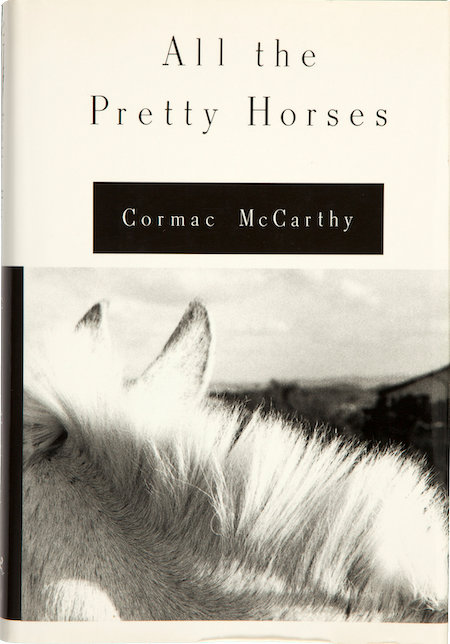


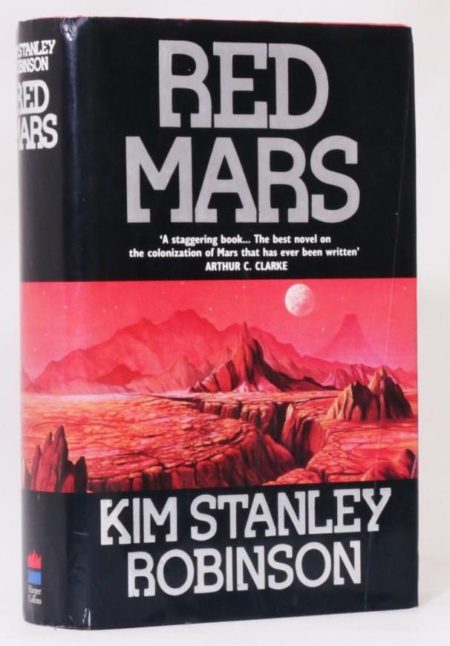
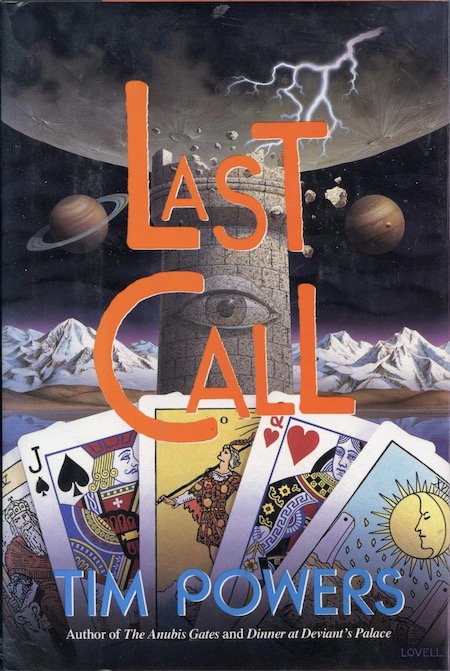
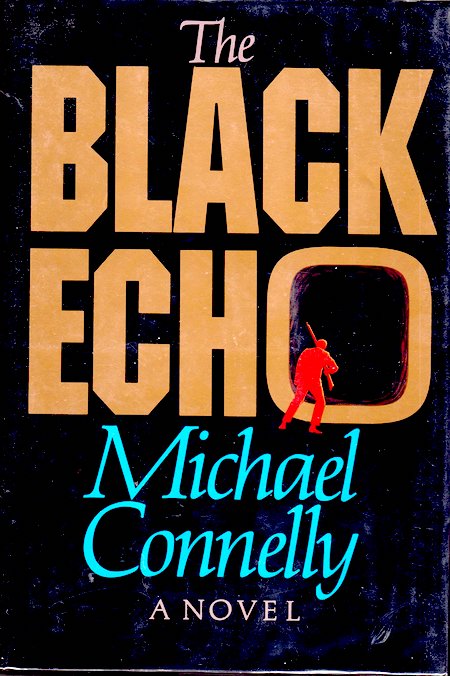
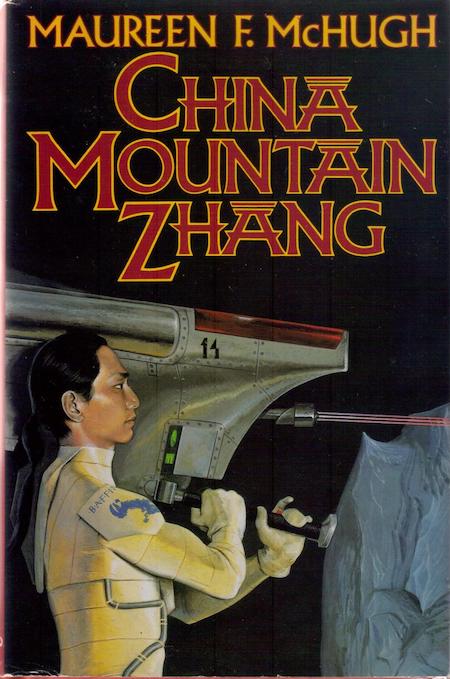
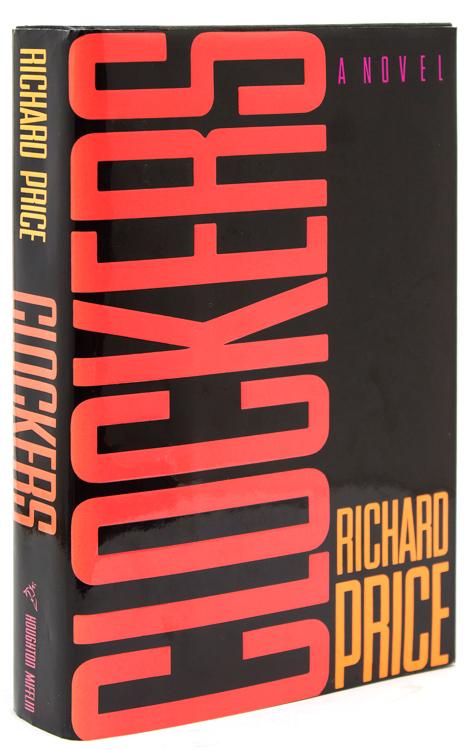
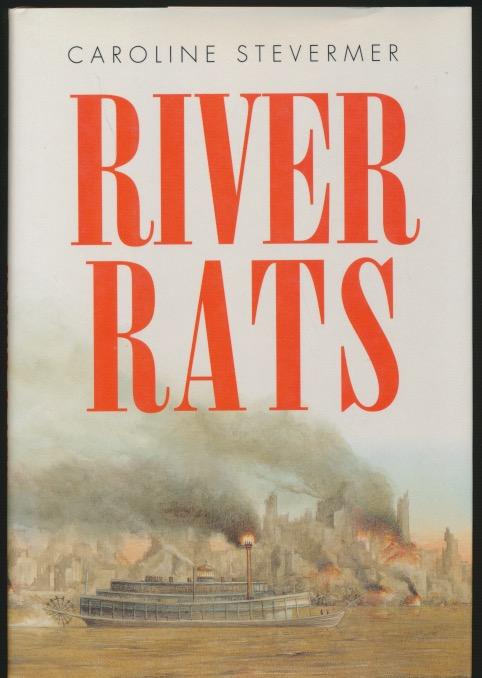
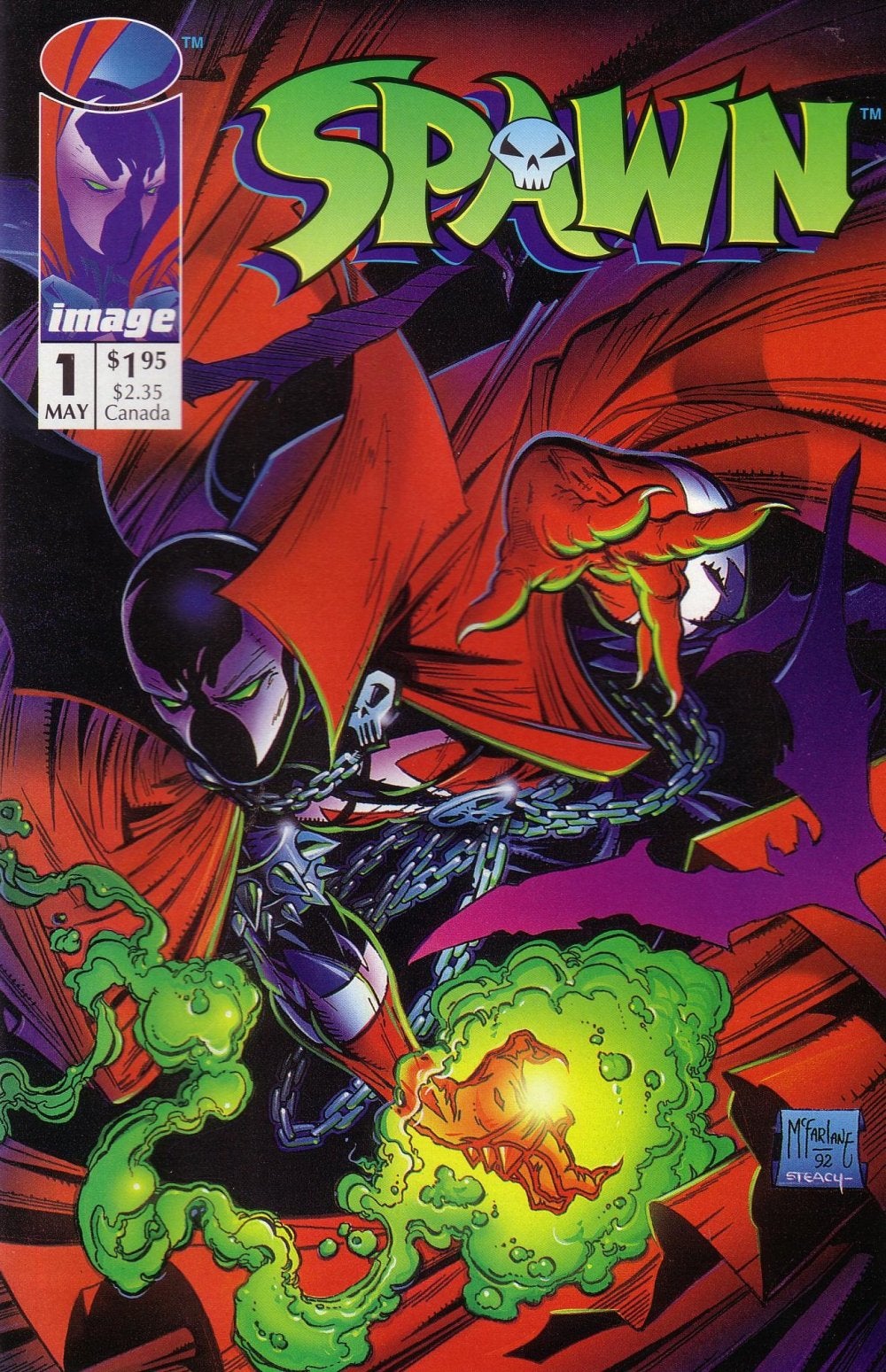
- Octavia E. Butler‘s Earthseed sci-fi adventure Parable of the Sower. Lauren Olamina, a teenager living in a gated community outside of Los Angeles, suffers from hyper-empathy; she viscerally feels whatever physical pain she witnesses. However, in the not-too-distant future (the 2020s), when the social order begins to collapse due to global warming, economic stagnation, racism and sexism, and extreme wealth disparity, Lauren’s condition may prove to be a super-power, of sorts. If she can survive, and find people she can trust — then Lauren’s prophetic “seeds” — her ideas for a new social order, one based on a religion that will teach self-sufficiency and a radically new understanding of what God is — may have a chance of finding purchase. The story, told through (rather stoic, matter-of-fact) journal entries, details the brutal events that come to pass during the early days of America’s collapse, as well as Lauren’s efforts to found a utopian “Earthseed” commune in northern California. Now that it’s nearly 2020, Butler’s depiction of what’s to come — including a president who aims to make America great again by suspending minimum wage, environmental, and worker protection laws — feels depressingly, chillingly accurate. Fun facts: The first in a two-book series. The book’s title is borrowed from a parable that Jesus tells (in Matthew 13:1-23, Mark 4:1-20, and Luke 8:4-15) about a sower whose seed falls on various patches of ground, most — but not all — of which are inhospitable.
- Dwayne McDuffie and Denys Cowan’s Hardware comic (1993–1997). When comics writer Dwayne McDuffie, comics artist Denys Cowan, and other African American talents founded Milestone Comics (published and distributed by DC) in 1993, in order to provide better representation for minorities in comics, McDuffie and Cowan’s first title was Hardware. The Iron Man-inspired series features a brilliant corporate scientist, Curtis Metcalf, who creates a high-tech armored suit and goes to war against his supposedly liberal, humanitarian employer, Edwin Alva. (“A cog in the corporate machine is about to strip some gears…”) We get a crash course in metallurgy, computer science, nanotechnology, and plasma weapons; one of the coolest aspects of the armor — Hardware 2.0 — is how it integrates the most advanced human technology with that of an alien civilization, the Cooperative. (One device of Cooperative origin, the Inertia Winder — which can absorb and store kinetic energy — seems to have been borrowed by Marvel Comics for its 2018 movie Black Panther.) Metcalf was a working-class prodigy discovered and educated by Alva; a personal, even existential aspect of his crusade concerns his discovery that despite all of Metcalf’s extraordinary accomplishments, Alva has never considered him a worthy equal. Since 1997, Hardware has been incorporated into the DC Universe, teaming up with the Blue Beetle, Superman, and others… and even joining the Justice League. Fun facts: In her Afrofuturism series here at HILOBROW, Adrienne Crew notes — of African American half-human, half-tech superheroes like Cyborg, Deathlok, and Hardware — that these characters are “roboticized examples of the ‘tragic mulatto’ trope in American culture … mixed-race men and women tortured by their inability to find their place [in the world].”
- Gene Wolfe’s science fantasy adventure The Book of the Long Sun (1993–1996). A sequel of sorts to the author’s better-known, award-winning Book of the New Sun tetralogy (1980–1983), this four-volume epic is a rich, complex religious allegory. Nightside the Long Sun (1993), Lake of the Long Sun (1994), Caldé of the Long Sun (1994), and Exodus from the Long Sun (1996) recount the struggles of Patera Silk, a Moses- and Christ-like parish augur, to lead his people out of a false world and into a real one. The first volume sees Silk attempting to protect his impoverished manteion by breaking into the mansion of the crime lord Blood, who has purchased the manteion; it’s a Father Brown-esque crime adventure of sorts, set within a world whose lineaments are at first confusing. The second volume is an espionage adventure, of sorts… in which Silk explores his labyrinthine world (“Whorl”) and begins to learn its shocking secrets. An armed rebellion consumes the third volume, a war story; will Silk become the titular caldé — his city-state’s leader? The final volume, a utopian narrative, explores a matriarchal society that seems to offer a peaceful alternative to Silk’s own patriarchal oligarchy. In the end, however, the Whorl cannot be redeemed; it’s a prison… Silk must help his followers find their way out of it. Perhaps not as gripping as the Book of the New Sun, but what an achievement! Fun facts: Writing about the Book of the New Sun series, Thomas M. Disch asked us to “imagine a Star Wars–style space opera penned by G.K. Chesterton in the throes of a religious conversion.”
- Andrzej Sapkowski’s Witcher fantasy adventure The Last Wish (Ostatnie życzenie, translated into English in 2007). In this collection of the original Witcher stories (connected by a frame story), Geralt of Rivia encounters fantastic creatures in twisted Slavic mythology and fairy-tale contexts. “A Grain of Truth” (“Ziarno prawdy”), for example, is a version of “Beauty and the Beast”; “The Lesser Evil” (“Mniejsze zło”), is a version of “Snow White” (though one in which the heroine convinces a band of seven dwrves to quit mining for banditry). Geralt’s tales take place on a continent settled thousands of years ago by Elves, then invaded a few hundred years ago by humans. Elves and other non-human races now live in ghettos within human settlements, and in the wilderness. “Witchers” like Geralt are mutants — bred and trained to slay vampires, werewolves, chimeras, and manticores. The writing is lyrical, the stories entertaining, the monster-fighting thrilling. Geralt is a Philip Marlowe-esque character, looking to make a buck in a corrupt world without compromising his own code of behavior. Fun facts: There are several other Witcher story collections, as well as a five-part series of novels — incuding Blood of Elves (Krew elfów, 1994), Time of Contempt (Czas pogardy, 1995), and Baptism of Fire (Chrzest ognia, 1996). A 2001 Polish fantasy film adaptation, The Hexer (Wiedźmin), starred Michał Żebrowski. There’s a popular trilogy of video games (The Witcher, The Witcher 2: Assassins of Kings, and The Witcher 3: Wild Hunt), a graphic novel series, and now a Netflix series starring Henry Cavill.
- Jeff Noon’s Vurt sci-fi adventure Vurt. In the anarchic, rain-swept environs of future Manchester, England, nearly everyone is obsessed with “Vurt” — a vast multiplayer virtual reality game/consensual hallucination accessed by sucking on drug-infused colored feathers. (Also: dog-human hybrids have formed a thriving subculture, with their own rock stars; flesh cops and shadowcops pursue those who access illicit versions of vurt; and there’s and there’s a tentacled, multi-orificed, harmless Thing From Outer Space, too.) Vurt, it seems, is in fact a kind of parallel world, or multiverse; you can lose things there, and bring other things back. This is the situation haunting our narrator, Scribble, who’s lost his sister — with whom he is sexually obsessed — somewhere in the game. As he careens around with his friends, the chrismatic but largely unsympathetic Stash Riders, in search of exotic and illicit vurt feathers, Scribble schemes to retrieve Desdemona, somehow, from wherever she may be. (There’s an echo, here, of the Tammuz/Ishtar myth.) In the end, Scribble may have to give up everything he knows and loves in order to succeed in his quest. For better and worse, this is a story very much of its moment: “In science fiction, once a generation there are one or two voices that capture the times the same as bands do,” says Warren Ellis. “In 1993, post-rave, where things were still jumping but they were starting to get a bit dark… Jeff Noon was the sound of post-rave.” Fun fact: Winner of the Arthur C. Clarke Award. Noon’s second book, a sequel, is titled Pollen (1995); he also wrote a prequel, Nymphomation (1997). In 2017, Ravendesk Games published a tabletop role-playing game version of Vurt.
- Irvine Welsh’s druggy picaresque Trainspotting. An interrelated collection of stories about Mark “Rent Boy” Renton, Simon “Sick Boy” Williamson, Daniel “Spud” Murphy, Francis “Franco” Begbie, and their whole sick crew of drug-abusing Edinburghers. Set in the mid-1980s, and narrated in thick Scots dialect and slang, Trainspotting paints a vivid portrait of the sorts of trouble into which young men without opportunities can get themselves. We observe them scoring heroin, enjoying heroin, and attempting to quit heroin. We tour the insides of Renton’s head (guilt-ridden, selfish), Sick Boy’s head (self-glorifying, nihilistic). A baby dies; a friend becomes an addict; Renton sleeps with an underage girl; Sick Boy kills a dog. There’s a bar fight, a job interview, another bar fight. Begbie emerges as a terrifying thug. (“The problem is, he’s a mate n aw,” muses Renton. “What kin ye dae?”) Some of the most memorable, amusing, horrifying scenes are scatalogical: Renton is caught short, uses the most disgusting pub toilet imaginable, then must rescue the opium suppositories he’s shit out; another friend wakes up in puddle of shit and vomit, then inadvertently spatters his girlfriend’s family with it. It’s all very sordid, and in the end none of the characters — except Spud? — are sympathetic. But the language is glorious, and Renton’s insights into the banality of normal life are acute. Fun facts: An enjoyable film adaptation, directed by Danny Boyle, was released in 1996. Starring Ewan McGregor, Robert Carlyle, Jonny Lee Miller, and Ewen Bremner, it has been named of the best British films of all time. Characters from the novel appear in subsequent Welsh novels and collections, including Glue (2001), Porno (2002), and Skagboys (2012).
- William Gibson‘s Bridge sci-fi adventure Virtual Light. A bike messenger who lives in the Bay Bridge community — an anarchic shantytown suspended between San Francisco and Oakland; it’s divided into suspension-side and cantilever-side zones — steals a valuable pair of sunglasses, which (it turns out) allow the wearer to perceive optically encoded information about a ruthless corporate cabal’s scheme to raze San Francisco and rebuild it using nanotechnology. The first installment in Gibson’s Bridge trilogy is set in the then-near future of 2006; although the context of Virtual Light is post-catastrophic (earthquake, social upheavals), this series is not nearly as far-out as his Sprawl trilogy. Alas, it’s more realistic: the middle class has all but vanished, public space has been privatized, everything is polluted. The messenger, whose name we eventually discover is Chevette, takes it on the lam. She is pursued by two cops (Svobodov and Orlovsky), a psychotic assassin (Loveless) dispatched by the company that made the glasses, and by Rydell — a former police officer hired by the “skip-tracer” Lucius Warbaby. (Meanwhile, another subplot focuses on Yamazaki, a Japanese sociologist studying the bridge dwellers — in particular, Chevette’s mentor, Skinner.) When Rydell catches up with Chevette, he has to decide whether to take her in… or to join her in attempting to get the word out about the nanotech plot! Fun facts: The novel was a finalist nominee for a Hugo Award.
- John le Carré’s espionage adventure The Night Manager. When billionaire Richard Onslow Roper, who traffics in arms and drugs, swans into a luxurious Zurich hotel late one wintry night, the hotel’s night manager is laying in wait. Jonathan Pine has been obsessed with bringing Roper down ever since a women he knew at a previous job — when he was night manager at the luxurious Queen Nefertiti hotel, in Cairo — was murdered after Pine incautiously helped her pass incriminating documents along to British intelligence. Now, another British intelligence department are planning an elaborate sting operation against Roper, and they require Pine’s help. This is the author’s first post-Cold War novel; although the enemy has changed, the familiar lineaments of a Le Carré joint are all here: an inter-agency turf war, crooked intelligence ops, double agents, a beautiful woman. Pine infiltrates Roper’s operation all too successfully, and finds himself involved in a scheme to turn a Colombian drug cartel into a full military operation. When it comes to bringing down Roper, rescuing the woman he loves, and saving his own skin, he’ll have to choose two of the above. Fun facts: Harry Palfrey, legal advisor to the British Secret Intelligence Service, who first appeared in The Russia House, shows up here; so do one or two other minor Le Carré characters. A 2016 British TV adaptation, directed by Susanne Bier and starring Tom Hiddleston, Hugh Laurie, Olivia Colman, David Harewood, Tom Hollander, and Elizabeth Debicki, was a success; a sequel is planned.
- Jack Womack’s Dryco sci-fi adventure Random Acts of Senseless Violence. In near-future New York, 12-year-old Lola Hart must contend with political and civil unrest (riots, fires, disease outbreaks, roaming gangs), as well as the effects of increasing inflation. When her formerly well-to-do family is forced to move to Harlem, she loses touch with her private-school friends and takes up instead with three streetwise African American girls: Iz, Jude, and Weezie. This prequel to Womack’s six-book Dryco series is the Mad Max of the series; in this installment, things rapidly go from screwed-up to abysmal. The military struggles to control what remains of the American state; a sinister corporation called Dryco assumes possession of what were formerly public-sector goods; and an increasingly ignorant and desperate populace worships “E” — a bygone rock’n’roller turned godling. In just a few months, the United States descends into violent anarchy; rape and murder are everyday facts of life, for Lola and her scrappy crew. Lola’s diary, which we’re reading, and whose vocabulary and idioms change dramatically from beginning to end (“Everything downcame today, the world’s spinning out and I spec we finally all going to be riding raw”), suggests that such violence is systemic… and by no means random. Fun facts: The Dryco series begins with — in order of publication — Ambient (1987), Terraplane (1988), Heathern (1990), and Elvissey (1993). An adult version of Lola’s character appears briefly, and violently, in Ambient. Cory Doctorow and others have called Random Acts of Senseless Violence Womack’s under-appreciated masterpiece; when asked why he thought the book hadn’t succeeded, Womack blamed its terrible cover art.
- Minette Walters’s crime adventure The Sculptress. Under pressure from her publisher to produce a new book, Roz Leigh, a burned-out nonfiction author mourning the death of her daughter and dissolution of her marriage, interviews Olive Martin, a menacing women who (six years previously) was imprisoned for life after she was discovered cradling her mother’s and younger sister’s dismembered body parts. It seems she pleaded guilty to murdering them… but the examining psychiatrists agree she’s not a psychopath. Why did she do it? Moreover, why did she arrange her victims’ limbs into abstract shapes? And what’s the significance of the bizarre figurines she fashions, now that she’s in prison, for which seemingly creepy behavior she’s been dubbed “the Sculptress”? In the course of their interviews, Roz finds flaws in the prosecution’s evidence… and begins to suspect that Olive is concealing her own innocence. Was she railroaded — because she happens to be morbidly obese? Or did she actually commit the crime? Teaming up with Hal Hawksley, the volatile ex-police detective — now an unsuccessful restaurateur — who investigated the case, and to whom she finds herself erotically attracted, Roz is drawn into Olive’s world of obsessional lies, love, betrayal, and greed. There are thrills and chills, and romance. The author is adept at keeping us guessing — revealing new details whenever we think we’ve got the mystery figured out. Which is something, Roz is led to understand, that she may never do to her own satisfaction. Fun facts: Inspired by an encounter Walters had as a volunteer prison visitor, her second novel won an Edgar Award. It was adapted in 1996 as a BBC-TV series, starring Pauline Quirke as Olive, Caroline Goodall as Roz, and Christopher Fulford as Hal.
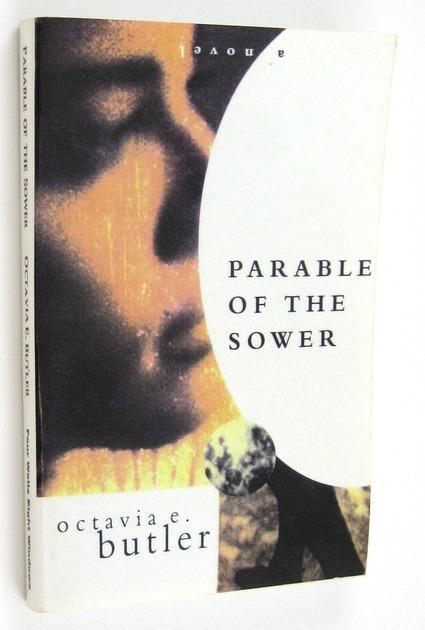
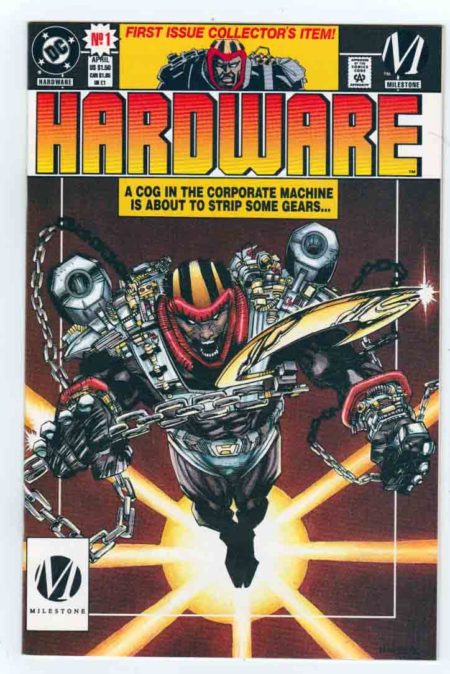
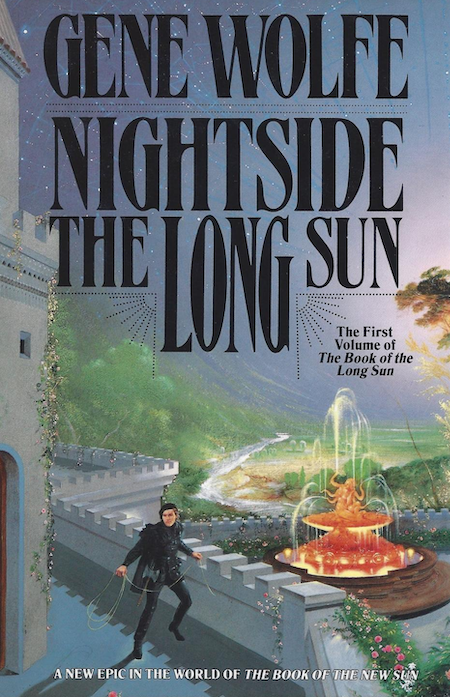
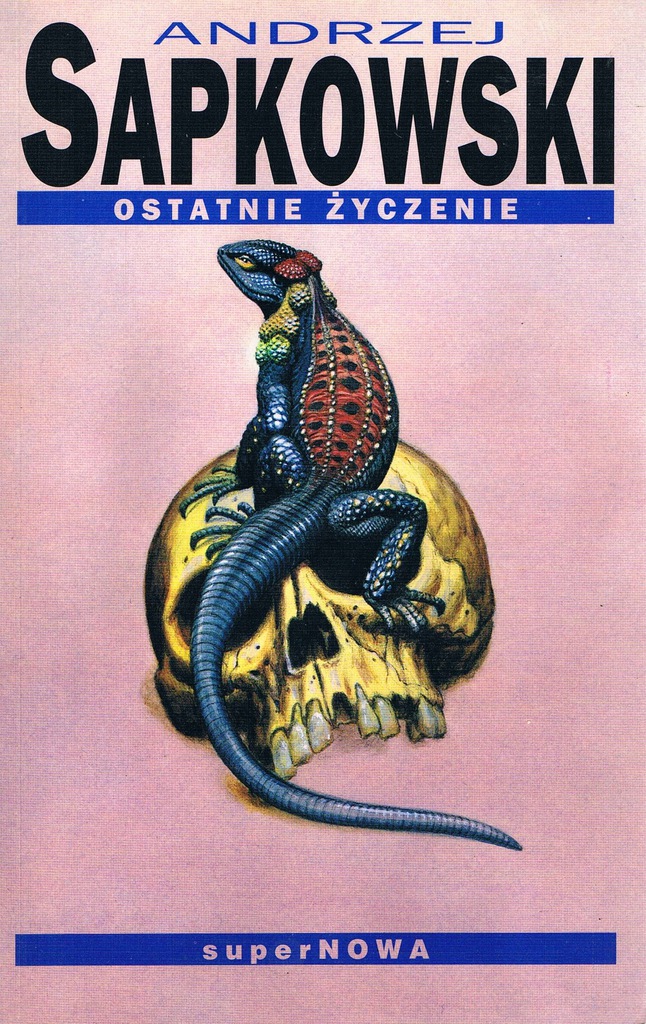
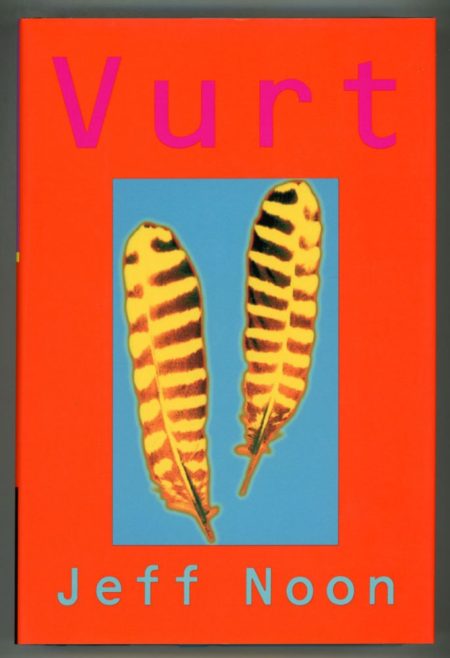
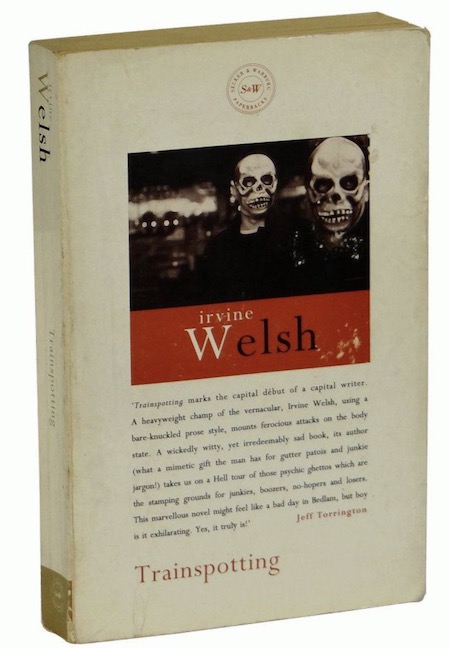
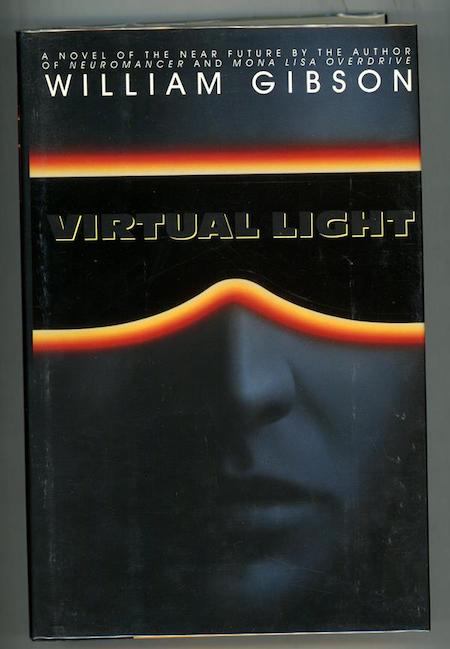
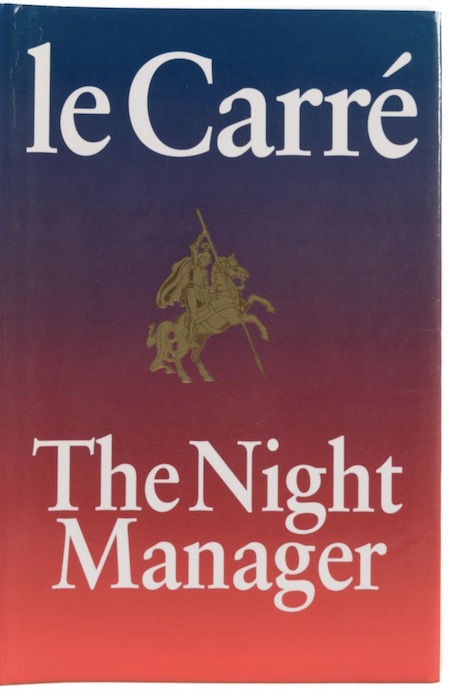
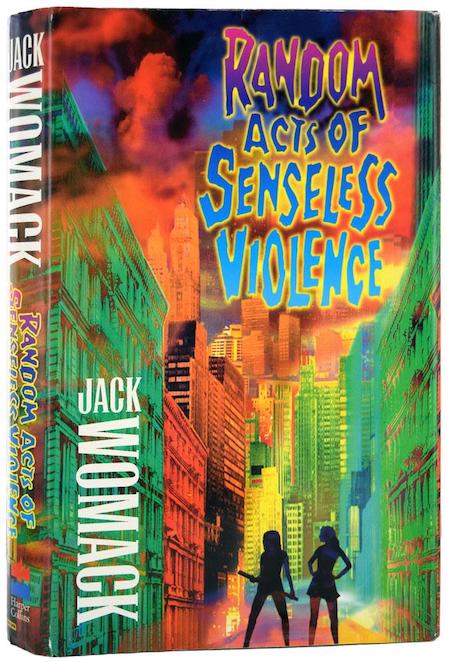
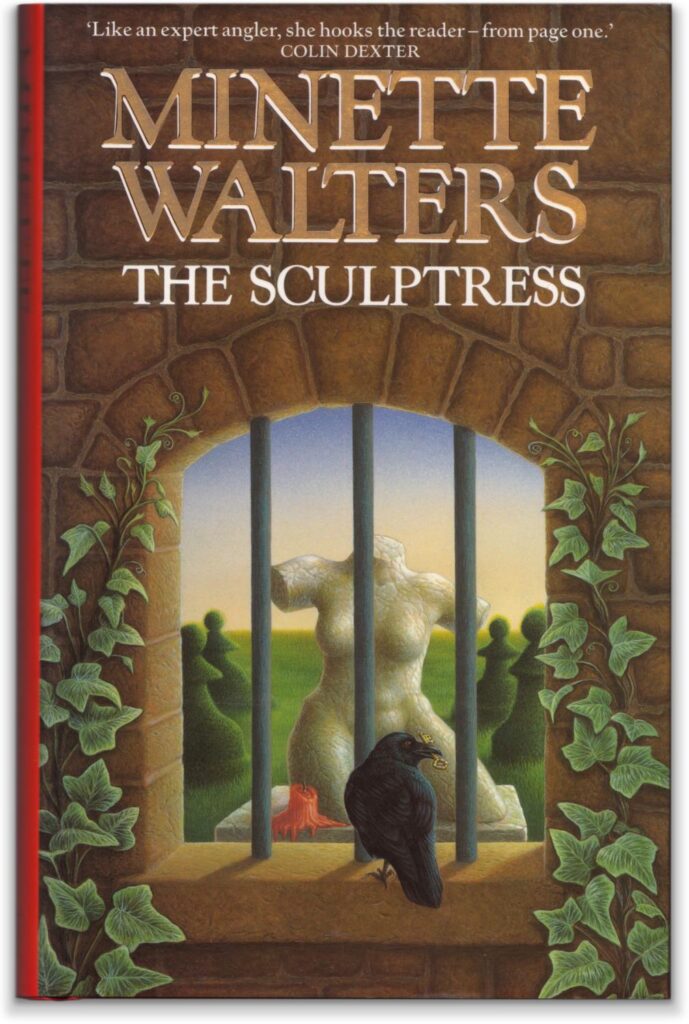
JOSH GLENN’S *BEST ADVENTURES* LISTS: BEST 250 ADVENTURES OF THE 20TH CENTURY | 100 BEST OUGHTS ADVENTURES | 100 BEST RADIUM AGE (PROTO-)SCI-FI ADVENTURES | 100 BEST TEENS ADVENTURES | 100 BEST TWENTIES ADVENTURES | 100 BEST THIRTIES ADVENTURES | 75 BEST GOLDEN AGE SCI-FI ADVENTURES | 100 BEST FORTIES ADVENTURES | 100 BEST FIFTIES ADVENTURES | 100 BEST SIXTIES ADVENTURES | 75 BEST NEW WAVE SCI FI ADVENTURES | 100 BEST SEVENTIES ADVENTURES | 100 BEST EIGHTIES ADVENTURES | 75 BEST DIAMOND AGE SCI-FI ADVENTURES | 100 BEST NINETIES ADVENTURES | 75 BEST HADRON AGE SCI-FI ADVENTURES.
